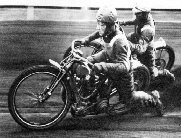
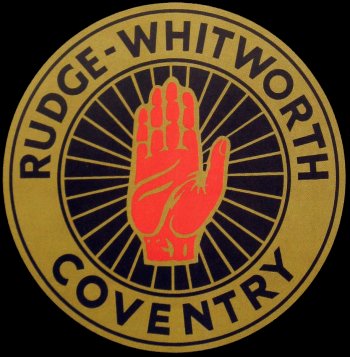
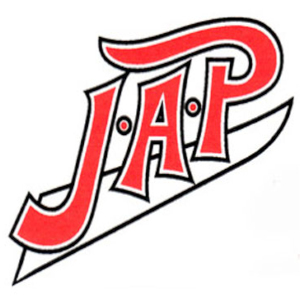


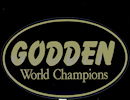

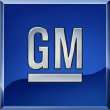 |
|
|
|
|
|
|
Miscellaneous
Part 1
|
|
|
|
|
Lee Richardson
Ray Taylor
Norrie
Isbister
Digging at the Starting Gate
Early Americans
NZ Smokey
Stratton
Speedway Toy
Riders
The 2 Stroke
Scott Machine
Scott's
Red Devil Frank Varey
Billy
Lamont
Harley Davidsons
American Board Tracks
Oldest Riders
Lady Riders
Ice Speedway
Slider Shuttleworth
Swindon's Red Devil Mike Broadbanks
The History of the Sport
Cec Warren's 1928
Scrapbook
|
|
|
|
|
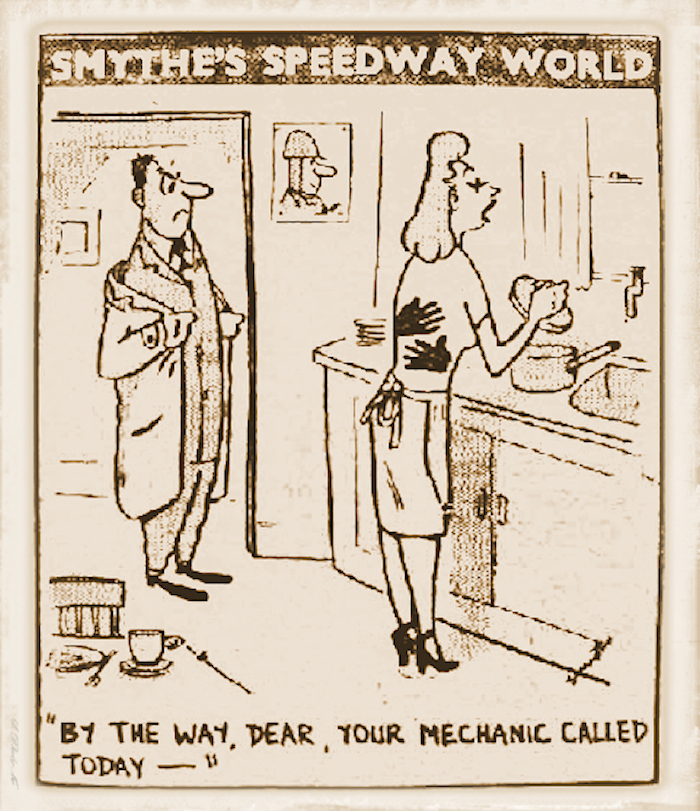 |
|
|
|
|
|
|
|
|
|
History of
Dirt Track
Speedway |
|
A
Short History
By Jeffrey Stafford.
Speedway racing is a sport with
an extraordinary history. According to Tom Stenner, speedway
correspondent of the London Daily Mail, the first speedway meeting
on a dirt track was held at Pietermaritzburg, in South Africa, in
1907. But it can be shown beyond a question of doubt that the
United States should be recognized as the birth place of motor
cycle racing. One of the principal features of the Butte Athletic
Associations meet in July 1901, were
motor cycle tandem races featuring Clem and Charles
Turville, Gust Lawson, and John Chapman. The track was constructed
of board and designed on the saucer principle by Captain T.O.
Angel who had successfully used the same design on cycle tracks in
Salt Lake and Los Angeles.
At Indianapolis, on Saturday
August 14 1909, two accidents, one of them serious, marred the
national motor cycle races. In the team mile professional race,
which Jake de Pozier, of Springfield, Mass, was going at a
terrific speed, the front tyre of his motor cycle tore off,
throwing him heavily to the ground. His injuries were not fatal
and he recovered later.
Nevertheless, there can be
little doubt that the evolution of Speedway as we know it today
took place in Australia. The sport of motor cycle racing that had
been popularized in America during the early part of the
nineteenth century featured a considerably variety of variations -
which were subsequently improved and standardized by a number of
Australian promoter’s to give us what is probably the most
exciting of all automotive sports.
A dirt track meeting was held
on Saturday, October 11 1913, under the auspices of the Victorian
Motor Cycle Club. The meeting was marred by the death of Harold
M'Coll who collided with a fence and was killed instantly. Another
rider, A.W.Maplestone had one of his shoulders dislocated. Twenty
seven riders competed in six events. As far as I can ascertain
Harold M'Coll was the first victim of a Speedway race in
Australia.
Nine out of ten speedway
historians credit Maitland showground in New South Wales as being
the birth place of speedway racing. However, the first Speedway
event, the one that perhaps marks the beginning of Speedway
proper, predates the Maitland event by eight years.
Here is an extract taken from the Saturday Referee, 6
February 1915:
Big Easter Carnival, which
should provide motor cycling enthusiasts with some fine sport. The
events ; 100 miles open state Championship; 600 c.c. State
Championship 66 miles ; open handicap 33 miles; and the club
handicap 33 miles. The meeting will take place at Gouldburn on
Easter Saturday, 3 April, 1915. Nor was the meeting just a one off
event, there was a very large attendance for the second motor
cycling meeting at Gouldburn held on Easter Saturday, 22 April,
1916. The big event of the 1916 Easter meeting was for machines of
all powers, over 100 miles. Of the twelve motor cycles which
started, six were Indians, four Excelsior’s, and two Harley
Davidsons. L. Frank, astride a 7 h.p. Harley Davidson, proved
victorious covering the 100 miles in 2 h 8 min 55 sec.
The Sale Easter Carnival, held
on Saturday, 19 March, 1921, represented the greatest attempt that
had then been made in Australia to put motor cycling on a solid
footing. The choice of Sale as the site for the meeting was made
for a variety of reasons.
When the sport began many
difficulties were placed in the way of those promoting it. In and
about the Metropolitan area of Melbourne and the outlying areas
the civic authorities refused to allow motor and motor cycling on
roads and the owners of the racecourses refused to allow them to
be used for motor cycle racing.
Sale offered sanctuary to motor
cycle enthusiasts. Its racecourse and roads were offered, and the
support that was forthcoming made the choice easy. The Sale
authorities not only recognized the sport, but officially invited
the Victoria Motor Club to hold its carnival in the town. For
motor cycle racing the only rival was the motordrome at the
amateur Sports ground, which in 1921 was not in site of
completion. One of the main features of the Sale Easter Carnival
was the appearance of two motor cycles that had been built
entirely in Australia.
There was never a more
successful motor cyclist in Australia than Charles "Daredevil"
Disney of Melbourne, known throughout Australia as the most
fearless motor cycle rider, he was able to win contest after
contest without losing what is commonly termed as "nerve control."
He was the son of one of the
Ministers in the 1924 Labour Government in Victoria. He started
his riding career in 1915, by winning a seven mile road race
gaining first and fastest time.
He started life as a furniture
maker, but when his brother returned from the war they became
partners in a motor cycle business. As a member of the South Yarra
Cycling Club, he achieved varied success over distances ranging
from 10 to 20 miles.
From the start of his career
Daredevil Disney only utilized Indian motor cycles due to the
speed and reliability for which the machines were famous. He knew
no fear. He was often accused of being a reckless rider, but he
never injured anyone or put anyone's life in danger.
He won his first motor cycle
race in 1919 - a five mile side car event. In the same year at the
Sale Easter Carnival he established himself as one of Australia's
best motor cycle riders by winning in the fastest time the Blue
Ribbon event for the road over 200 miles. Then came the Hopkins
Cup open race, and after that success on the Aspendale track,
reliability trials and jumping records. He held the Australian
long distance jumping motor cycle record, covering a distance of
54ft 6in in the leap. He became well known on the speed track as
the "Wizard of the Track," and "Daredevil Disney."
In March 1922, he lowered the
Adelaide to Melbourne motor cycle solo record on an "Indian"
Scout, by registering 16 hours and 14 minutes, breaking the recent
record set by Jack Quigley.
On Saturday February 21, 1925,
he sustained an injury to his knee while taking part in a
preliminary run at the Geelong racecourse, prior to racing against
the American Paul Anderson. He was hospitalized for some weeks at
Geelong before surgeons give up hope of saving his leg. Disney in
the end resigned himself philosophically to losing his left leg to
save his life. But that did not dismay him, after leaving hospital
he entered cycle races with an artificial limb strapped to the
foot rest.
Charles "Daredevil" Disney"
died on 5 July 1954, aged 77. He was cremated and his remains were
scattered at the Springfield Botanical Cemetery, Melbourne.
In 1922, John S. Hoskins, later
known as the prince of speedway promoters, was appointed Secretary
of the West Maitland Agricultural Society. At this time the
organization was in a bad way. Its membership over the years had
plummeted to about 300.
Hoskins tried all manner of
attractions - boxing, rodeos, and cycling - but nothing seemed to
grasp the attention of the public. Being a motor cycle rider
himself, with a number of riders, he approached the committee of
the Agricultural Society to ask permission to run a number of
motor cycle trials.
The members thought it was pure
madness, and told Hoskins he was taking a short cut to death. No
amount of persuasion could convince them that it would prove to be
a success and a good investment. Eventually, however, Hoskins got
his own way and with a rider named Billy Crampton, who was the
only one with an actual racing machine in N. S. W., a Norton, he
was allowed to give his idea a try out.
One member of the committee,
who was actually taken with Hogkins idea, watched over the fence
when Hoskins and Crampton were speeding around the track, and
later it was mainly through his imput that Speedway eventually
opened at Maitland. Construction of the speedway track at Maitland
commenced in October 1923, and the first Maitland Speedway meeting
was held on Saturday, November 1, 1924, for a double bill of motor
cycle and push bike racing. It was not a success. The push bikes
showed up the speed failings of the powered bikes they even
recorded better times. The track was very small, and of grass.
Under half a mile in circumference and thirty feet broad.
There was much hype for the
official opening of the first Maitland Speedway meeting held on
Saturday, October 17, 1925, when L. B. Meville, mounted on an h.p.
Harley Davidson, succeeded in winning the £100 Motor Cycle
Handicap. A princely sum in 1925. The attendance was estimated at
around 1300, and the number of riders in the motor cycle handicap
was a record, 77 starting. Since the close of 1924 the track had
been considerably reconstructed. Instead of two straight and four
bad turns where many falls had occurred in 1924, the track was
oval with a straight run in front of the main grandstand. The
track had also been widened from 30ft to 45ft, the banks at both
ends had been made very much higher, and a slight smaller
embankment had been built all-round the half mile track. There
were 28 races -- 23 for motor cycles and five for push bikes.
Apart from the normal speedway
meetings at Maitland, Speedway Carnivals were held throughout the
year to raise money for local charities. A speedway meeting was
held at the Maitland Speedway Carnival on Saturday, 21 February,
1925. In the final of the Championship race, a serious accident
occurred. George Kirkwood hit a fence, and another rider E. Buck
crashed into him. Buck escaped injury, but Kirkwood sustained a
compound fracture of the right leg, which was later amputated. He
also sustained many injuries to his head and body.
As a consequence of the terrible injuries received by
Kirkwood a safety rail, similar to the one at Speedway Royal was
erected.
George Kirkwood was 18 at the time of
his accident at Maitland; he was born on 22 April, 1907. He passed
away in NSW on 2 March, 1991, the month before his 84th birthday.
A letter from Mr. E. B.
Harkness, Under Secretary to the Chief Secretary of NSW to the
management of the Hunter River Agricultural and Horticultural
Association, criticizing the condition of Maitland Speedway track,
was published in the Maitland Daily Mercury, 15 May, 1925. The
following is a short extract from the letter:-
"It has been reported to the department, Mr.Harkness
stated, "that the speedway on the society's ground is, in its
present condition dangerous to riders. It had been presented,
moreover, that since motor cycle racing commenced there in 1924,
33 more or less serious accidents have occurred, resulting in
riders receiving, in several instances, injuries necessitating
surgical treatment."
There can now be little doubt
that the case for the start of dirt track racing at Maitland in
1923 cannot be maintained, and that dirt track racing on the
Maitland track did not commence until 1924.
In 1924 a number of Speedway
enthusiast held a number of private races on the Brisbane paddock.
In the course of time the grass surface became worn, but the
process was so gradual that the change from grass to dirt was
scarcely noticed. Then, when the riders learned to slide the
corners on the dirt surface speedway racing became more
spectacular. In 1925 - two brothers, A.J. and Frank Hunting, saw
the possibilities in dirt track racing, and engaged the paddock
riders from Brisbane to appear at the Exhibition Grounds, on
Saturday, 16 October, 1926. Brisbane. The five riders were Vic
Huxley, Frank Authur, Frank Pearce, Dick Smythe and Charlie
Spinks.
Speaking of the above, the
following extract is taken from a letter written by A. J. Hunter,
and published in "The Referee," 23 December 1937. His
reminiscences of the early days of dirt track racing are
interesting.
He states categorically that
the first grass track speedway was at West Maitland, but the first
genuine dirt track for speedway was laid down and constructed by
him at Davies Park, Brisbane in 1927 -- this track brought out the
rider’s ability and daring.
When the track in Brisbane was
nearly completed Hunter advertised the opening of the meeting
although he still didn't have any riders. All the well-known motor
cycle riders were skeptical, not one appeared willing enough to
give Hunter's dirt track riding idea a try. In despair, Hunter
took his idea to the Brisbane Motor Cycling Club and asked for
volunteer riders. A young man stepped forward called Frank Pearce,
and told Hunter he was willing to give it a go. Charles Spinks,
then a bricklayer, was the next to volunteer, and after him Vic
Huxley. Nine other riders soon followed -- but then the supply of
volunteers dried up. All the riders put in an appearance at the
opening of the Exhibition Grounds Brisbane, on Saturday 16
October, 1926.
The visit of the American rider
Cecil Brown, a fist class rider on any surface, raised the
standard in Australia considerably. He arrived in Australia with a
reputation as a great dirt track rider, but at Penrith he was
repeatedly beaten by Gus Clifton and Billy Conoulty. However he
soon mastered the tracks and developed into one of the best riders
in Australia.
The public began to flock to
Speedway meetings and new tracks began to spring up everywhere. A
track opened at Cessnock, and a year later Newcastle followed
suit. The first concrete track in New South Wales at Maroubra was
opened on Saturday, 5 December, 1925. Much interest was taken in
the Golden Helmet race with a prize of £30 and £10 per week until
the winner was defeated at a subsequent meeting. Cecil Brown was
crowned with the Golden Helmet and carried off the track shoulder
high. He won the Golden Helmet for the fifth time at the Olympia
Speedway track on Friday 2 April, 1926. His fastest lap was 93
m.p.h.
It could be argued that the
very first speedway meeting took place in New Zealand on 22
October 1923, at the Canterbury Racecourse, Christchurch. The
competition included the leading riders from all parts of New
Zealand. The races were run on a grass track, and very fast times
were recorded. The most successful rider was the well-known New
Zealand champion Percy Coleman, who made excellent time in winning
the all Powers Championship of 12 miles on his Harley Davidson.
On 9 March, 1929, dirt track racing was commenced at the
Kibirnie Stadium, Wellington.
Many speedway historians have
written about the history of the sport in England. Nine out of ten
credit High Beech in Essex as the birth place of English Speedway.
But there can be no getting away from the fact that the Moorside
dirt track at Droylsden predates the High Beech track by eight
months. Many youngsters in the North West got their first taste of
dirt track racing at Droylsden, it also paved the way for other
dirt tracks in the in the Manchester area like Audenshaw,
Stalybridge, New Mills ,Salford Albion,
White City and Belle Vue. According to the Australian
speedway promoter A.J.Hunting (Sydney Referee Dec 23 1937), he
helped lay down the track at High Beech. Mr. Hill Bailey, then
secretary of the Ilford Motor Cycle Club, introduced Hunting to
Mr. W.S.Cearns who asked Hunting if he would lay down a proper
track. The famous Australian Speedway promoter agreed and assisted
with the construction of the track. Two other Australians, Keith
McKay and Billy Galloway, helped to organize and participate in
the High Beech meeting.
Droylsden, unlike High Beech,
was an entirely local venture without any assistance from outside
sources. The meeting was organized by the South Manchester Motor
Club and local motor cycle dealer Fred Fearnley, on land owned by
George Dodd, a farmer from nearby Ashton Moss. The event was given
a license by the ACU for track racing, and the meeting went off as
planned on 25 July 1927. There is absolutely no doubt that the
Droylesden meeting was the pioneer of Dirt track racing in
England. The ground where the event took place should be
recognized by Tameside Council as a site of historical importance
Blue Plaque commemorating the site as the birthplace
of speedway racing in the UK. The plaque should be positioned as close to the original site of the track
as possible. If you agree, please take the time to write to:-
Arts and Events,
Tameside MBC,
Dukinfield Town
Hall,
King Street,
Dukinfield.
|
|
|
|
|
|
|
|
|
|
|
6 Riders USA |
|
|
 |
|
Courtesy of John Spoor |
|
|
|
|
|
|
|
|
|
|
1939 Book Cover |
|
|
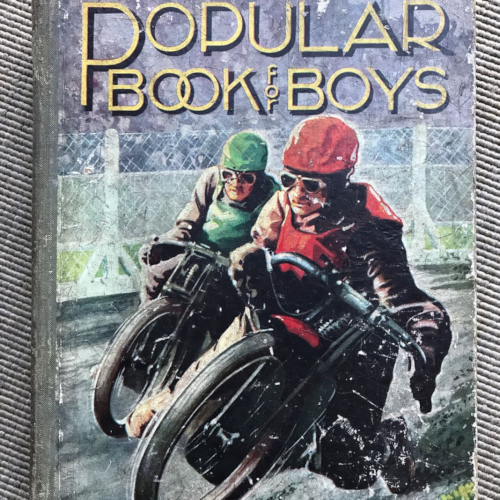 |
|
Courtesy of Lyndsey Skinner |
|
|
|
|
|
|
|
|
|
|
1938 Test Match At Harringay |
|
|
England & Australia
v
America & Canada |
| |
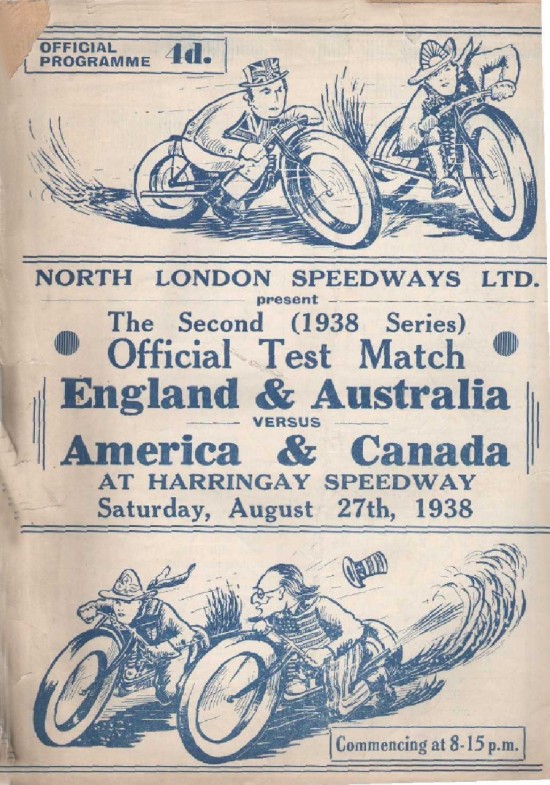 |
| |
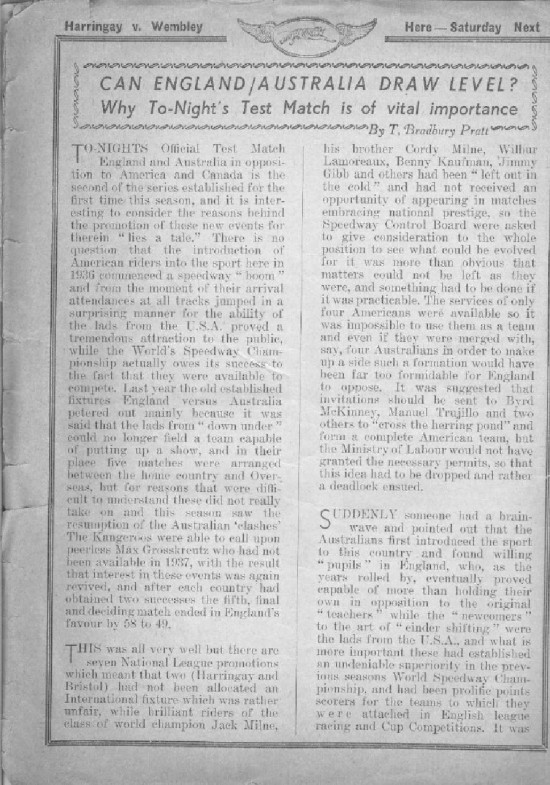 |
| |
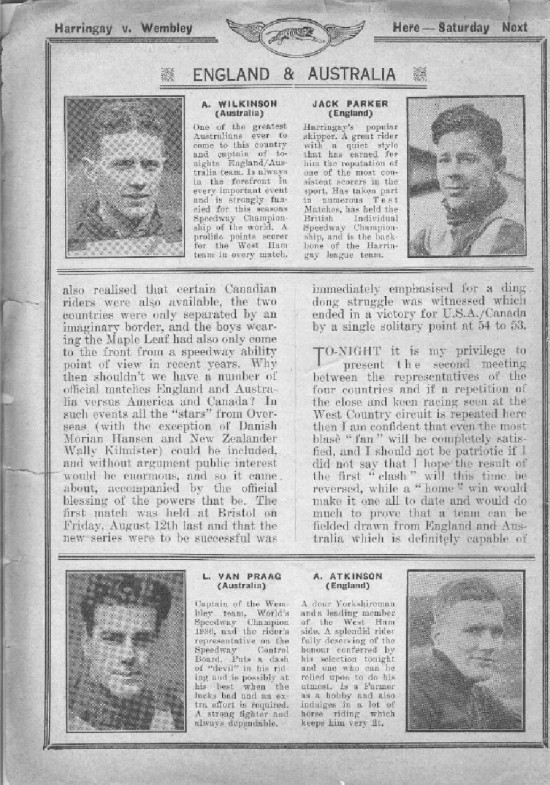 |
| |
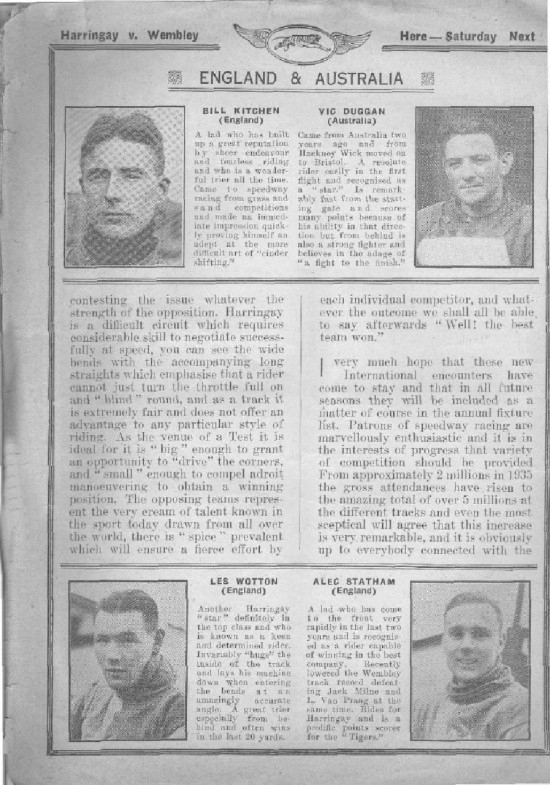 |
| |
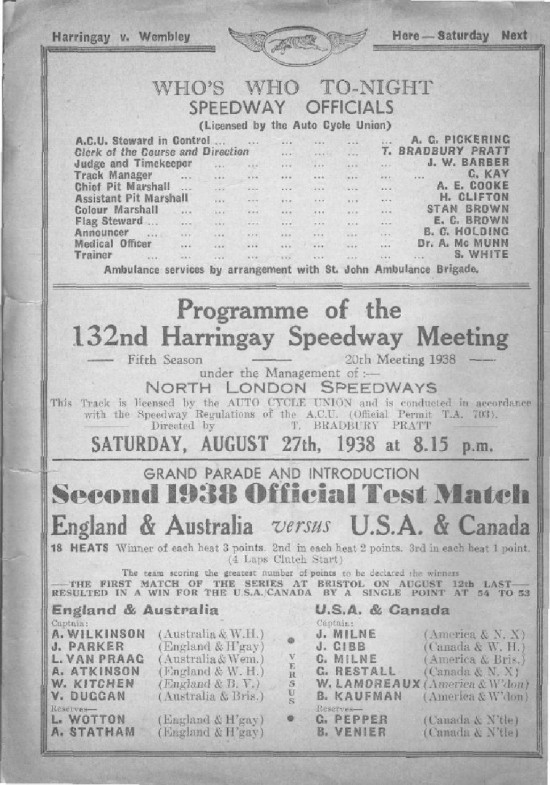 |
| |
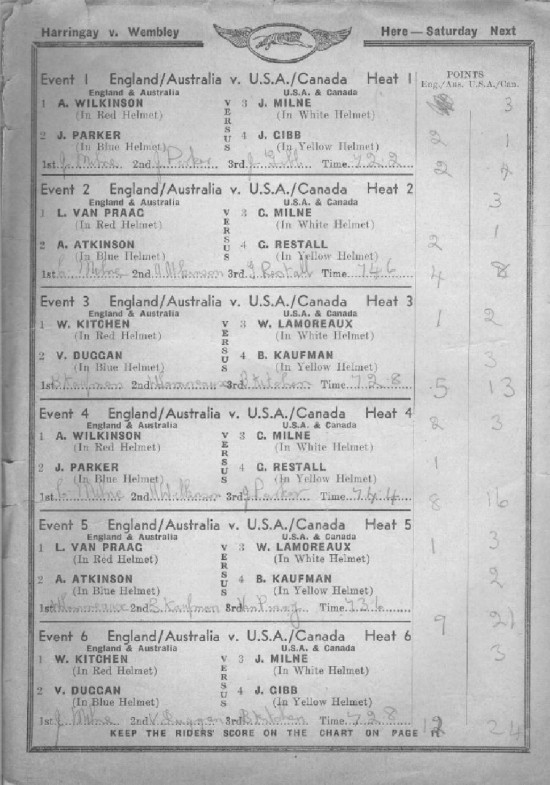 |
| |
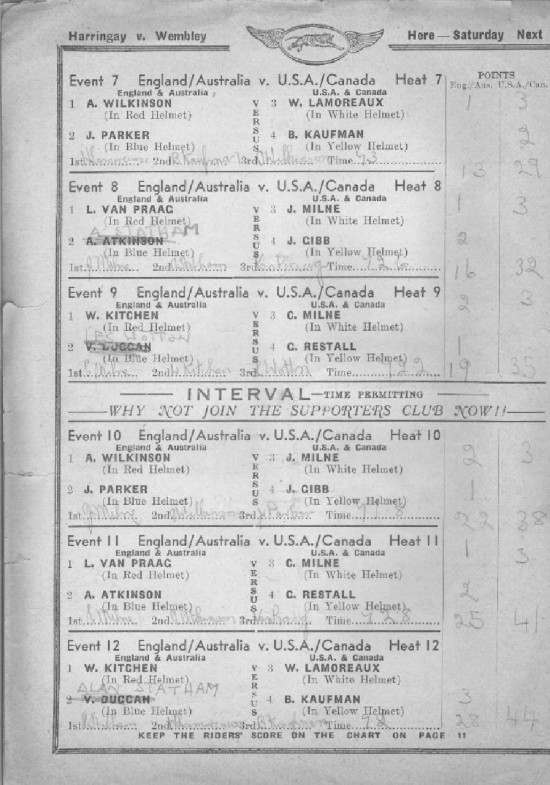 |
| |
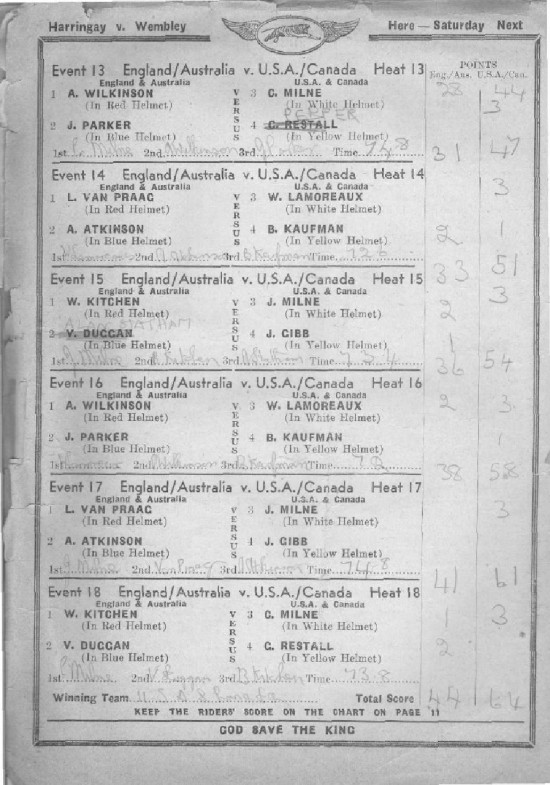 |
| |
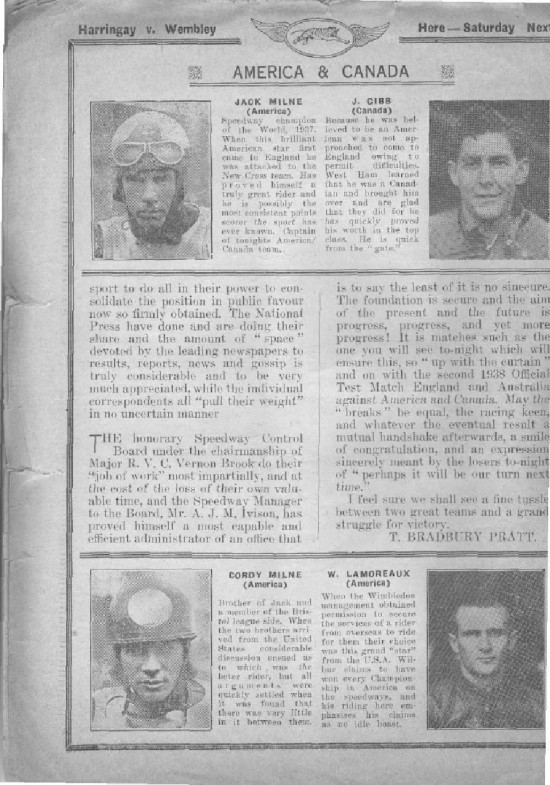 |
| |
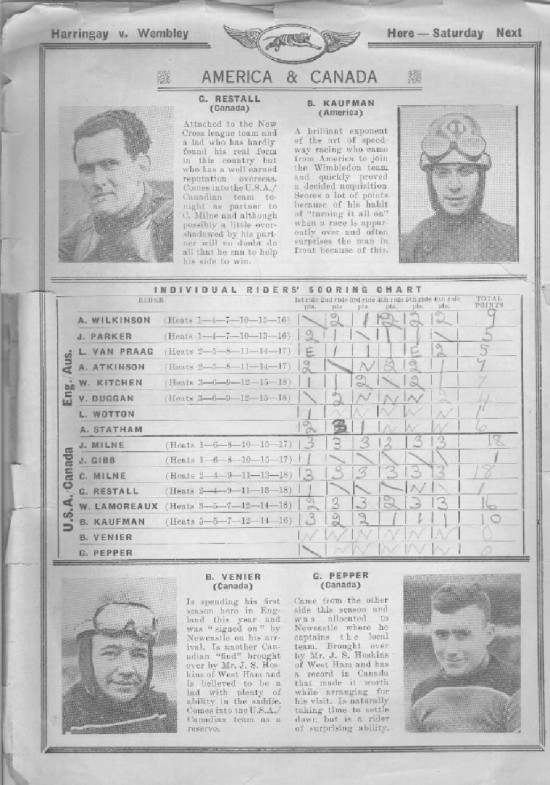 |
| |
| This meeting was dominated by the USA's
Milne Brothers who both notched 6 ride 18 point maximums.
The England/ Australia side had no-one to trouble the Milnes or
Wilbur Lamoreaux who notched 16 points |
|
|
| |
|
|
|
|
|
| |
| Letter From The BBC |
| |
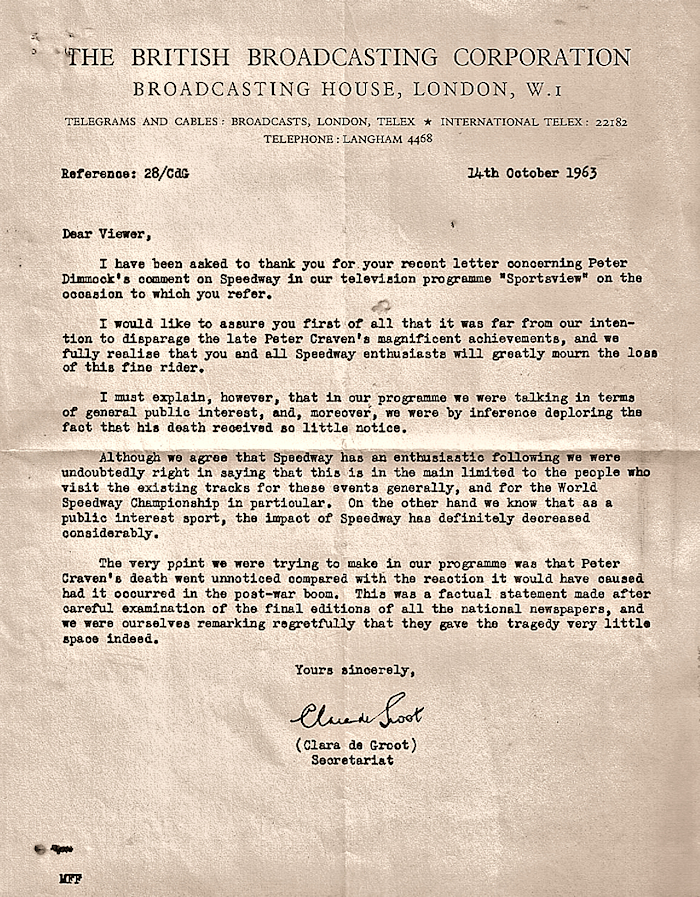 |
| Courtesy of Tom Roe |
| |
| |
| |
|
| |
| |
| |
| |
| Tasmanian |
| Reginald Aldgate West |
| |
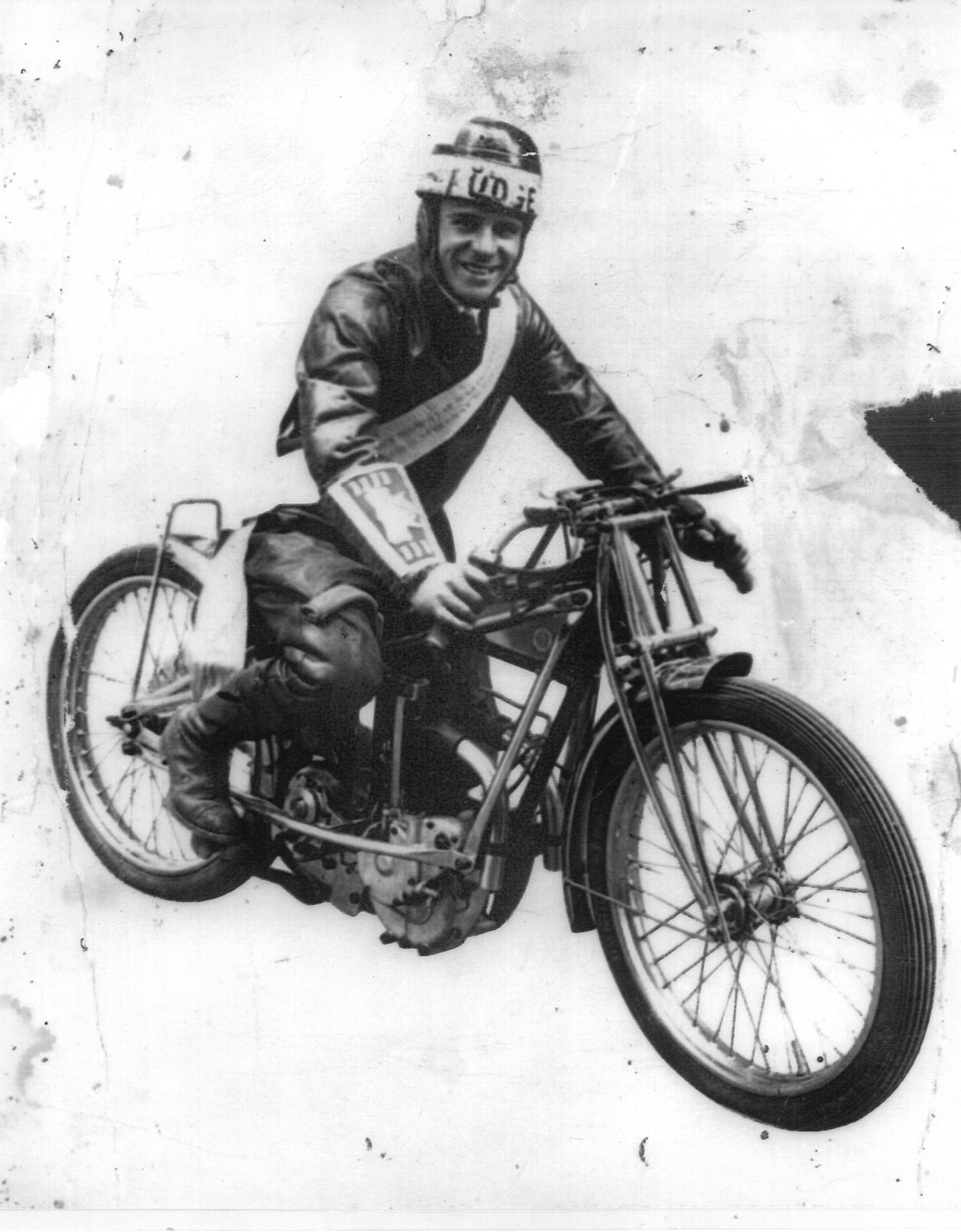
| Courtesy of Colleen Thorne |
| |
| Reg on his Rudge. The
Rudge Co had come up with a strong engine which could
compete with the Douglas and Harley Davidson's Peashooter.
The Rudge frame however was inherently weak hence the
strengthening struts on this one |
|
The rider pictured above is Reg West. His
daughter Colleen has been in touch as follows: - |
|
Would someone be able to help us
find out anything more on my father, Reginald Aldgate West. He was born in Tasmania but the
family moved from there to Melbourne. He travelled all over Australia racing he
was also known to have done some wrestling in his time.
|
I have a Photo of him having won a race on his motorbike wearing his winners
sash.
He was my father-in-law. We know very little of his racing career. |
| He travelled over to the UK with the Australian team to race at the Isle of
Man/Wight in the early 1930's. We believe he raced all over the UK. He never
went back to Australia. Seems he stopped racing at the start of the war. Could
have been from serious injury? |
| Any info would be great. Thanks
Colleen Thorne |
| John says: The bike is a Rudge so I
would put the picture at around 1928/1931? Can anyone supply info
on Colleen's father? |
| Bryan Tungate has
been in touch. He has "found" a Reg West in a 1939 Norwich programme |
|
3 June 1939 Norwich v Middlesbrough ...... 2nd half
races show .....
Reserve Race - Alex Lewis, Bert Hutson, Sid Hipperson,
Reg West, 81.0
Hellesdon Trophy Heat 4 - Reg West was replaced by Fred
Belliveau the 'borough reserve in this race.
|
|
Stuart Towner says : -The picture of Reg West would be 1928, well the bike
is. Rudge dropped the struts on the frame as they made the bike too stiff. Best wishes. Stuart Towner - Editor of the Rudge Enthusiasts Club
magazine, the Radial.
|
| John says: So let us accept that Reg was
sitting on an early Rudge possibly 1928 although it is possible
that Reg fitted the struts himself to a slightly later model.
Who knows! |
|
Colin Jewes says: Probably is a 1928 Rudge: Reg West rode at the
Melbourne Exhibition track, Victoria in 1928, where he won the Golden
Helmet there at least 3 times in Oct. & Nov. ‘28.
He also won the 2-Mile Australian Dirt Track championship at Melbourne
Exhibition, (possibly the same year, – unsure.) The above photo was used
in a press report of the day on his 2-Mile win.
|
| |
|
|
|
|
|
|
|
|
|
|
Ray "Broadside" Taylor |
|
|
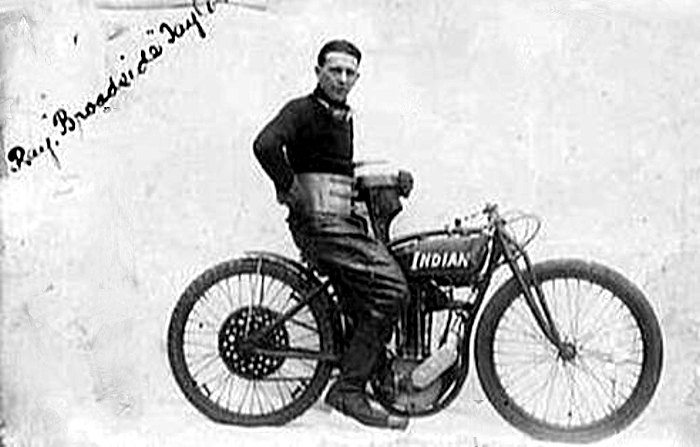 |
|
|
|
|
|
Hello John, I stumbled
over your website. Just a small file indexing newpaper
items regarding Ray Taylor’s speedway career 1930-1948
which are available on Trove newspaper archive on the web.
Most items (Clippings) are outlined in the attached index
file. This is only what I have and is in no way definitive
or complete. Hope this might help. Rob
|
|
|
Ray Taylor:
Newspaper articles.
Speedway year
1930
|
Month: January 1930
|
|
Date
|
Source News Article
|
track
|
Comments
|
|
27
|
Adelaide SA(Mon)
|
Royale
|
A Grade Handicap
|
|
Month: March 1930
|
|
Date
|
Source News Article
|
track
|
Comments
|
|
7
|
National Advocate
Bathurst(Fri)
|
Bathurst
|
Scratch Race
|
|
Month: April 1930
|
|
Date
|
Source News Article
|
track
|
Comments
|
|
21
|
Evening News Sydney(Mon)
|
Penrith. NSW
|
Riding a BT Special
|
|
22
|
Newcastle Times(Tue)
|
Penrith. NSW
|
Attempt Flying Speed Record on 350cc BT
Special bike
|
|
26
|
Nepean Times(Sat)
|
Penrith. NSW
|
10 seconds behind world Record at 55. 2-5
seconds. (-world- 45. Sec on 490cc Harley
Davidson)
|
|
|
|
Month: November 1930
|
|
Date
|
Source News Article
|
track
|
Comments
|
|
28
|
The Labour Daily Sydney(Fri)
|
Wentworth Park. NSW
|
Advax Gold Helmet
Handicap and
Teams Race
|
|
|
|
Month: December 1930
|
|
Date
|
Source News Article
|
track
|
Comments
|
|
5
|
Evening News Sydney(Fri)
|
Speeway Royal
|
Advax Gold Helmet heats
|
|
5
|
Sydney Morning Herald(Fri)
|
Speedway Royal
|
Advax Gold Helmet heats
|
|
18
|
The Sun. Sydney(Thur)
|
Speedway Royal
|
Advax Gold Helmet
Handicap race
|
|
21
|
The Truth. Sydney(Sun)
|
|
Consolation
Scratch race. Ray won
1st Place.
|
Ray Taylor:
Newspaper articles.
Speedway year
1931
|
Month: January 1931
|
|
Date
|
Source News Article
|
track
|
Comments/ Article
|
|
10
|
Evening News Sydney, NSW
|
Wentworth park
|
1st Heat. Advanx Gold Helmet
|
|
13
|
The Newcastle Sun
|
Newcastle Speedway
|
First appearance in Newcastle
|
|
14
|
The New Castle Sun
|
Newcastle Speedway
|
Upcoming Match Race
|
|
15
|
The New Castle Sun
|
Newcastle Speedway
|
Upcoming Match Race
|
|
16
|
The New Castle Sun
|
Newcastle Speedway
|
Appearance advert
|
|
23
|
The New Castle Sun
|
Newcastle Speedway
|
Appearance advert. For 1 Mile Championship
|
|
29
|
The Labor Daily Sydney
|
Wentworth Park
|
“Taylor gets his chance”
proved himself for the track
championship next Saturday
|
|
|
|
Month: March 1931
|
|
Date
|
Source News Article
|
track
|
Comments/Atticles
|
|
4
|
The Labor Daily Sydney
|
|
Handicap Race
|
|
|
|
|
|
|
Month: April 1931
|
|
Date
|
Source News Article
|
track
|
Comments
|
|
5
|
Truth Sydney
|
Parramatta Speedway
|
Gold Star Scratch Race .Heat 1. Flying start
over 3 laps. Heat 3. 1st place.
Parramatta handicap. Semi Final . 1st
place. Parramatta handicap Grand final. 1st
place.
|
|
15
|
Referee Sydney
|
Parramatta
|
Grand Final Thrilling event
|
|
Month: May 1931
|
|
Date
|
Source News Article
|
track
|
Comments
|
|
22
|
Labor Daily
|
|
Looking around bike shops with Manager Norm
Williams. Will be remembered for stunning
performances at Parramatta speedway.
|
|
Date
|
Source News Article
|
track
|
Comments
|
|
20
|
The Sun
|
Paramatta Speedway
|
Heat 5. Riding an Indian. Time 2 seconds.
|
|
|
|
|
|
|
Month: October 1931
|
|
Date
|
Source News Article
|
track
|
Comments
|
|
6
|
The Daily Telegraph Sydney
|
Parramatta Speedway
|
Spills frequent. Needed ambulance attendance
for abrasions to his knee. Lost Gold Star
final.
|
|
7
|
Referee Sydney
|
Paramatta Speedway
|
Narrowly defeated in Parramatta Handicap over
4 laps.
|
|
24
|
|
Paramatta Speedway
|
Parramatta Team Vrs Sydney Team. Selected for
Parramatta Team
|
|
25
|
Truth Sydney
|
Paramatta Speedway
|
Paramatta Handicap. 2nd heat 1st
place. 3rdsemi final 1st
place. A grade teams race 2nd place
in dead heat with Les Roy.
|
|
26
|
The Labor Daily
|
Paramatta Speedway
|
Paramatta Handicap 2nd heat 2nd
place.3rdsemi final 1st
place.
|
|
Month: November 1931
|
|
Date
|
Source News Article
|
track
|
Comments
|
|
5
|
The Cumberland Argus and Fruit Growers
Advocate. Parramatta
|
Parramatta Speedway
|
Race cancelled due to wet weather will be
brought forward to next Saturday.
|
|
8
|
Truth Sydney
|
Parramatta Speedway
|
Third semi final for the Parramatta Handicap.
1st place.
|
|
16
|
The Cumberland Argus and Fruit Growers
Advocate. Parramatta
|
Parramatta Speedway
|
As below(both newspapers reported same race
and placings.
|
|
17
|
Newcastle Sun
|
Parramatta Speedway
|
Final Paramatta Handicap won by Len Roy with
Ray in second place.
Flying scratch race. Heat 4. 1st
place.
|
|
22
|
Truth Sydney
|
Parramatta Speedway
|
Big Twelve Scratch Race. 1st place
|
|
26
|
The Cumberland Argus and Fruit Growers
Advocate. Parramatta
|
Parramatta Speedway
|
Big Twelve Scratch Race. 1st place
|
|
Month: December 1931
|
|
Date
|
Source News Article
|
track
|
Comments
|
|
15
|
Daily Telegraph Sydney
|
Wentworth Speedway
|
To race next Saturday for the Track
Championship
|
|
16
|
Labor Daily
|
Wentworth Speedway
|
As above
|
|
18
|
The Sun Sydney
|
Wentworth Speedway
|
Flying nine scratch race
|
|
18
|
Daily Telegraph
|
Wentworth Speedway
|
Flying nine scratch race. Heat 3.
|
|
19
|
Daily Telegraph
|
Wentworth Speedway
|
Advert for the above race on Saturday night
|
|
20
|
Truth Sydney
|
Wentworth Speedway
|
Speedway season opened. Showed he was a real
broardside artist 1 second outside the record
Wentworth Handicap 3rd heat. 1st
place.
|
|
Month: December 1931 continued
|
|
20
|
Truth Sydney
|
Wentworth Speedway
|
Covered 4 laps in 1 min 18 seconds. Just 3-5
of a second short of track record
|
|
21
|
Sydney Morning Herald
|
Wentworth Speedway
|
Crowd of 6000 applauded his handling of his
bike when the back tyre came off to win as
above
|
|
24
|
The Sun Sydney
|
Wentworth Speedway
|
Advertisement. 3 heat match next Saturday
|
|
26
|
The Daily Telegraph Sydney
|
Wentworth Speedway
|
Advertisement. 3 heat match next tonight.
|
|
27
|
Sun Sydney
|
Wentworth Speedway
|
Flying nine scratch race final. 1st
place. Broke Van Praag’s record by 4-5
seconds.
|
|
28
|
National Advocate Bathurst
|
Wentworth Speedway
|
As above. His time in 3 laps in 55. 4-5
seconds. Has challenged Van Praag for the
Track Championship next Saturday Proved
himself the greatest find on the dirt track
this season.
|
|
29
|
Labor Daily Sydney
|
Wentworth Speedway
|
Clipped 1 3-5 of a second from a rolling start
|
|
30
|
The Sun Sydney
|
Wentworth Speedway
|
Proved himself and a new track star. Will
compete for the best 3 heats of 2 laps from a
standing start.
|
|
31
|
Brisbane Courier Qld
|
Wentworth Speedway
|
As above. Proved a star with 17 second average
per lap and thought to have broken other
records-not stated.
|
|
31
|
Sydney Morning Herald-Sydney
|
Wentworth Speedway
|
Australian Motor Cyclists Union impressed with
his performance.To contest the scratch mark
and compete against Van Praag in Championship
Trophy.
|
1931 to 1935, Paris,
France.
An Anglo-French promotion syndicate ran an annual Dirt
Track “ Championnat du Monde” (World Championship,)
for five years at the Buffalo Velodrome, Paris between
1931 and '35. The format usually comprised 9 riders
drawn from Europe and the UK scene, (3 per race,)
across 13 heats, Semi's and Finals.
Ray,
now
known
as
Ray “Broadside” Taylor was
22 years of age and although a relative beginner
starting his official racing career only over the past
year, he was lauded for his performance at Wentworth
Park Speedway during the season of 1931 and considered
a new find and a crowd pleasing rising Star of the
dirt track.
Ray’s riding standard, wins and broadside skill was
such that he had narrowly defeated the distinguished
Len Roy and was given the opportunity to compete
against Australian Champion Lionel Van Praag
who recently returned from successfully competing in
England.
Ray Taylor:
Newspaper articles.
Speedway year
1932
|
Month: January 1932
|
|
Date
|
Source News Article
|
track
|
Comments/ Article
|
|
2
|
Daily Telegraph Sydney
|
Wentworth Park Speedway
|
Advertisement. Lionel Van Praagvrs Ray Taylor.
Half mile Championship. Tonight
|
|
3
|
Truth Sydney
|
Wentworth Park Speedway
|
Half mile match championship. Van Praag 1st
Ray Taylor 2nd place
Rider Norman Thompson crashed in front of Van
Praag in pervious race and Lionel was shaken.
|
|
4
|
Daily Telegraph Sydney
|
Wentworth Park Speedway
|
Ray beaten in 2 straight heats as above by Van
Praag
|
|
4
|
Newcastle Morning Herald and the Miners
Advocate
|
Wentworth Park Speedway
|
As above four riders came down although none
injured in race.
|
|
5
|
|
Parramatta Speedway
|
Ray vrs Bios Blumfield tomorrow. Last
Wednesday Ray beat Jack Hollis in 2 straight
heats.
|
|
8
|
The Daily Telegraph
|
Wentworth Park Speedway
|
Allowances framed for the Wentworth Park
Handicap.
|
|
9
|
Daily Telegraph Sydney
|
Wentworth Park Speedway
|
Advertisement for thrilling team tests
tonight.
|
|
Month: January 1932
|
|
Date
|
Source News Article
|
track
|
Comments/ Article
|
|
9
|
Unknown to date.
|
Wentworth Park Speedway
|
|
|
10
|
Truth Sydney
|
Wentworth Park Speedway
|
Ray placed 2nd to Wilson in 3rd
Test heat.
|
|
16
|
The Sun Sydney
|
Wentworth Park Speedway
|
Big 9 scratch race Ray to meet Cyclone Mookey
and Dick Sulway.
|
|
16
|
Labor Daily
|
Wentworth Park Speedway
|
As above. Ray wins Flying nine scratch race
|
|
19
|
Labor Daily
|
Wentworth Park Speedway
|
|
|
21
|
Cumberland Argus and Fruit Growers Advocate
|
Parramatta Speedway
|
Ray Taylor Excels. Won heat and semi final.
|
|
23
|
The Sun Sydney
|
Wentworth Park Speedway
|
Ray challenged Van Praag in a Match race for
the half mile championship.
|
|
Month: January continued 1932
|
|
Date
|
Source News Article
|
track
|
Comments/ Article
|
|
23
|
The Daily Telegraph Sydney
|
Wentworth Park Speedway
|
As above. Ray challenged Van Praag in a Match
race for the half mile championship.
|
|
24
|
The Sun Sydney
|
Sydney Royale
|
Ray challenged Van Praag and lost against Van
Praag in straight heats last night
|
|
24
|
The Sun Sydney
|
Wentworth Park Speedway
|
Van Praag retained his title against Ray who
lost.
|
|
26
|
The Advertiser Adelaide SA
|
Sydney Royale
|
Ray to race in an interstate teams match
|
|
27
|
Referee Sydney
|
Paramatta Speedway
|
|
|
27
|
Referee Sydney
|
Paramatta Speedway
|
Taylor Shines. 5 wins from 5 starts
|
|
28
|
News Adelaide
|
Speedway Royale
|
Advertisement. Gala night. Ray Broadside
Taylor, Paddy Dean, Jack Hollis
|
|
28
|
News Adelaide
|
Speedway Royale
|
NSW Riders to compete. Ray Taylor will compete
against Arnold Hansen.
|
|
28
|
Cumberland Argus and Fruit Growers Assoc
|
Paramatta Speedway
|
Taylor victorious. Won 2 straight heats.
|
|
28
|
Cumberland Argus and Fruit Growers Assoc
|
Paramatta Speedway
|
Taylor excels.
|
|
29
|
News Adelaide
|
Speedway Royale
|
NSW Riders to compete against South
Australians. Ray Taylor holder of the NSW
Wentworth Park Track Record will compete
against Arnold Hansen
|
|
30
|
|
Speedway Royale
|
Advertisement
|
|
|
|
|
|
|
Month: February 1932
|
|
Date
|
Source News Article
|
track
|
Comments/Articles
|
|
1
|
Adelaide Advertiser (Thurs)
|
Speedway Royale Adelaide
|
Ray lost to Jack Chapman on Saturday.
|
|
4
|
Unknown (pending)
|
As above
|
Another big leap. Ray made 1st
appearance at Adelaide Speedway on Saturday
deemed as one of the most spectacular riders
seen in this state for some time. Will appear
with Jack Hollis and Paddy Dean.
|
|
6
|
The Age Melbourne
|
Exhibition Speedway Melbourne
|
Ray to make his debut.
|
|
6
|
News Adelaide
|
Speedway Royale
|
Ray struck the back of Dick Wise in the 1st
lap of the 3rd heat and fell.
|
|
10
|
Referee Sydney
|
Speedway Royale
|
Ray disqualified by Stewards for interference
with Wise.
|
|
13
|
Mail Adelaide
|
Speedway Royale
|
Australian Championship over 1-mile Rays bike
conked out. Interstate handicap over 3 laps
from a flying start and won by 40 yards. 1st
place in the 1st heat. Special
Match Race 1st
Place.
|
|
15
|
Advertiser Adelaide
|
Speedway Royale
|
Ray and Paddy Dean run a close race as Ray
gained the inside and finished first by only a
few yards.
|
|
16
|
Labor Daily Sydney (Tues)
|
Wentworth Park Speedway
|
Half mile challenge won by Van Praag. He has
beaten Ray twice.
|
|
17
|
Referee Sydney
|
Wentworth Park Speedway
|
Ray fell foul of the Stewards in Adelaide. No
finer Rider at Wentworth track and is a treat
to see him mowing the markers on the straight.
However, he seems a little on the reckless
side.
|
|
24
|
Sporting Globe Melbourne (Wed)
|
Speedway Royale
|
In special Matches on Saturday night, Ray won
the Consolation Scratch Race from Fearson and
Ras Lee. Lost International Handicap Final to
Applebee. Also running were Con Bartelanier
and Max Grosskreutz.
|
|
25
|
The Age Melbourne
|
Exhibition Speedway Melbourne
|
Ray to make his debut in Victoria. There will
be Scratch Races between nine selected riders.
|
|
26
|
The Herald Melbourne (Fri)
|
Exhibition Speedway Melbourne
|
NSW and Victorian teams to meet. Ray, world
record breaker over three laps on the quarter
mile flat track is to be opposed by Lionel
Davy Victoria’s international rider and holder
of the 4 lap Exhibition record.
|
|
26
|
The Herald Melbourne (Fri)
|
Exhibition Speedway Melbourne
|
Victorian half mile championship held over 3
heats on Saturday.
|
|
Month: February continued1932
|
|
Date
|
Source News Article
|
track
|
Comments/Articles
|
|
27
|
The Herald Melbourne (Fri)
|
Exhibition Speedway Melbourne
|
Ray Taylor the NSW dirt track champion will
meet Lionel Davey in a special match race. Ray
holds the world title for quarter mile flat
track. Will leave for England next month
|
|
27
|
The Age Melbourne
|
Exhibition Speedway Melbourne
|
Advertisement. Half Mile Match Championship.
Big Mile scratch race. Dare Devil Curtis
enveloped in flames will leap from his 110ft
ladder.
|
|
29
|
The Argus Melbourne.
|
Exhibition Speedway Melbourne
|
Davey-Victoria defeats Taylor New South Wales.
Over three heats and Ray fell in the last lap
of each heat. Reason being that he had never
had an opportunity to practice on the dirt
track prior to the race
|
|
|
|
|
|
|
Month: March 1932
|
|
Date
|
Source News Article
|
track
|
Comments/Articles
|
|
2
|
Sporting Globe Melbourne (Wed)
|
Exhibition Speedway Melbourne
|
Davey Supreme. Ray had bad luck to fall near
the finish of each heat.
|
|
5
|
Sporting Globe Melbourne (Wed)
|
Exhibition Speedway Melbourne
|
Ray and Paddy Dean will represent NSW in team
matches.
|
|
5
|
The Herald Melbourne
|
Exhibition Speedway Melbourne
|
As above
|
|
9
|
Sporting Globe Melbourne
|
Exhibition Speedway Melbourne
|
NSW teams to meet Vic teams-as above tomorrow
night
|
|
12
|
Border Watch SA
(Sat)
|
Notice item
|
Ray going to England shortly. Photo.
|
|
16
|
Kalgoorlie Miner
Western Australia (Wed)
|
Notice item
|
As above
|
|
19
|
The Daily News (Sat)
|
Notice item
|
As above
|
|
22
|
Western Argus (Tues)
|
Notice item
|
As above
|
|
Month: March continued 1932
|
|
Date
|
Source News Article
|
track
|
Comments/Articles
|
|
23
|
Referee Sydney (Wed)
|
Exhibition Speedway Melbourne
|
Max Graham brought down from NSW but
experienced same as Ray engine troubles and
borrowed mounts.
|
|
|
|
|
|
Month: April 1932
|
|
Date
|
Source News Article
|
track
|
Comments
|
|
2
|
News Adelaide (Sat)
|
On route to England
|
Going to compete at the Wembley Speedway in
England, Ray Taylor, dirt track rider, who
took part in the recent Australian
Championship meeting in Adelaide, is a
passenger on the Morton Bay from Sydney. The
boat will leave outlet harbour on Monday.
|
|
4
|
News Adelaide (Mon)
|
On route to England
|
Speedway Men avoid customs duties. Ray and
Ernie Fox and mechanic Martin Barry are on
their way to Wembley. With small prize money
in Australia customs duties on bikes is too
expensive. Motor cycles are to be purchased in
England. They will not have to pay landing
duties when returning home.
The men will leave late tonight.
|
|
4
|
The Canberra Times (Mon)
|
Queanbeyan Club Carnival
|
Ray entered to ride. (Possibly prior to travel
arrangements??)
|
|
14
|
The Cumberland Argus and Fruit Growers
Advocate. Thurs)
|
Parramatta Speedway
|
Philip and Mervyn Atkins of Windsor Road
Northmead impersonating Ray Taylor and Frank
Weldrick of Parramatta speedway fame, awaiting
the starters signal at the charity’s carnival,
they won first and second prizes for the” best
advertising costumes” section
|
|
27
|
English record
|
Owlerton, Sheffield
|
The rider in these events is named “Goeff”
Taylor. And it is suspected by the writer that
it might be a mistake for “Ray” who apparently
had just arrived in England. In any case it is
decided to include the event with very
reasonable confidence.
|
|
|
|
|
|
Australian Cigarette Card
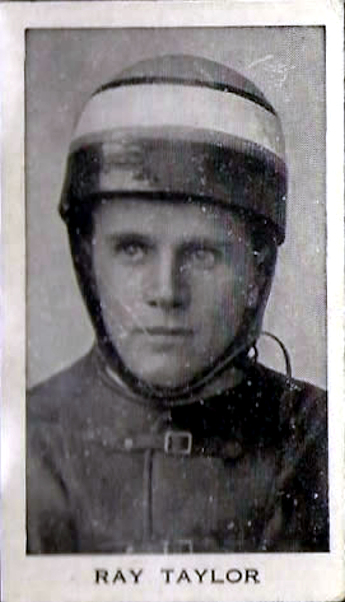 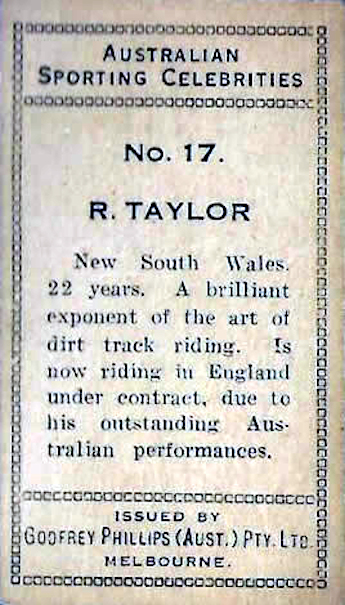
|
|
|
Month: May1932
|
|
Date
|
Source News Article
|
track
|
Comments
|
|
|
|
|
|
|
11
|
England record
|
Owlerton, Sheffield
|
Owlerton Scratch race. Geoff (Ray) 2nd
in heat 1.
|
|
|
|
|
|
|
12
|
Records
|
Plymouth
|
Ray rode for “Overseas” against English
“Homeland” team ran 2nd in 4th
heat.
|
|
18
|
NSA National League records
|
Owlerton, Sheffield
|
Ray rode for South Hampton in the
National League Trophy. Heat 7. 2nd
place and one fall.
Sheffield won 34to19 points. Ray rode on same
day Speedway Trophy heat 1.
4th place.
|
|
|
|
|
|
|
21
|
Recorded item
Reference-attached documents
|
Possibly Owlerton, Sheffield
|
Saturday 21 May 1932.
Bellevue 34 defeated South Hampton 12.
(National League NSA Trophy) Ray (South
Hampton) fell in heat 4.
|
|
|
|
|
|
|
Month: June1932
|
|
Date
|
Source News Article
|
track
|
Comments
|
|
1
|
Recorded item-National League Trophy
(The Saints / Lea Bridge team)
|
Clapton, London
|
Wednesday 1 st June 1932 Clapton, London.
The
Saints 22 Stamford Bridge 31 (National
League NSA Trophy)
4th places in heats 3 and 7. Ray
(Rode as The Saints for Lea Bridge)
fell in the 7th heat. Note:
In contrast the opening league match at Lea
Bridge attracted 12,000. This marked the
revival of Gus Kuhn 3 2 2 7 the track after a
period of closure because of allowing betting.
The name of the team had not been Arthur
Warwick 3 2 1 6 decided at this stage so they
rode as "The Saints" and kept the Southampton
light blue colours
|
|
|
|
|
|
|
9
|
Recorded item-National League Trophy
|
Brandon, Coventry
|
Thursday 9th June 1932 Brandon, Coventry
Coventry 23 Lea Bridge 29 (National League
NSA Trophy)
Ray in 4th place after a fall.
|
|
|
|
|
|
|
Month: June continued1932
|
|
Date
|
Source News Article
|
track
|
Comments
|
|
|
|
|
|
|
22
|
England record
|
Clapton, London
|
Wednesday. Reserves scratch race. Ray 2nd
in heat 2.
|
|
|
|
|
|
|
26
|
National league record
|
Plymouth
|
Tuesday. Ray rode for Plymouth. 3rd
in heat 3. 4th in heat 5 (Fall) 4th
in heat 7. Chain broke.
|
|
|
|
|
|
|
27
|
National league record
|
Clapton, London
|
Monday. Ray rode for Clapton. Ray rode for
Clapton. National League. Clapton was defeated
by Wimbledon 33-19. Ray 4th in heat
6. 3rd in heat 8.
|
|
|
|
|
|
|
29
|
Recorded item-
National Trophy England
|
London, Clapton
|
Wednesday 29th June 1932 Clapton, London
Clapton 22 was defeated by Crystal Palace
Glaziers 32 (National League) Ray 2nd
place in the reserves scratch race final.
|
|
|
|
|
|
|
Month: July
1932
|
|
Date
|
Source News Article
|
track
|
Comments
|
|
|
|
|
|
|
12
|
Recorded
|
Plymouth
|
Homeland vrs Overseas.
Ray placed 2rd in heat 4 and 2nd
in heat 13.
|
|
|
|
|
|
|
23
|
Labor Daily
|
Item only
|
|
|
Month: July
continued 1932
|
|
Date
|
Source News Article
|
track
|
Comments
|
|
|
|
|
|
|
26
|
Recorded National League
|
Plymouth
|
Tuesday 26 July. (National League)
Plymouth vrs Wembley
Ray (Plymouth) 3rd in heat 3, 4th
in heat 5 and fell, 4th in heat 7
with a broken chain.
The track could have been better prepared and
did not lend itself to good racing.
|
|
|
|
|
|
Month: August 1932
|
|
Date
|
Source News Article
|
track
|
Comments
|
|
|
|
|
|
|
4
|
Recorded
National League
|
Pennycross, Plymouth
|
Thursday 4th August 1932 Pennycross, Plymouth
Plymouth 32 defeated West Ham 18 (National
League) Ray (Plymouth) 4th
place in heat 1 and 3rd in heat 6.
|
|
|
|
|
|
|
9
|
Recorded National League
|
Pennycross, Plymouth
|
Tuesday 9th August 1932. Plymouth
31 defeated Coventry) 22 (National League)
Ray 4th in heat 1 and 4th
in heat 6. Heat 6 - Tims and Ray fell
independently near the end of the race. They
both pushed home vying with each other for the
final point. Arthur Tims won the pushing race!
|
|
|
|
|
|
|
11
|
Recorded National League
|
Pennycross, Plymouth
|
Thursday. Wembley defeated Plymouth 27-24. Ray rode for
Plymouth. 3rd in heat 1. 3rd
in heat 4.
|
|
|
|
|
|
|
15
|
The Cumberland and Fruit Growers Advocate
|
Article item only
|
IN ENGLAND-extract
“Young Ray Taylor the dirt track rider who
rode at the Parramatta Speedway last season,
has been putting up some wonderful
performances in England, defeating the British
Champion, Jack Parker a few weeks ago and
breaking some records over there. Ray is a
favorite with speedway fans for his daring
racing and good sportsmanship when racing. In
a recent letter he would like to be remembered
to all his speedway supporters, and that he
intends bringing some “hot” motors home when
he returns from overseas”.
|
|
|
|
|
|
|
16
|
Recorded National League
|
Pennycross, Plymouth
|
Tuesday 16th August 1932 Pennycross, Plymouth
Plymouth
33defeated Clapton 20 (National League)
Ray 1st place in heat 8.
|
|
|
|
|
|
|
18
|
Recorded National League
|
Pennycross, Plymouth
|
Thursday 18th August. (National
League) Coventry 34 defeated Plymouth 18.
Ray (Plymouth) 3rd in heat 4 and 3rd
in heat 7.
|
|
|
|
|
|
|
20
|
Recorded National League
|
Pennycross, Plymouth
|
Saturday 20 August 1932. Bellevue vrs
Plymouth. (National League) Bellevue 35
defeated Plymouth 15.
Ray (Plymouth) excluded from heat 4 for false
start and 3rd place in heat 5
|
|
|
|
|
|
|
Month: August continued 1932
|
|
Date
|
Source News Article
|
track
|
Comments
|
|
29
|
Recorded National League
|
Pennycross, Plymouth
|
Monday 29 August 1932. Wimbledon 33.5 defeated
Plymouth 22.5. (National League)
Ray(Plymouth) 4th place heat 1.
Eric Collins was a real star for Plymouth at
this time and was at the top of his form. He
beat Dick 4 Jack Jackson 0 0 1 1 Case on his
own track in heat 2. His battle with Vic
Huxley in heat 8 was brilliant speedway 5 Bert
Spencer E 2 2 4 and Eric only lost out on the
last lap after leading all the way
|
|
|
|
|
|
|
Month: September 1932
|
|
Date
|
Source News Article
|
track
|
Comments
|
|
|
|
|
|
|
1
|
Recorded
Challenge Match
|
Pennycross, Plymouth
|
Thursday 1st September 1932 Pennycross,
Plymouth
Plymouth 21 West were defeated by West Ham
Hammers 32 (Challenge) Ray (Plymouth) 1st
in Heat 1, 4th in heat 4 and 3rd
in heat 7.
|
|
|
|
|
|
|
2
|
Arrow Sydney
|
Item. Great Season Promised.
|
Australians played a big part in the English
season. Frank Auther, Vic Huxley, Max
Groskrents. Billy Lemont who has been away for
some years. Another success was Ray Taylor who
rose from obscurity last year and finished by
being one of the finest drawcards in the game.
|
|
|
|
|
|
|
3
|
Labor Daily Sydney (additional enlarged copies
attached)
|
Plymouth Speedway and Lea Bridge
|
Due to leave England in early October to
compete for the Ashes against England. He has
done extremely well. Annexed Gold helmet at
Plymouth defeating Frank Varey in the final
and Eric Langdon, the English test team
Captain.
Beat Jack Parker, the British Champion.
Reported to be bringing home one of the
fastest machines in England. This together
with one of the latest racing outfits.
|
|
|
|
|
|
|
Date
|
Source News Article
|
track
|
Comments
|
|
|
|
|
|
|
13
|
Recorded National League
|
Pennycross, Plymouth
|
Tuesday 13 September 1932. Plymouth 19 was
defeated by Crystal Palace 32. (National
League) Ray (Plymouth) 3rd in
heat 9.Eric Collins was right off form
suffering from tonsilitis. A big blow for
Plymouth. This meeting was rained off from the
previous Tuesday.
|
|
|
|
|
|
|
14
|
Recorded National League
|
Pennycross, Plymouth
|
Wednesday 14th September 1932 Clapton, London
Clapton 36 defeated Plymouth 18 (National
League)
Ray (Plymouth) 3rd in heat 3, 3rd
in heat 6 and 2nd in heat 9.
|
|
|
|
|
|
|
20
|
Recorded National League
|
Pennycross, Plymouth
|
Tuesday 20th September 1932.
Plymouth 22 lost to 32 Wimbledon. (National
League)
Ray (Plymouth) in 4th place in heat
3 after fall. 4th in heat 5 Lamont
and Jackson also fell. Lamont, Jackson and Ray
were in a 3 way pile up in heat 3. Bill
injured his chin. Ray was back on and tried
for second but Dick Case lapped him.
|
|
|
|
|
|
|
27
|
Recorded National League
|
Pennycross, Plymouth
|
Tuesday 27 September 1932. Plymouth 30
defeated Stamford Bridge 22. (National
League)
Ray
scored 1 point and no place.
|
|
|
|
|
|
|
Month: *October 1932
|
|
Date
|
Source News Article
|
track
|
Comments
|
|
|
|
|
|
|
|
|
|
|
|
|
*Records for this English season month are
unknown. Ongoing
|
|
|
|
Month: November 1932
|
|
Date
|
Source News Article
|
track
|
Comments
|
|
4
|
Arrow Sydney
|
Item only
|
Ray on way back to Australia. Had a good year
but did not get into the Australian Test Team.
He is bringing back a JAP Machine and several
fast motors.
He became a flying enthusiast while away and
has a pilot’s ticket.
|
|
|
|
|
|
|
5
|
Labor Daily
|
Item only
|
As above. Bringing back a motor used in his
winning the gold and silver gauntlets in
England. Ray has been taking flying lessons
while down in Plymouth and hope to continue
flying at Mascot. He was asked to sign up for
a new speedway just opened in America but
turned it down due to commitments in
Australia.
|
|
|
|
|
|
|
8
|
The Daily Telegraph (Thurs)
|
Photo Only
|
Ray pictured on bike
|
|
|
|
|
|
|
12
|
West Australian (Sat)
|
Item only
|
Ray arrived in Perth yesterday on the Lars Bay
from London. Details of English team races on
attached sheet.
|
|
|
|
|
|
|
12
|
Labor Daily
|
Item only
|
Ray had seven weeks consecutive riding at
Wentworth speedway this season his most
impressive performances however were at the
Paramatta track.
|
|
|
|
|
|
|
18
|
Arrow Sydney (Fri)
|
Item only
|
Ray had a successful season in England winning
the Golden helmet and Silver Gauntlet. 22
riders competed in the English Championship in
which Ray finished 3rd.He is
bringing back the latest JAP machine.
|
|
|
|
|
|
|
Month: November continued1932
|
|
Date
|
Source News Article
|
track
|
Comments
|
|
18
|
As above
|
As above
|
Ray returned on 11 November of that year on
the ship Balranald. Also on board were dirt
track riders, Bert Spencer, Maurice Bradshaw,
S.W. Lipton, Eric Collins, Charlie Spinks and
S.C. Stratton. Ray showed wonderful
improvement since he went abroad and played no
small part in the Test matches in which he was
a member of the Australian team.
|
|
19
|
The Labor Daily Sydney (Sat)
|
Item only
|
Ray arrives home next Monday. He is bringing
something very “Hot” in the way of a motor.
|
|
21
|
Age Melbourne (Mon)
|
Exhibition Speedway
|
Much interest was taken in the “Mystery Rider”
|
|
22
|
The Daily Telegraph (Sydney Tue)
|
Wentworth Park
|
Ray who returned from England this week will
compete for the first time this season.
|
|
23
|
Sporting Globe (Melbourne Wed)
|
Exhibition Speedway
|
Ray to made his debut in the presence of
several thousand onlookers. He was announced
as the “Mystery Rider” Defeated by Ernie Evans
in two straight heats who gave a good display.
Ray had engine trouble in both heats.
|
|
24
|
The Advertiser Adelaide (Thurs)
|
Item only
|
Ray and Jack holis will feature at the
speedway on Saturday night
|
|
25
|
The Sun (Sydney Fri)
|
Wentworth Park
|
Taylor vrs Hollis
|
|
26
|
The Daily Telegraph (Sydney Sat)
|
Wentworth Park
|
Advertisement. Ray vrs Jack Hollis tonight.
Ray just returned from England where he
defeated Eric Langdon winner of the British
individual championship in straight heats at
Pyymouth.Ray also won the Golden Helmet and
Silver Gauntlet on the same track.
|
|
Month: November continued 1932
|
|
Date
|
Source News Article
|
track
|
Comments
|
|
26
|
The Sydney Morning Herald
|
Wentworth Park
|
Rays first appearance when he meets Hollis.
|
|
27
|
The Sun Sydney
|
Wentworth Park
|
Large attendance and good riding in the
international event
|
|
28
|
The Labor Daily
|
Wentworth Park
|
Ray defeated by Jack Hollis in straight heats.
|
|
28
|
National Advocate (Bathurst Mon)
|
Wentworth Park
|
As above. Jack Hollis defeated Ray by half a
wheel. (1 metre ?)
|
|
|
|
|
|
|
Month: December 1932
|
|
Date
|
Source News Article
|
track
|
Comments
|
|
2
|
Arrow Sydney (Fri)
|
Remarks only as written in article “Cinders
from the dirt track”
|
Rays remarks to the Lads.”
InEngland
the JAPs are the only things on the Tracks. I
took a fast motor of a different make to
Plymouth and the boys came across and enquired
kindly where I thought I would get the speed
from. Dirt Track racing in England is an
absolute business. Every day riders who are
permanently attached to a track go through a
physical culture drill for an hour or two, and
then put in some solid practice on the course.
England is no place for an ordinary class
rider. Stars can make good money, but there
are so many of the average quality men in
England that outsiders cannot make a crust”.
Quite an unassuming chap Taylor, and he thinks
that local Lads have a good chance with the
Champions coming along with Jack Hoskins. We
sincerely hope your right, Ray.
|
|
Month: December continued 1932
|
|
Date
|
Source News Article
|
track
|
Comments
|
|
2
|
Arrow Sydney (Fri)
|
As above
|
Rays defeat by Jack Hollis was partly due to
engine trouble. Dave Brewster his mechanic
said his motor was not performing up to JAP
standards. Gone is the wild man who didn’t
care about fences or crashes a year or two
years ago. Who also answered to the name
Taylor in his place is a heady rider who, on a
speedy track should be well worth seeing?
|
|
7
|
The Daily Telegraph Sydney (Wed)
|
Wentworth Park
|
Ray will be seen in action in the Gold Helmet
scratch race which includes all local stars.
|
|
9
|
Arrow Sydney (Fri)
|
Wentworth Park
|
Possible team match Royale and Wentworth being
arranged. Ray is a member of the Wentworth
quartet team
|
|
9
|
The Daily Telegraph (Sydney Fri)
|
Wentworth Park
|
Ray to compete in the Golden Helmet scratch
race on Saturday offering the biggest prize
money.
Match race between Bobbie Blake the unbeaten
match Champion of the season and Ray.
|
|
10
|
The Sydney Morning Herald (Sat)
|
Wentworth Park
|
As above.
|
|
10
|
The Daily Telegraph
|
Wentworth Park
|
As above
|
|
11
|
Truth (Sydney)
|
Wentworth Park
|
Ray mentioned previously beating Bobbie Blake
in the gold star match race
|
|
12
|
The Sydney Morning Herald (Mon)
|
Wentworth Park
|
Bobbie Blake won from Ray in the first heat
but Ray beat him in the second and third heats
|
|
15
|
The Daily Telegraph (Thurs)
|
Royale
|
Mention of Blakes defeat of Ray. (but no
mention of Ray’s wins)
|
|
20
|
The Sun (Sydney Thurs)
|
Wentworth Park
|
Wentworth and Royale teams match should
provide some excitement on Saturday.
|
|
Month: December continued 1932
|
|
Date
|
Source News Article
|
track
|
Comments
|
|
21
|
The Daily Telegraph (Wed)
|
Wentworth Park
|
Artie Fenn who won the Gold Helmet will oppose
Ray. Fenn is riding at the top of his form and
Ray is reproducing his best.
|
|
22
|
The Daily Telegraph (Thurs)
|
Wentworth Park
|
Ray to race as part of the “Flying Twelve”
|
|
23
|
The Sun (Sydney Fri)
|
Wentworth Park
|
As Above
|
|
24
|
The Sydney Morning Herald (Sat)
|
Wentworth Park
|
Improved arrangement at the Track. Ray and
Arnie Fenn to match race.
|
|
24
|
The Daily Telegraph (Sat)
|
Wentworth Park
|
As above tonight
|
|
27
|
The Sydney Morning Herald
|
Wentworth Park
|
The gold star match was won by Ray. His
opponent Arnie Fenn fell in the final heat.
|
|
28
|
National Advocate (Bathurst Wed)
|
Wentworth Park
|
Arnie Fenn beat Ray in the match race and Ray
challenged for a rerun but Fenn beat him again
in the final heat.
|
|
29
|
The Sun (Sydney Thurs)
|
Wentworth Park
|
Good line up of Riders. Considered one of the
best on Saturday
|
|
31
|
The Daily Telegraph (Sat)
|
Wentworth Park
|
Benefit Carnival for the family of Bert
Brenman popular rider of the Wentworth Team.
Flying Fifteen to contest as well as country
and International riders. Ray to ride.
|
Ray left for England boarding the ship, Morton Bay
during the evening of the 4th April 1932
just ten days before his 23rd birthday and
returned on 11 November of that year on the ship
Balranald. Also on board were dirt track riders, Bert
Spencer, Maurice Bradshaw, S.W. Lipton, Eric Collins,
Charlie Spinks and S.C. Stratton.
National League Averages 1932
| Rider |
Team |
M |
Mx |
Pa |
Ra |
Pts |
Bon |
Ave |
| Ray Taylor |
Plymouth |
12 |
|
|
24 |
14 |
2 |
2.67 |
| Ray Taylor |
Southampton Saints |
3 |
|
|
8 |
2 |
0 |
1.00 |
| Ray Taylor |
Lea Bridge |
5 |
|
|
11 |
2 |
0 |
0.73 |
The above table is copied from the internet although sources
from 1932 records the dates were not listed and other
details defined.
Rays Bike "Daisy"
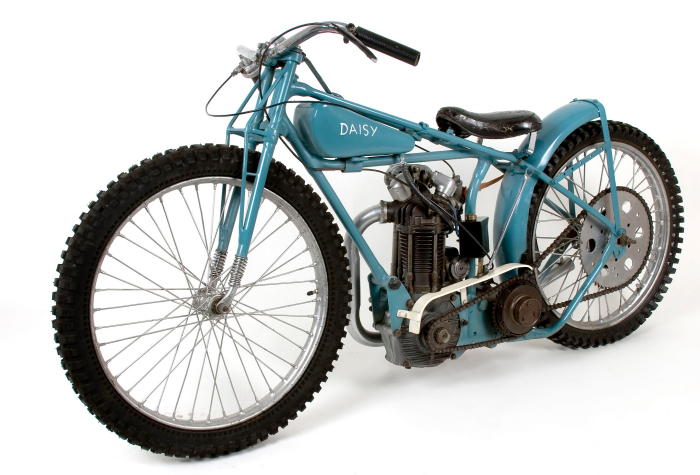
Ray Taylor:
Newspaper articles.
Speedway year
1933
|
Month: January 1933
|
|
Date
|
Source News Article
|
track
|
Comments/ Article
|
|
1
|
The Sun (Sydney Sun)
|
Wentworth Park
|
Gold Helmet scratch race. 3 Laps . Heat 1. Ray
1st. Second semi final Ray 2nd
place.
|
|
2
|
The Sydney Morning Herald(Mon)
|
Wentworth Park
|
As Above. Ray riding 495cc Rudge Withworth.
|
|
4
|
Referee (Sydney Wed)
|
Wentworth Park
|
As above. Ray showed plenty of dash and gave
the winner Blake a great ride.
|
|
5
|
The Labor Daily (Thurs)
|
Wentworth Park
|
International Match Race Ray mentioned.
|
|
6
|
The Daily Telegraph (Fri)
|
Wentworth Park
|
Ray riding in scratch race.
|
|
7
|
The Sydney Morning Herald
|
Wentworth Park
|
Preliminary to selection of Australian Test
Team to meet England decided tonight. Ray to
ride. Additional match race will include Ray.
|
|
8
|
The Sun (Sydney Sun)
|
Wentworth Park
|
Ray beaten in Gold Star race.
|
|
9
|
Sydney Morning Herald (Mon)
|
Wentworth Park
|
As above. Ray 2nd place to Jack
Hollis
|
|
12
|
The Daily Telegraph (Thurs)
|
Wentworth Park
|
Ray will be a starter for the Gold Helmet on
Saturday night.
|
|
14
|
The Lobor Daily (Sat)
|
Wentworth Park
|
As above.
|
|
15
|
Truth Sydney
|
Wentworth Park
|
As above. Ray in 2nd place in the
Wentworth Handicap run 4 laps in final heat.
|
|
16
|
The Sydney Morning Herald(Mon)
|
Wentworth Park
|
As above.
|
|
20
|
Arrow (Sydney Fri)
|
Wentworth Park
|
Ray having a bad spin. His motor is not
performing up to the standard he presented on
his return from England. His riding is up to
standard but the “horses” are not there. He
fell on Saturday but lucky not hurt.
|
|
21
|
The Sydney Morning Herald (Sat)
|
Sydney Royale
|
England team vrs NSW. Ray reserve and will
contest the scratch race.
|
|
25
|
Referee Sydney(Wed)
|
Item only
|
Ray visited boxers Carnera and O’Malley
|
|
26
|
The Brisbane Courier(Thurs)
|
Sydney Royale
|
As on 21st.
|
|
Month: January continued 1933
|
|
Date
|
Source News Article
|
track
|
Comments/ Article
|
|
27
|
Arrow Sydney(Fri0
|
Sydney Royale
|
As 21st.
|
|
|
|
|
|
|
Month: February 1933
|
|
Date
|
Source News Article
|
track
|
Comments/Atticles
|
|
|
Arrow Sydney (Fri)
|
Sydney Royale
|
London to meet NSW Team but Ray not included.
|
|
9
|
New Castle Sun (Thurs)
|
Sydney Royale
|
England vrs Australia. Ray 2nd
place in heat 16.
|
|
10
|
Arrow Sydney
|
Sydney Royale
|
Ray not mentioned
|
|
|
Truth Sydney (Sun)
|
Sydney Royale
|
4th Test England and Australia.
Bobbie Blake seriously suffering head
injuries. International scratch race Ray only
rider to finish. Final heat Ray won 1st
place.
|
|
13
|
Sydney Morning Herald (Mon)
|
Sydney Royale
|
As above more detail.
|
|
15
|
The Sun Sydney (Wed)
|
Sydney Royale
|
World Championship.EnglandVrs Australia.
Ray team member alongside Van Praag,
Wilkinson, Frank Arther, Bill Lamont, Max
Grosskreutz and Dick Smythe.
|
|
19
|
Truth Sydney(Sun)
|
Sydney Royale
|
Ray had a lucky escape in the 12th
heat. He fell opposite the grand stand and his
machine was in front of him. He was not hurt,
|
|
24
|
Northern Star Lismore NSW(Fri)
|
Local item
|
Ray referenced only
|
|
Month: March 1933
|
|
Date
|
Source News Article
|
track
|
Comments
|
|
5
|
Truth Sydney (Sun)
|
Sydney Royale
|
Jack Hollis unconscious after crash. World
Speedway Championship. NSW Vrs The Rest Heat
1. Ray in NSW Team 1st place. Heat
1 (second heats) 3rd place. Final
score. 38-21 NSW Team defeated
|
|
6
|
Sydney Morning Herald (Mon)
|
Sydney Royale
|
Hard to read but detailed account of Saturdays
NSW Vrs The Rest and Rays point score.
|
Month: March 1933 continued
|
|
Date
|
Source News Article
|
track
|
Comments
|
|
7
|
National Advocate Bathurst (Tue)
|
Not sure
Bathurst?
|
Ray mentioned for previous nights point score
and will be riding tonight.
|
|
8
|
National Advocate Bathurst (Wed)
|
Bathurst?
|
Ray Champions Scratch Race. Ray second to
Bluey Wilsenson in 1st heat.
|
|
8
|
Labor Daily Sydney(Wed)
|
Sydney Royale
|
Ray reserve foe the Australian Team vrs
England.
|
|
10
|
Arrow Sydney(Fri)
|
Sydney Royale
|
The Rest beat NSW Team. 29 to 23. Ray ticked
up 4 points for NSW.
|
|
11
|
The Sydney Morning Herald(Sat)
|
Sydney Royale
|
Fifth and final test between England and
Australia tonight. Also a 3 corner
international race Ray Australia, D Lloyd
England and Ray Tauser USA.
|
|
12
|
The Sun Sydney (Sun)
|
Sydney Royale
|
England defeated Australia in the final test.
52 to 43. Ray 2nd place in the
International match race Heat 1. Ray 1st
place in heat2. Ray International Match Race
Champion.
|
|
13
|
Labor Daily Sydney. (Mon)
|
Sydney Royale
|
As above. Ray showed better form than when
called for reserve for the above test. Winning
as above.
|
|
15
|
Sporting GlobeMelbourne (Wed)
|
Sydney Royale
|
As above. Ray stood in for Van Pragg and
finished a fine 2nd to Wally Little
in the fifth Australia/England Test match
heat.
|
|
16
|
Labor Daily Sydney(Thurs)
|
Wentworth Park
|
No mention of Ray
|
|
17
|
The Daily Telegraph Sydney
|
Wentworth Park
|
Ray in Conten…… Scratch Race tomorrow night.
|
|
19
|
The Sun Sydney (Sun)
|
Wentworth Park
|
Ray 1stplace Heat 5. Wentworth
Handicap and 2nd place in the Ares
Handicap. Heat 2 with Van Praag win.
|
|
22
|
The Sun Sydney (Wed)
|
Wentworth Park
|
Principal event a 3 corned match race with Ken
Kirkman, Artie Fenn and Ray.
|
|
22
|
Sporting Globe Melbourne (Wed)
|
Wentworth Park
|
As above Acres Scratch Race -Ray beaten by
Wally Little by a wheel.
|
|
24
|
The Daily Telegraph Sydney(Fri)
|
Wentworth Park
|
Match racing will feature tomorrow night.
Wally Little to match Ray Again. Winners to
meet following Saturday.
|
|
24
|
The Sun Sydney(Fri)
|
Wentworth Park
|
Advertisement. Ray vrs Wally Little
|
|
25
|
The Sun Sydney(Sat)
|
Wentworth Park
|
As above.
|
|
|
|
|
|
|
Month: March continued 1933
|
|
Date
|
Source News Article
|
track
|
Comments
|
|
26
|
The Sun Sydney(Mon)
|
Wentworth Park
|
Wentworth Handicap. Heat 1.Little beat Ray for
second place. Semi Final Heat 2 A Fenn beat
Ray for second place. Final Ray scored 1st
place. Ray was overall winner. Ray also won
the Match race against Wally Little.
|
|
27
|
Labor Daily Sydney(Mon)
|
Wentworth Park
|
As above. Ray and Wally Little showed great
performance. Little had fastest time overall
and had mechanical trouble.
|
|
|
|
|
|
|
Month: April 1933
|
|
Date
|
Source News Article
|
track
|
Comments
|
|
22
|
The Labor Daily Sydney(Sat)
|
Item Only
|
Ray manufacturing Jackets
|
|
|
|
|
|
Month: July 1933
|
|
Date
|
Source News Article
|
track
|
Comments
|
|
1
|
The Labor Daily Sydney (Sat)
|
Item
|
Ray featured in “Great Riders”
|
|
15
|
The Labor Daily Sydney (Sat)
|
Item
|
Ray featured in “Great Riders”
|
|
15
|
The Labor Daily Sydney (Sat)
|
Item
|
Ray featured in “Great Riders”
|
|
29
|
The Labor Daily Sydney (Sat)
|
Item
|
Rays outstand Tuning Mechanic-Jonny Horwood
married(Brother of Daisy?)
|
|
|
|
|
|
|
Month: August
1933
|
|
Date
|
Source News Article
|
track
|
Comments
|
|
29
|
Daily Standard Brisbane
|
Brisbane Exhibition
|
Ray, Wally Little and Dick Sulway all signed
to ride at Exhibition Track in Brisbane when
ready.
|
|
|
|
|
|
| |
|
| Ray Taylor |
| |
|
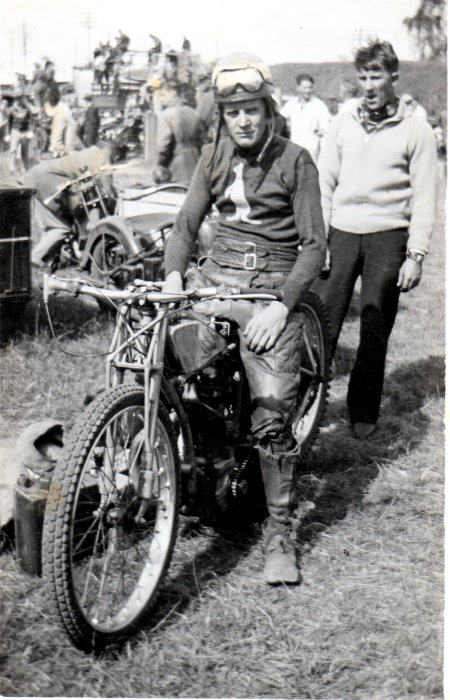 |
|
Month: September
1933
|
|
Date
|
Source News Article
|
track
|
Comments
|
|
2
|
Daily Standard Brisbane (Sat)
|
Exhibition Speedway(QLD)
|
Racing carnival will be conducted on Oct 14.
Will be the finest speed riders in the
commonwealth. 3/and a half hours each evening.
Ray not mentioned but will race -interesting
reading.
|
|
12
|
The Courier Mail(Brisbane(Tue)
|
Exhibition Speedway(QLD)
|
Riders engaged. Ray to race.
|
|
13
|
Daily Standard Brisbane(Wed)
|
Exhibition Speedway(QLD)
|
Star riders engaged. Ray included.
|
|
14
|
The Telegraph Brisbane (Thurs)
|
Exhibition Speedway(QLD)
|
Highly successful season is promised. Ray will
race.
|
|
17
|
Truth Brisbane(Sun0
|
Exhibition Speedway(QLD)
|
Arrival of motors already for reopening.
Training will begin 1st October.
|
|
20
|
(Unknown)
|
Exhibition Speedway(QLD)
|
Ray mentioned among other outstanding riders.
His training of recruits and clothing
manufacturing.
|
|
20
|
Daily Standard Brisbane(Wed)
|
Exhibition Speedway(QLD)
|
As above.
|
|
21
|
Referee Sydney(Thurs)
|
Exhibition Speedway(QLD)
|
Suggested England vrs Australia tests and Qld
hoping for two matches.
|
|
28
|
The Courier Mail Brisbane(Thurs)
|
Exhibition Speedway(QLD)
|
To open 14 October. Main race will be the
Golden Helmet.
|
|
30
|
Daily Standard Brisbane(Sat)
|
Exhibition Speedway(QLD)
|
Only 2 weeks away. Speedway opening. Ray
matched with Pearce. Model plane exhipition.
|
Month: October 1933
|
|
Date
|
Source News Article
|
track
|
Comments
|
|
4
|
Daily Standard Brisbane (Wed)
|
Exhibition Speedway
|
Riders interchanged between venues for Grand
Opening. Ray to race Frank Pearce in Match
race at Grand opening. Golden Helmet match
race to be held.
|
Month: October 1933
|
|
Date
|
Source News Article
|
track
|
Comments
|
|
5
|
Courier Mail Brisbane (Thur)
|
Exhibition Speedway
|
Several southern riders have arrived. Program
to comprise of Golden Helmet scratch race,
First class riders handicap, special “B” grade
scratch race, Model planes contest,
two match races on attempt for Lap
record
|
|
6
|
Telegraph Brisbane (Fri)
|
Exhibition Speedway
|
Opening riders are of “High” reputation.
|
|
6
|
As above
|
Exhibition Speedway
|
Advertisement for opening on 14th
October.
|
|
10
|
Daily Standard Brisbane (Tue)
|
Exhibition Speedway
|
Advertisment-as above.
|
|
11
|
Telegraph Brisbane(Wed)
|
Exhibition Speedway
|
Details as previously for Grand Opening.
|
|
13
|
Daily Standard Brisbane (Fri)
|
Exhibition Speedway
|
Advertisement for Opening tomorrow night.
|
|
13
|
The Courier Mail Brisbane(Fri)
|
Exhibition Speedway
|
The Golden Scratch race will have 16 riders in
4 heatsan d 2 seminal and Grand final. First
class handicap in 5 heats B grade scratch race
3 heats and final.
|
|
14
|
The Courier MailBrisbane(Sat)
|
Exhibition Speedway
|
As above.
|
|
15
|
Truth Brisbane (Sun)
|
Exhibition Speedway
|
Details of events.
Golden Helmet-Ray won 3rd heat.
Final -Ray broke away by ten lengths to win.
|
|
16
|
The Telegraph Melbourne
|
Exhibition Speedway
|
As above. Frank Pearce defeated Ray in
Interstate Match Race.
|
|
16
|
Daily Standard Brisbane (Mon)
|
Exhibition Speedway
|
As above with added detail.
|
|
16
|
Courier Mail Brisbane (Mon)
|
Exhibition Speedway
|
As above.
|
|
16
|
Daily Standard Brisbane(Mon)
|
Exhibition Speedway
|
As above with photo.(2 copies)
|
|
16
|
The Courier Mail Brisbane(Mon)
|
Exhibition Speedway
|
As above. Helmet to Taylor.
|
|
16
|
The Telegraph Brisbane (Mon
|
Exhibition Speedway
|
As above Taylor Wins Helmet. 2 copies Ray
photo described as “Lucky”
|
|
Month: October 1933
|
|
Date
|
Source News Article
|
track
|
Comments
|
|
17
|
The Courier Mail Brisbane (Tues)
|
Exhibition Speedway
|
As above.
|
|
18
|
Daily Standard Brisbane(Wed)
|
Exhibition Speedway
|
As above. Ray anxious to race for the Bulimba
Gauntlet.
|
|
19
|
Referee Sydney(Thurs)
|
Exhibition Speedway
|
As above with detail.
|
|
21
|
The Northern Herald Cairns Qld.
|
Exhibition Speedway
|
As above.
|
|
22
|
Sunday Mail Brisbane
|
Exhibition Speedway
|
As above. Detail.
|
|
22
|
Truth Brisbane(Sun)
|
Exhibition Speedway
|
As above.
|
|
22
|
Sunday Mail Brisbane
|
Exhibition Speedway
|
Golden Gauntlet Final.
Ray gave furious race. Won.Details.
|
|
22
|
Unknown)Sun)
|
Exhibition Speedway
|
Taylor wins Golden Gauntlet.2nd
detail copy.
|
|
23
|
Daily Standard Brisbane(Mon)
|
Exhibition Speedway
|
Quote: “ Taylor to win Gauntlet”
|
|
23
|
Daily Standard Brisbane(Mon)
|
Exhibition Speedway
|
Says Ray should have been disqualified for”
boring Frank Arthur out”
|
|
23
|
The Telegraph Brisbane
|
Exhibition Speedway
|
As previously mentioned for the Golden
Gauntlet and no mention of disqualification.
|
|
24
|
The Telegraph Brisbane
|
Exhibition Speedway
|
Ray gave the Bulimba sign shortly after
winning the Bulimba Golden Gauntlet. Photo.
|
|
27
|
The Courier Mail Brisbane (Fri)
|
Exhibition Speedway
|
Ray to Captain
the NSW TEST match
against Qld Interstate Match race on Saturday.
Also race in the “Black Cat ‘ Pennant .
|
|
28
|
The Courier Mail Brisbane(Sat)
|
Exhibition Speedway
|
As above. Ray won the
pennant.
|
|
29
|
Truth Brisbane(Sun)
|
Exhibition Speedway
|
As above.
|
|
30
|
Daily Standard Brisbane(Mon)
|
Exhibition Speedway
|
Taylor wins third big tital. Ray now achieved
a “Hat trick” after taking out the “Black Cat”
pennant on Saturday night.(2 pages)
|
|
Month: November 1933
|
|
Date
|
Source News Article
|
track
|
Comments
|
|
1
|
Daily Standard Brisbane(Wed)
|
Exhibition Speedway
|
Ray heads Winners in prize money 64 pounds
total. (Aust dollars to 2019-($45,00 labour
cost-$174,100 economic value )
Ray topped in Trophies with Wally little
topped in overall value track wise. Crowds
favored Frank Arthur , a Queenslander ,over
Ray.
|
|
2
|
Referee Sydney (Thurs)
|
Exhibition Speedway
|
Ray won the Black Cat Silver Pennant making
his total a “Hat Trick”. 2 copies attached.
|
|
3
|
Daily Standard Brisbane (Fri)
|
Exhibition Speedway
|
As above. Can Ray win the Silver Pennant?
|
|
3
|
TheTelegraph Brisbane(Fri)
|
Exhibition
Speedway
|
Advertisement for Silver Pennant. 2 attached
copies.
|
|
6
|
The Telegraph Brisbane(Mon)
|
Exhibition
Speedway
|
Ray may compete? Indian Cup.
|
|
8
|
Unknown
|
Parramatta Speedway
|
Event to be held on 9th Nov.
Outstanding feature is Ray to meet Charlie
Pegabo In a match race of 2 laps. 2 copies
attached.
|
|
8
|
Daily Standard Brisbane (Wed)
|
Exhibition Speedway
|
Ray may ride in the Indian cup.
|
|
9
|
Referee Sydney(Thur)
|
Exhibition Speedway
|
Meeting postphoned due to wet weather last
Saturday.
|
|
10
|
The Telegraph Brisbane(Fri)
|
Exhibition Speedway
|
Ray out to win the Silver Sash.
|
|
10
|
Daily Standard Brisbane (Fri)
|
Exhibition Speedway
|
Advertisement Interstate teams test and Silver
Sash tomorrow night.
|
|
11
|
The Courier Mail Brisbane(Sat)
|
Exhibition Speedway
|
After 3 postponements the teams test will be
run tonight.
|
|
14
|
The Telegraph Brisbane(Thur)
|
Exhibition Speedway
|
Prise money for the new 33-34 season will be
150 pounds per week divided.
|
|
15
|
Courier Mail Brisbane(Wed)
|
Exhibition Speedway
|
After many postponements the Silver Sash will
be run tonight.
|
|
Month: November 1933
|
|
Date
|
Source News Article
|
track
|
Comments
|
|
17
|
Courier Mail Brisbane(Fri)
|
Exhibition Speedway
|
|
|
|
|
|
Criticism of inexperienced riders for false
starts.2 copies attached.
|
|
19
|
Truth Brisbane(Sun)
|
Exhibition Speedway
|
Ray won his heat by a full lap in the Silver
Sash but his chain broke in the semi final.
The winner was Frank Pearce.
|
|
20
|
Telegraph Brisbane(Sun)
|
Exhibition Speedway
|
Frank Pearce won Silver Sash. Ray suffered a
broken chain.
|
|
22
|
The Courier Mail Brisbane(Wed)
|
Exhibition Speedway
|
Ray is paired with Clem Mitchel for a special
match 2 lap race on Saturday
|
|
22
|
The Courier Mail Brisbane(Wed)
|
Exhibition Speedway
|
Advertisement for above.
|
|
23
|
Referee Sydney(Thur)
|
Exhibition Speedway
|
Ray lost match race but won as part of the
NSW team comp. Rough track although
skillfully negotiated by Frank Pearce and Ray.
Both run a record time of 74.3 seconds.
|
|
24
|
The courier Mail Brisbane(Fri)
|
Exhibition Speedway
|
Castrol Gold helmet and NSW vrs Qld to be held
on Saturday.
|
|
25
|
Unknown
|
Exhibition Speedway
|
Ray wins Castrol Gold Helmet.
|
|
|
|
|
|
|
Month: December
1933
|
|
Date
|
Source News Article
|
track
|
Comments
|
|
7
|
Referee Sydney(Thurs)
|
Parramatta Speedway
|
Ray to race at Parramatta with photo
|
|
8
|
Unknown(Fri)
|
Parramatta Speedway
|
Ray to race tomorrow night. Mentioned his
performance and his record travel time between
Sydney and Qld as 18 hours.
|
|
8
|
Windsor and Richmond Gazette NSW (Fri)
|
Parramatta Speedway
|
Ray to meet Charlie Pegarbo
In a match race over 2 laps. 2 copies.
|
|
|
|
|
|
Ray Taylor :
Newspaper articles.
Speedway
year
1934
|
24
|
Worker Brisbane(Wed)
|
Exhibition Speedway
|
Advertisement. As above
|
|
24
|
Daily Standard Brisbane (Wed)
|
Exhibition Speedway
|
Advertisement. As above
|
|
Month: January continued 1934
|
|
Date
|
Source News Article
|
track
|
Comments/ Article
|
|
24
|
The Telegraph Brisbane
|
Exhibition Speedway
|
Details as above
|
|
24
|
Courier Mail Brisbane(Wed)
|
Exhibition Speedway
|
Details as above.
|
|
24
|
Daily Standard Brisbane(Wed)
|
Exhibition Speedway
|
Details as above.
|
|
25
|
Daily Standard Brisbane(Thurs)
|
Exhibition Speedway
|
Advertisement. As above
|
|
25
|
The Courier Mail Brisbane (Thurs)
|
Exhibition Speedway
|
Details as above.
|
|
25
|
The Telegraph Brisbane
|
Exhibition Speedway
|
Details as above.
|
|
26
|
The Courier Mail Brisbane(Fri)
|
Exhibition Speedway
|
More information as above.
|
|
26
|
The Telegraph(Fri)
|
Exhibition Speedway
|
Advertisement. As above.
|
|
26
|
The Courier Mail Brisbane(Fri)
|
Exhibition Speedway
|
Advertisement. As above. Photo of George
Greenwood.
|
|
26
|
Daily Standard(Fri)
|
Exhibition Speedway
|
Advertisement. As above. Photos of Bill
Jefferies and Bill Lamont.
|
|
26
|
Labor Daily
Goggles comment (Fri)
|
Exhibition Speedway
|
Complementary words about Rays time in
Brisbane.
|
|
27
|
The Courier Mail Brisbane(Sat)
|
Exhibition Speedway
|
Advertisement. As above.
|
|
27
|
The Courier Mail Brisbane(Sat)
|
Exhibition Speedway
|
As above with details.
|
|
28
|
Truth Brisbane (Sun)
|
Exhibition Speedway
|
Ray in 3rd heat and was second to
Len Langedon. George Greenwood’s team won.
28-23
|
|
29
|
Daily Standard(Mon)
|
Exhibition Speedway
|
As above Ray had to be content with 5 second
places in the team heats.
|
|
29
|
Telegraph Brisbane(Mon)
|
Exhibition Speedway
|
As above. In race with George Greenwood Ray
was behind and when ready to gain ground he
hit a bump near the pits.
|
|
Month: February 1934
|
|
Date
|
Source News Article
|
track
|
Comments/Atticles
|
|
8
|
Daily Telegraph Brisbane(Thurs)
|
Sydney Royale
|
Clem Mitchell to meet Dick Sulway in duel
match. Dick Sulway in dispute over fine of one
pound which he says is injust. Ray will ride
in his place if the matter is not settled.
|
|
11
|
Truth Sydney(Sun)
|
Sydney Royale
|
Ray 3rd place in Australian scratch
race.
|
|
Month: February 1934
|
|
Date
|
Source News Article
|
track
|
Comments/Atticles
|
|
24
|
The Daily Telegraph(Sat)
|
Sydney Royale
|
Tigar Stevenson to make farewell appearance
tonight. NSW vrs the rest.
|
|
Month: February continued 1934
|
|
Date
|
Source News Article
|
track
|
Comments/Atticles
|
|
25
|
Truth Sydney (Sun)
|
Sydney Royale
|
Ray was top scorer but beaten by Wally Little.
|
|
|
|
|
Tiger Stevenson broke several records on the
night and was awarded an opel studded silver
sash.
|
|
25
|
Sun Sydney (Sun)
|
Sydney Royale
|
As above Ray run close seconds to Wally Little
and Tiger Stevenson.
|
|
|
|
|
|
|
Month: March 1934
|
|
Date
|
Source News Article
|
track
|
Comments
|
|
4
|
Truth Sydney(Sun)
|
Sydney Royale
|
Speedway accidents. Ray 2nd place
in his heat.
|
|
4
|
Truth Brisbane(Sun)
|
Sydney Royale
|
As above. Ray rode well and won his heat and 2nd
place in the final a gruling race with Iron
Mitchel and Ken Kirkham.
|
|
5
|
The Daily Telegraph(Sydney)(Mon)
|
Sydney Royale
|
As above.
|
|
10
|
The Daily Telegraph Sydney(Sat)
|
Sydney Royale
|
Fireworks and battle displaysRay to race.
|
|
11
|
Truth Sydney(Sun)
|
Sydney Royale
|
As above.Farewell speedway meeting of the
season.
Interstate match race (3 laps)Clem
Mitchel beat Ray by half a wheel.
|
|
17
|
Labor Daily Sydney(Sat)
|
Wentworth Park
|
Ray to race.
|
|
21
|
Labor Daily Sydney(Wed)
|
Wentworth Park
|
Ray mentioned.
|
|
|
|
|
|
|
Month: September 1934
|
|
Date
|
Source News Article
|
track
|
Comments
|
|
7
|
Labor Daily Sydney(Fri)
|
News item only
|
Ray interested to start dirt track training
school. Clem Mitchill also interested. Friends
as they toured England together.
|
|
7
|
Labor Daily Sydney(Fri)
|
News item only
|
Ray left to race in New Zealand.
|
|
Date
|
Source News Article
|
track
|
Comments
|
|
2
|
The Labor Daily(Tue)
|
Parramatta Speedway
Item only
|
Noel Terry is interested in the scheme of Ray
and Clem Mitchell for a training school.
|
|
4
|
The Cumberland Argus and Fruitgrowers Advocate
Parramatta(Thurs)
|
Item only
|
Ray was thinking of leaving the sport and as
he had an auctioneering with a weekly market
at Ryde resisted offers from Melbourne for the
centenary celebrations and offer for a trip to
England in March 1935.
He is leaving for Melbourne on the weekend.
|
|
22
|
Argus Melbourne(Mon)
|
Melbourne Exhibition Speedway
|
Ray won 6th heat of the Contenent
scratch race. Photo
|
|
|
|
|
|
|
Month: November 1934
|
|
Date
|
Source News Article
|
track
|
Comments
|
|
2
|
The Herald Melbourne(Fri)
|
Exhibition Speedway
|
Ray to compete in an International scratch
race tomorrow night.
|
|
7
|
Sporting Globe Melbourne(Wed)
|
Exhibition Speedway
|
Ray did well race unknown.
|
|
13
|
The Argus Melbourne(Tue)
|
Exhibition Speedway
|
Match race heats. Ray,s placing not clear.
|
|
14
|
Sporting Globe Melbourne(Wed)
|
Exhibition Speedway
|
As above though stated Bill Rogers
outmaneuvered Ray.
|
|
15
|
Daily Telegraph Sydney(Thurs)
|
Exhibition Speedway
|
As above. Bill Rogers defeated Ray 2 heats to
1.
|
|
15
|
The Advertiser Adeliade (Thurs)
|
Exhibition Speedway
|
England vrs Australia. Teams to be selected
and Ray will be considered.
|
|
22
|
Daily Telegraph Sydney(Thurs)
|
Sydney Royale
|
Ray to be included in NSW team vrs England on
December 8.
|
|
29
|
The Cumberland and Fruitgrowers Advocate
Parramatta(Thur)
|
Paramatta Speedway
|
Ray vrs Jack Hollis to race on Saturday.
|
|
29
|
The Cumberland and Fruitgrowers Advocate
Parramatta(Thur)
|
Paramatta Speedway
|
Advertisement. Ray vrs Jack Hollis to race on
Saturday. 1st December.
|
|
|
|
|
|
Month: December 1934
|
|
Date
|
Source News Article
|
track
|
Comments
|
|
1
|
Labor Daily Sydney(Sat)
|
Sydney Royale
|
Comment that Ray is returning from Melbourne.
|
|
2
|
The Sun Sydney(Sun)
|
Parramatta Speedway.
|
As above unfortunately Jack Hollis’s back
wheel toughed Rays bike and he crashed and was
taken to hospital. Ray won heats and final for
the Big nine scratch race.
|
|
2
|
Truth Sydney(Sun)
|
Sydney Royale
|
Ray chosen for the NSW team between England.
|
|
3
|
Maitland Dailey Sydney(Mon)
|
Sydney Royale
|
As above the English team to arrive on
Tuesday.
|
|
3
|
The Age Melbourne(Mon)
|
Sydney Royale
|
As above.
|
|
3
|
The Labor Daily(Mon)
|
Sydney Royale
|
As above
|
|
3
|
The Daily Telegraph Sydney(Mon)
|
Sydney Royale
|
As above. To be graded on Tuesday.
|
|
3
|
The Sydney Morning Herald (Mon)
|
Sydney Royale
|
As above and previously mentioned.
|
|
9
|
Truth Sydney (Sun)
|
Sydney Royale
|
England vrs NSW no mention of Ray.
|
|
10
|
Daily Telegraph Sydney(Mon)
|
Sydney Royale
|
As above. Several falls and crashes In heat 4
of the all commers race. Ray who finished in 3rd
place
(NSW) was cheered when he crashed to
avoid fallen rider in front of him.
|
|
11
|
The Daily Telegraph Sydney(Tue)
|
Sydney Royale
|
Australian team to be chosen Ray is
considered.
|
|
16
|
Truth Sydney(Sun)
|
Sydney Royale
|
Ray 2nd place in semi final.
|
|
20
|
Daily Telegraph Sydney
|
Sydney Royale
|
Ray to ride for Australia vrs England next
Saturday.
|
|
21
|
Daily Telegraph Sydney(Fri)
|
Sydney Royale
|
Ray to ride tomorrow night. Committee working
on big international tests including American
teams.
|
|
24
|
The Courier Mail Brisbane
|
Sydney Royale
|
1 Mile Championship -heat 5. Bluey Wilkinson
beat Ray who finished 2nd.
|
|
26
|
West Australian Perth(Wed)
|
Sydney Royale
|
Details of 1 mile championship.
|
|
|
|
|
|
Ray Taylor:
Newspaper articles.
Speedway year
1935
|
Month: January 1935
|
|
Date
|
Source News Article
|
track
|
Comments/ Article
|
|
4
|
The Sun Sydney(Fri)
|
Sydney Royale
|
Paring of riders. Ray to compete tomorrow
night.
|
|
5
|
Daily Telegraph Sydney(Sat)
|
Sydney Royale
|
Joe Abbot and Les Gregory -England will
compete against Bluey Wilkinson and Ray
-Australia. Best pairs Championship
|
|
6
|
Truth Sydney(Sun)
|
Sydney Royale
|
Second washout due to rain. Compete tomorrow
night.
|
|
8
|
The Daily Telegraph(Tue)
|
Sydney Royale
|
Best pairs Championship.Heat 1.
Bluey Wilkinson 1st. Joe
Abbott 2nd and Ray 3rd
place. Heat8. Bluey Wilkinson 1st
Cliff Parkinson 2nd Ray 3rd.
Heat 14 Bluey Wilkinson and Ray dead heat 1st.
|
|
8
|
Labor Daily Sydney (Tue)
|
Sydney Showground(Royale)
|
As above.Ray rode the best race of the season
in heat 14.
|
|
8
|
The Labor Daily Sydney(Tue)
|
Sydney Royale
|
As above.
|
|
11
|
The Labour Daily(Fri)
|
Sydney Royale
|
As above. Ray has an offer for a contract in
England and the terms of such have him well
covered. Likely he will accept.
|
|
13
|
Sun Sydney( Sun)
|
Sydney Royale.
|
Heat 1 -Scratch race Ray 2nd.
Yesterday night.
|
|
|
|
|
|
|
Month: February 1935
|
|
Date
|
Source News Article
|
track
|
Comments/Atticles
|
|
13
|
Sporting Globe Melbourne(Wed)
|
Item only
|
Ray negotiating for an American offer. Namely
a team of Dirt Track Riders to race in USA.
|
|
14
|
Referee Sydney (Thur)
|
Item only
|
Ray in New Zealand and has been engaged to
ride for Wembley this English season.
|
|
14
|
Daily Telegraph Sydney (Thur)
|
Item only
|
Ashes to be renamed Cinders.
|
|
|
|
|
|
|
Month: March 1935
|
|
Date
|
Source News Article
|
track
|
Comments
|
|
21
|
The Daily Telegraph Sydney
|
Western Springs New Zealand
|
Ray had a successful season in New Zealand and
left for America and England. He established
records in NEW Zealand with a new record for 3
laps on the Western Springs Track . Ray has
been offered a contract in NZ when he returns
from England. (3 extracts on single copies.)
|
|
|
|
|
|
Month: May 1935
|
|
Date
|
Source News Article
|
track
|
Comments
|
|
|
|
|
|
|
9
|
Records from England
|
Empire Stadium. London
|
Thursday. Ray rode for the Wembley Cubs
against the West Ham Hawks. National League. 3rd
in heat 1. First in heat 3.
|
|
16
|
Records from England
|
Empire Stadium. London
|
Thursday. Junior Race. Ray Heat 1. First and
first in Final. Scratch race. 2nd
in heat 2.
|
|
23
|
Records from England
|
Empire Stadium. London
|
Thursday. Ray rode for Wembley against West
Ham. 3rd in heat 2. 2nd
in heat 3.
|
|
23
|
Advertiser Adelaide(Thurs)
|
Wimberley England
|
Start of English Season and Wembley is making
an effort to gain Dick Smythe, Billy Lamont
and Ray,(3 copies attached)
|
|
27
|
Records from England
|
Wimbledon, London
|
Ray Wimbledon. Junior challenge match. 4th
in heat 2. 3rd in heat 4.
|
|
27
|
The Telegraph Brisbane(Mon)
|
Item abt England season
|
Monday. Ray and Billy Lamont are signed up and
on their way over to UK.(3 copies attached)
|
|
28
|
Courier Mail Brisbane(Tues)
|
Item abt England season
|
As above.
|
|
30
|
Records from England
|
Empire Stadium. London.
|
Thursday.Ray Wembley Cubs.
2nd heat 1. 4th
in heat 4.
|
|
Month: June 1935
|
|
Date
|
Source News Article
|
track
|
Comments
|
|
|
|
|
|
|
12
|
Records from England
|
Seaforth Stadium, Liverpool.
|
Wednesday. Ray rode for Australians against
Seaforth. 3rd in heat 4. And 3rd
in heat 9. Seaforth defeated Australians
33-20.
|
|
20
|
Records from England
|
Empire Stadium, London
|
Thursday. Scratch Race. 4th in heat
4.
|
Month:July 1935
|
|
Date
|
Source News Article
|
track
|
Comments
|
|
4
|
Records from England
|
Empire Stadium, London
|
Thursday. Ray rode for Wembley. DNR Code(to be
researched)
|
|
11
|
Records from England
|
Empire Stadium, London
|
Thursday. Ray Wembley. As above.
|
|
13
|
Records from England
|
Empire Stadium, London
|
Saturday. Ray 4th in heat 15.
Reserve.
|
|
16
|
Records from England
|
Pennycross Stadium, Plymouth
|
Tuesday. Raven Trophy race. First in heat 1. 2nd
in heat 1 sf. 2nd in Final.
Challenge Match race. Lewis beat Ray. Flying
nine. 2nd heat 3. 2nd in
final.
|
|
23
|
Records from England
|
Pennycross Stadium, Plymouth
|
Tuesday. Ray rode for Plymouth.
1st in heat 7. Jones
replaced Ray in heat 3. Challenge Match race
Ray beat Dick Wise. Plymouth Distance
Handicap.
1st in heat 4. And 4th
in final.
|
|
25
|
Records from England
|
Empire Stadium, London
|
Thursday. Preliminary scratch race. 4th.
Scratch race 4th in heat 1.
|
|
27
|
Records from England
|
Wimbledon, London
|
Satursday. Handicap race. 3rd in
heat 2. 5 yards handicap.
|
|
29
|
Records from England
|
Seaforth Stadium, Liverpool
|
Monday. Ray rode for the South team vrs North.
3rd heat 2. 2nd Heat 9.
|
Ray Taylor
On Daisy at
Wimbledon
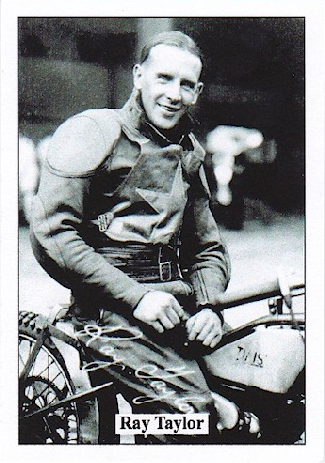
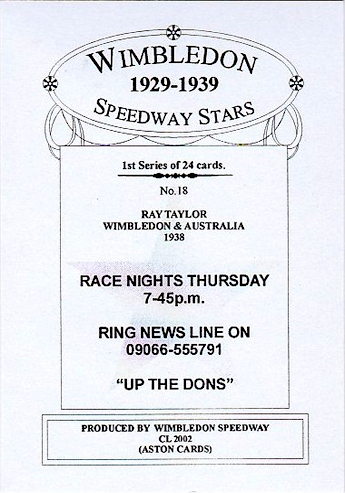
Month:August 1935
|
|
Date
|
Source News Article
|
track
|
Comments
|
|
1
|
Referee Sydney(Thur)
|
Wembley UK
|
Ray reserve for Wembley. Established a
track record in Paris and scored 14 points out
od 15 in a teams match.(Believed to be the
Buffalo Velodrome. Paris)
|
|
Month:August continued
1935
|
|
Date
|
Source News Article
|
track
|
Comments
|
|
12
|
Record from England
|
Seaforth Stadium, Liverpool
|
Monday. Ray was due to ride for Australians
vrs Seaforth but replaced by Ernie Price.
|
|
26
|
Record from England
|
Seaforth Stadium, Liverpool
|
Monday. Ray rode Wimbledon. Vrs Seaforth. 3rd
heat 3. 3rd heat 7.
|
|
27
|
Western Morning News
|
Pennycross Stadium, Plymouth
|
Tuesday. Ray rode for Eastbourne vrs Plymouth.
2nd heat 6. 1st heat 8.
Ray was returning after injury
and was appearing as the “Mystery Rider”. One
lap record attempt was cancelled due to
weather. Billy Lamont beat Ray in the Match
race.
|
|
|
|
|
|
|
Month:September 1935
|
|
Date
|
Source News Article
|
track
|
Comments
|
|
3
|
Western Morning News
|
Pennycross Stadium, Plymouth
|
Tuesday. Ray riding for London vrs Plymouth.
2nd heat 3. 1st heat 6.
Ray beat Eric Collins in Match race. Plymouth
Distance Handicap.heat 3. 2nd.
|
|
4
|
Western Mail England(Wed)
|
White City Stadium. Cardiff. UK.
|
Wednesday. Ray in Cardiff team. 2nd
place in Heat 7.
|
|
7
|
Record of England
|
Wimbledon, London
|
Ray 4th Heat 1. Handicap race (5
yards)
|
|
10
|
Western Morning News
|
Pennycross Stadium, Plymouth
|
Tuesday. Plymouth Trophy Heat 4. 3rd.
Heat 8. 3rd.
|
|
21
|
Records of England
|
Wimbledon, London
|
Saturday. Graded Scratch race. Heat 1 3rd.
Wimbledon Distance Handicap. Heat 4. 4th.
|
|
23
|
The Cumberland Argus and Fruitgrowers
Advocate(Mon)
|
Item only. England.
|
Victor Pope RAN on board HMAS Brisbane went to
the track at Plymouth and felt a slap on the
back from his Ryde friend Ray.2 copies.
|
|
|
|
|
|
|
13
|
Truth Sydney(Sun)
|
Sydney Royale
|
Opening season. Overseas riders from England
and America and interstate. Ray on way back
from England.
|
|
18
|
Labor Dailey Sydney(Fri)
|
Item only
|
Ray due to arrive this week. Racing for
Wembley and flew over to Paris,Germany and
other countries. He has been offered a
contract to return. Also bringing latest
racing equipment.
|
|
|
|
|
|
|
Month: November 1935
|
|
Date
|
Source News Article
|
track
|
Comments
|
|
28
|
Herald Melbourne
|
Exhiibition Speedway
|
Ray and Clem Thomas to contest 3 heat 3 lap
race.
|
|
15
|
Labor Daily Sydney(Fri)
|
Item only
|
Ray will return from England on Thursday on
board the Oronsay.
|
|
16
|
News Adelaide(Sat)
|
Item only
|
As above. Riders break records in England and
Ray and others will take part in Sydney
Carnivals .
|
|
19
|
Herald Melbourne(Tues)
|
Exhibition Speedway
|
Riders returned from America and Ray from
England will appear next Saturday. Ray said to
be going to New Zealand.
|
|
20
|
The Argus Melbourne(Wed)
|
Exhibition Speedway
|
Ray arrived in Melbourne on the Oronsay. Will
make his first appearance in Melbourne.
|
|
20
|
Sporting Globe
|
Exhibition Speedway
|
Ray to attend as above. The paper stated that
Ray was struck by a steel toe cap while in
England at the Liverpool track and was in
hospital for 3 weeks with injury to his right
cheek and when he was discharged he broke all
records at the Buffalo trach in Paris.
Bringing a ton of spare parts back with him
|
|
21
|
The Herald Melbourne(Thur)
|
Exhibition Speedway
|
As previously. Ray to make his debut on
Saturday. Entry into the Exhibition scratch
race.
|
|
22
|
The Labor Daily Sydney(Fri)
|
Exhibition Speedway
|
Ray returned to Melbourne for 5 weeks as the
offer was too good to turn away. Photo.
|
|
23
|
Sporting Globe Melbourne(Sat)
|
Exhibition Speedway
|
As above.
|
|
Month: November continued 1935
|
|
Date
|
Source News Article
|
track
|
Comments
|
|
23
|
Speedway Record(Sat)
|
Article
|
Ray returned home with a new JAP Special and
spareparts. A deep scar covering a fracture on
his right cheek bone an inch below his eye
luck to escape permanent injury or death. He
was unconscious for 3 days and in hospital for
2 weeks.
A week after hospital he crashed a
record at the Buffalo track, Paris.
|
|
27
|
The Sporting Globe Melbourne(Wed)
|
Exhibition Speedway
|
Ray did not appear in usual form as his new
machine and fuel requirements led to tuning
problems.2 copies attached.
|
|
28
|
Herald Melbourne(Thurs)
|
Exhibition Speedway
|
Main attraction next Saturday night is a
Challenge match between Ray and Clem
Thomas. 3 laps and 3 heats.
|
|
29
|
Herald Melbourne(Fri)
|
Exhibition Speedway
|
Advertisement. For above.
|
|
29
|
The Age Melbourne(Fri)
|
Exhibition Speedway
|
As above.
|
|
29
|
Herald Melbourne(Fri)
|
Exhibition Speedway
|
As above.
|
|
30
|
The Herald Melbourne(Sat)
|
Exhibition Speedway
|
As above tonight.
|
|
|
|
|
|
|
Month: December 1935
|
|
Date
|
Source News Article
|
track
|
Comments
|
|
4
|
Sporting Globe Melbourne(Wed)
|
Exhibition Speedway
|
Ray and Clem Thomas provided highlights of the
night. In a special 3 lap 3 heats match race
there was some exceptional riding. Ray was the
winner.
|
|
5
|
Referee Sydney(Thur)
|
Exhibition Speedway
|
As above. Ray won decisively over 2 heats.
|
|
7
|
Sproting Globe Melbourne(Sat)
|
Exhibition Speedway
|
Ray tp be in match race tonight.
|
|
10
|
The Herald Melbourne(Tue)
|
Exhibition Speedway
|
Ray amd Jack Bibby to race in a special match
and th winner to rave against Danish speedster
Morian Hansen.
|
|
11
|
Sporting Globe Melbourne(Wed)
|
Exhibition Speedway
|
As above. Details.
|
|
Month: December 1935
|
|
Date
|
Source News Article
|
track
|
Comments
|
|
13
|
The Herald Melbourne(Fri)
|
Exhibition Speedway
|
As above. Details.
|
|
13
|
The Herald Melbourne(Fri)
|
Exhibition Speedway
|
Advertisement for above.
|
|
1
|
Sporting Globe Melbourne(Sat)
|
Exhibition Speedway
|
As above. Details.
|
|
15
|
Truth Sydney(Sun)
|
Exhibition Speedway
|
Jack Bibby defeated Ray. Hansen fell in both
races.
|
|
18
|
Sporting Globe Melbourne(Wed)
|
Exhibition Speedway
|
As above. Ray to compete in 12 Aces scratch
race on Saturday.
|
|
31
|
The Advertiser Adelaide
|
Exhibition Speedway
|
Special Challenge race between Clem Thomas and
Ray over 3 heats. Ray was the winner.
|
|
|
|
|
|
Comments:
It may be considered that between
29th July and when Ray returned to
the track on 27th August1935 that he
sustained
his injury when he was hit by a steel toe plate of
another rider which came off and flew up into his face
during a race. It was reported on 23rd November by
Speedway Record. Cinder Siftings.
Quote ” It is a reminder to Ray Taylor of
the lucky escape he had from permanent injury or death
on the Liverpool track. Struck by a steel toe plate
dropped by another rider Ray was knocked unconscious
sustaining a severe fracture extending from an inch
below the eye to the upper jaw bone. Unconscious as a
result of a severe concussion for three days he was
out of hospital in two weeks and a week later crashed
a record on the Buffalo track in Paris”.
Ray Taylor :
Newspaper articles.
Speedway
year
1936
Contents:
|
Month: January 1936
|
|
Date
|
Source News Article
|
track
|
Comments/ Article
|
|
8
|
Herald Melbourne(Wed)
|
Exhibition Speedway
|
American riders to be introduced. Ray to meet
Jack Milne.( 2copies unreadable)
|
|
9
|
Referee Sydney(Thur)
|
Exhibition Speedway
|
Cordy Milne (brother of Jack) In second heat
of the 3 lap scratch race Ray and Cordy had a
wheel to wheel race and finished in a dead
heat. Ray had a wheel wobble in the final heat
and was beaten by Cordy.(2 copies)
|
|
9
|
The Herald Melbourne(Thur)
|
Exhibition Speedway
|
As above. The track has a new innovation as
‘electronically controlled” and the above”dead
heat” determined by this system.
|
|
10
|
The Herald Melbourne(Fri)
|
Exhibition Speedway
|
Ray to meet Cordy Milne the American National
Champion.
|
|
11
|
The Age Melbourne(Sat)
|
Exhibition Speedway
|
As above. Best 2 out of 3 heats.
|
|
13
|
Age Melbourne(Mon)
|
Exhibition Speedway
|
Cordy Milne beat Ray in two heats and dead
heat in the third.
|
|
16
|
Referee Sydney(Thur)
|
Exhibition Speedway
|
As above. Stated that Cordy Milne wins every
start in Melbourne. Note Rays dead heat.
|
|
18
|
The Age Melbourne(Sat)
|
Exhibition Speedway
|
Jack Milne to meet Ray.
|
|
19
|
The Herald Melbourne(Fri)
|
Exhibition Speedway
|
Advertisement. Cordy Milne vrs Ray.
|
|
22
|
Sporting Globe Melbourne(Wed)
|
Exhibition Speedway
|
Continental Handicap. Ray disqualified
although after his appeal his false start was
due to mechanical trouble. Ray finished third.
(2 copies)
|
|
23
|
The Herald Melbourne(Thur)
|
Exhibition Speedway
|
Ray (NSW TEAM) to compete against Dane-Morian
Hansen.
|
|
Month: January continued 1936
|
|
Date
|
Source News Article
|
track
|
Comments/ Article
|
|
23
|
Referee Sydney(Thur)
|
Exhibition Speedway
|
Continental Handicap. Ray crashed through a
barrier and was disqualified but upon appeal
as his clutch was faulty he was allowed to
compete.
|
|
|
|
|
|
|
Month: February 1936
|
|
Date
|
Source News Article
|
track
|
Comments/Atticles
|
|
5
|
Sporting Globe Melbourne(Wed)
|
Exhibition Speedway
|
Crowd of 9000 came to see the American Milnes
brothers and were hard pressed by Ray and Clem
Thomas.
|
|
7
|
The Herald Melbourne(Fri)
|
Exhibition Speedway
|
Advertisement. Cordy Milne USA vrs Ray.
|
|
7
|
The Herald Melbourne(Fri)
|
Exhibition Speedway
|
Challenge Match(International Match Race) on
Saturday as above.
|
|
8
|
The Age Melbourne(Sat)
|
Exhibition Speedway
|
Ray best on dry track. Also in Pairs
Championship.
|
|
11
|
The Herald Melbourne(Tue)
|
Exhibition Speedway
|
Meeting postphoned. Cordy will be substituted
by Cordy’s brother Jack.
In a 3 heat match over 3 laps.
|
|
13
|
The Age Melbourne(Thur)
|
Exhibition Speedway
|
Cordy to appear against Ray.
|
|
14
|
The Herald Melbourne(Fri)
|
Exhibition Speedway
|
As above.
|
|
14
|
The Herald Melbourne(Fri)
|
Exhibition Speedway
|
As above. Advertisement. Tomorrow night.
|
|
14
|
The Age Melbourne(Fri)
|
Exhibition Speedway
|
As above.
|
|
17
|
Argus Melbourne(Mon)
|
Exhibition Speedway
|
Cordy Milne defeated Ray in 2 straight matches
and Ray won third.
|
|
18
|
The Age Melbourne
|
Exhibition Speedway
|
As above.
|
|
|
|
|
|
|
Month: March 1936
|
|
Date
|
Source News Article
|
track
|
Comments
|
|
4
|
Sporting Globe Melbourne(Wed)
|
Exhibition Speedway
|
Advertisement. Jack Bibby, Clem Thomas and Ray
to contest in a triangular race on Saturday. 2
pages
|
|
4
|
The Herald Melbourne(Wed)
|
Exhibition Speedway
|
As above . Race to be run over 3 laps and
decided on a point basis.
|
|
6
|
The Herald Melbourne(Fri)
|
Exhibition Speedway
|
Advertisement. As above.
|
|
6
|
The Age Melbourne(Fri)
|
Exhibition Speedway
|
As above.
|
|
|
|
|
|
|
Month: March 1936
|
|
Date
|
Source News Article
|
track
|
Comments
|
|
9
|
Argus Melbourne
|
Exhibition Speedway
|
False report. Jack Bibby did not win. See
below
|
|
11
|
Sporting Globe Melbourne
|
Exhibition Speedway
|
Season at Exhibition Speedway closes. Ray won
the 3 heats with record best time.
|
|
19
|
Advertiser Adelaide (Thurs)
|
Camden Motordrome
|
Ray to compete with Arnold Hansen in a special
match race.
|
|
20
|
News Adelaide(Fri)
|
Camden Motordrome
|
Advertisement. As above
|
|
21
|
Mail Adelaide(Sat)
|
Camden Motordrome
|
Ray won the special match race over Arnold
Hansen. He also won the Championship scratch
race. 2 pages.
|
|
23
|
Advertiser Adelaide(Mon)
|
Camden Motordrome
|
More details 2nd page. Ray also won
the Motordrome Championship.
|
|
28
|
Mail Adelaide (Sat)
|
Camden Motordrome
|
As above. More details of team race etc.
Thrilling races.
|
|
29
|
Truth Brisbane(Sun)
|
Camden Motordrome
|
Ray mentioned as winning a trebble.
|
|
|
|
|
|
|
Month: April 1936
|
|
Date
|
Source News Article
|
track
|
Comments
|
|
2
|
The Advertiser(Thur)
|
Camden Motordrome
|
Ray has returned to Melbourne
|
|
3
|
The Herald Melbourne(Fri)
|
Olympic Park Speedway
|
Ray will compete with Ray Hay the Tasmanian
champion.
|
|
4
|
The Age Melbourne(Sat)
|
Olympic Park Speedway
|
Advertisement. As above.
|
|
4
|
The Argus Melbourne(Sat)
|
Olympic Park Speedway
|
Advertisement. As above.
|
|
|
|
|
|
|
Month: May1936
|
|
Date
|
Source News Article
|
track
|
Comments
|
|
7
|
The Age Melbourne(Thur)
|
Advertisement
|
Ray‘s advertisement for bike inspection
services. Phone: B9617
|
|
|
|
|
|
|
Month: November 1936
|
|
Date
|
Source News Article
|
track
|
Comments
|
|
7
|
The Age Melbourne(Sat)
|
Olympic Park Speedway
|
American and English top riders imported to
race. Ray has decided to remain in Melbourne
for its season.
|
|
11
|
News Adelaide(Wed)
|
Camden Motordrome
|
Advertisement. Ray to have a return match with
Les Fredricks and Bill Madden.
|
|
12
|
News Adelaide(Thur)
|
Camden Motordrome
|
Advertisement. As above.
|
|
12
|
The Advertiser Adelaide(Thur)
|
Camden Motordrome
|
Article. As above.
|
|
13
|
Sport Adelaide(Fri)
|
Camden Motordrome
|
Advertisement. As above.
|
|
19
|
Sporting Globe Melbourne(Sat)
|
Olympic Park Speedway
|
USA vre Australia first team competition in a
series of Tests. USA Captain Jack Minle and
team;
Cordy Milne, Artie Fenn, Pete Coleman,
Byrd McKinney, Wilbur Lamoreaux, Earl Farrand
and Garland Johnson. Australia:
Vic Huxley(Capt) Clem Mitchell, Artie
Fenn, Jack Bibby, Ray Taylor, Bill Rogers and
Bert Spencer.
|
|
|
|
|
|
|
Month: December 1936
|
|
Date
|
Source News Article
|
track
|
Comments
|
|
3
|
The Herald MELBOURNE(Thur)
|
Exhibition Speedway
|
USA Team at speedway. Ray to compete.
|
|
3
|
The Argus Melbourne(Thur)
|
Exhibition Speedway
|
As above.
|
|
3
|
Referee Sydney(Thur)
|
Exhibition Speedway
|
As above.(2 copies)
|
|
4
|
The Argus Melbourne(Fri)
|
Exhibition Speedway
|
Ray will form part of the Victorian team
against USA.
|
|
5
|
The Age(Sat)
|
Exhibition Speedway
|
Advertisement. As above tonight.
|
|
5
|
Unknown
|
Exhibition Speedway
|
As above.
|
|
10
|
The Age Melbourne(Thur)
|
Olympic Park
|
Ray to compete in International test on
Saturday.
|
Month: December 1936
|
|
Date
|
Source News Article
|
track
|
Comments
|
|
19
|
The Age Melbourne(Sat)
|
Olympic Park
(Empire speedway)
|
America vrs Australia. Match over 9 heats of 3
laps . Vic Huxley Captain and USA Jack Milne
Captain.
|
|
19
|
Sporting Globe(Sat)
|
Olympic Park
|
As above. A strong surporting program of 24
events.
|
|
19
|
Weekly Times Melbourne(Sat)
|
Olympic Park
|
As above.
|
|
21
|
The Herald Melbourne(Mon)
|
Item only
|
Ray bashed in his shop at Victoria St.
Abbortsford by 3 thugs. Ray left bleeding on
floor.
|
|
21
|
The Herald Melbourne(Mon
|
Item only
|
As above with more details.
|
|
22
|
Barrier Miner Broken Hill.NSW.
|
Item only
|
As above and details how Ray had defended a
boy at the track the night before. They said
they had” come to settle an account”.
|
|
22
|
The Age Melbourne(Tue)
|
Item only
|
As above.
|
|
23
|
Sporting Globe(Wed)
|
Olympic Park
|
Australia vrs America match was won by
Australia by 8 points. Ray scored one 2nd
and two 3rd places in his heats.(2
copies)
|
|
28
|
The Sydney Morning Herald(Mon)
|
Olympic Park
|
Victoria vrs England Teams match race. Ray was
severely shaken in a heavy fall. His machine
struck Parkinson
in the last heat.
|
|
|
|
|
|
Ray Taylor :
Newspaper articles.
Speedway
year
1937
Contents:
|
Month: January 1937
|
|
Date
|
Source News Article
|
track
|
Comments/ Article
|
|
1
|
The Daily Telegraph Sydney(Fri)
|
Exhibition Speedway Melbourne
|
Australia vrs England 2nd Test. Ray
is one of the outstanding riders. Saturday
night.
|
|
1
|
Herald Melbourne(Fri)
|
Olympic Park
|
Advertisement . As above
|
|
*2
|
The Argus Melbourne(Sat)
|
Empire Speedway Olympic Park
|
Two Reserves(Ray and Les Wotton Eng) will meet
in a special international match race over 3
laps.
|
|
2
|
The Age Melbourne(Sat)
|
Olympic Park
|
As above
|
|
8
|
The Age Melbourne(Fri)
|
Olympic Park
|
Ray reserve for the Consolation race on
Saturday
|
|
12
|
The Age Melbourne(Fri)
|
Olympic Park
|
Quadrilateral race of 3 laps. Dick Case
Captain of Hackney Wick England, Ray, Karl
Ferrand America, and Pete Colman America.
|
|
15
|
Herald Melbourne(Fri)
|
Olympic Park
|
Advertisement. Pete Coleman USA and co vrs
Ray.
|
|
16
|
The Herald Melbourne(Sat)
|
Olympic Park
|
Ray to be reserve.
|
|
|
|
|
|
|
16
|
Sporting Globe Melbourne(Sat)
|
Olympic Park
|
As above.
|
|
18
|
Argus Melbourne(Mon)
|
Olympic Park
|
Ray defeated Pete Coleman UAS in 2 lap match
race.
|
|
Month: January continued 1937
|
|
Date
|
Source News Article
|
track
|
Comments/ Article
|
|
21
|
The Age Melbourne(Thur)
|
Olympic Park
|
Australia vrs America. Ray in Australian team.
On Saturday.
|
|
21
|
Referee Sydney(Thurs)
|
Olympic Park
|
Highlights of the night was Rays defeat of
Jack Milne in the 3rd heat of the
open scratch race and Pete Coleman in a
special 2 lap match.
|
|
23
|
The Argus Melbourne(Sat)
|
Olympic Park
|
3rd test match tonight (as above)
Ray also in heat 3 of the “Flying Nine” match
race.
|
|
30
|
The Argus Melbourne(Sat)
|
Olympic Park
|
Ray in “White” mixed team (Aust and USA)
TONIGHT.
|
|
Month: February 1937
|
|
Date
|
Source News Article
|
track
|
Comments/Atticles
|
|
5
|
Hearld Melbourne(Fri)
|
Olympic Park
|
Advertisement. America vrs Victoria -Saturday.
|
|
12
|
Herald Melbourne (Fri)
|
Olympic Park
|
Advertisement. Quadrilateral Match. Dick Case
Captain of Hackney Wick Eng, Pete Coleman USA,
Earl Farrand USA, Ray Victoria. Saturday.
|
|
12
|
The Age Melbourne(Fri)
|
Olympic Park
|
As above
|
|
13
|
The Argus Melbourne(Sat)
|
Olympic Park
|
As above. Ray to compete in heat 1.
|
|
|
|
|
|
|
Month: September1937
|
|
Date
|
Source News Article
|
track
|
Comments
|
|
2
|
The Advertiser Adelaide(Thur)
|
Item only
|
Ray is interested in the proposal of Port
Melbourne Ground as a Speedway.
|
|
13
|
Telegraph Brisbane(Mon)
|
Exhibition Speedway
|
Frank Arthur may appear at the opening in
Brisbane on October 16. Ray has been booked to
race.
|
|
14
|
Worker Old.(Tue)
|
Exhibition Speedway QLD
|
Ray and other riders preparing to arrive for
the Brisbane season.
|
|
18
|
The Telegraph Brisbane(Sat)
|
Exhibition Speedway
|
Ray will race on October 16.
|
|
19
|
Truth Brisbane
|
Exhibition Speedway
|
As above. Fifty riders are willing to
participate. From Australia, England and USA.
|
|
Month: September continued1937
|
|
Date
|
Source News Article
|
track
|
Comments
|
|
21
|
Worker Brisbane(Tue)
|
Exhibition Speedway
|
The public will be admitted free on weekday
practice nights which begins tonight. 2 copies
|
|
21
|
The Telegraph Brisbane(Tue)
|
Exhibition Speedway
|
Thirty thousand medallions to school children
for admission to the speedway.
|
|
26
|
Truth Brisbane
|
Exhibition Speedway
|
As above. Ray to attend on October 16.
|
|
30
|
The Advertiser Adelaide (Thur)
|
Nelson Park Geelong
|
Speedway is being constructed. Ray to organize
racing co-operation.
|
|
|
|
|
|
|
Month: October1937
|
|
Date
|
Source News Article
|
track
|
Comments
|
|
3
|
Truth Brisbane(Sun)
|
Exhibition Speedway
|
Ray to compete in a special match with Vic
Huxley on 16th October.
|
|
4
|
Telegraph Brisbane(Mon)
|
Exhibition Speedway
|
As above including Ray’s photo.
|
|
5
|
Worker Brisbane(Tue)
|
Exhibition Speedway
|
As above. Overseas riders on their way.
Practice nights have attracted crowds of over
3000.
|
|
6
|
The Telegraph Brisbane(Wed)
|
Exhibition Speedway
|
As above. Jack Bibby to compete.
|
|
7
|
The Courier Mail Brisbane(Thur)
|
Exhibition Speedway
|
Riders arriving from England and Ray at the
weekend.
|
|
9
|
Telegraph Brisbane(Sat)
|
Exhibition Speedway
|
As above. Details.
|
|
10
|
Truth Brisbane(Sun)
|
Exhibition Speedway
|
As above. Opening next Saturday night.
|
|
10
|
Sunday Mail Brisbane(Sun)
|
Exhibition Speedway
|
As above.
|
|
11
|
Telegraph Brisbane(Mon)
|
Exhibition Speedway
|
Riders trials and some travelled 400 miles to
attend.
|
|
12
|
The Courier Mail Brisbane(Tue)
|
Exhibition Speedway
|
As above.
|
|
12
|
Worker Brisbane(Tue)
|
Exhibition Speedway
|
As above. Vic Huxley and Ray to be in a
special race.
|
|
13
|
Telegraph Brisbane(Wed)
|
Exhibition Speedway
|
As above. 3 copies.
|
|
13
|
The Telegraph Brisbane(Wed)
|
Exhibition Speedway
|
As above. Photo of visiting Riders at the
track last night. L-RT. Jim Geran, Ray
Duggan,Ray Taylor, Jack Bibby, Putt
Mossman,Dick Kirwan and Bob Hill.
|
|
13
|
The Telegraph Brisbane(Wed)
|
Exhibition Speedway
|
As above Advertisement. Ray vrs Vic Huxley
with photo.
|
|
14
|
Telegraph Brisbane(Thur)
|
Exhibition Speedway
|
As above. Rehearsals
rides. Photos of competitors.
|
|
15
|
Telegraph Brisbane(Fri)
|
Exhibition Speedway
|
As above. Photos.
|
|
Month: October continued 1937
|
|
Date
|
Source News Article
|
track
|
Comments
|
|
15
|
Telegraph Brisbane(Fri)
|
Exhibition Speedway
|
As above. Advertisment.
|
|
15
|
Telegraph Brisbane(Fri)
|
Exhibition Speedway
|
As above. Photos.
|
|
15
|
Telegraph Brisbane(Fri)
|
Exhibition Speedway
|
As above. Advertisment.
|
|
|
|
|
|
|
16
|
Telegraph Brisbane(Sat)
|
Exhibition Speedway
|
As above. Advertisment.
|
|
16
|
Telegraph Brisbane(Sat)
|
Exhibition Speedway
|
As above. Program for the night. Ray to ride
in heat 1 for the Golden Helmet and Last match
race against Vic Huxley.
|
|
16
|
The Courier Mail Brisbane(Sat)
|
Exhibition Speedway
|
As above. Advertisment (Page 10)
|
|
18
|
Telegraph Brisbane(Mon)
|
Exhibition Speedway
|
Photo of Hill climb. Ray not included. Big
disappointment of postphonement due to rain.
|
|
20
|
Telegraph Brisbane(Wed)
|
Exhibition Speedway
|
Practice at speedway.
|
|
21
|
Telegraph Brisbane(Thur)
|
Exhibition Speedway
|
As above.
|
|
22
|
Telegraph Brisbane(Fri)
|
Exhibition Speedway
|
As above previously for tomorrow night. Ray to
ride in heat 1 for the Golden Helmet and Last
match race against Vic Huxley.2 copies
|
|
22
|
Telegraph Brisbane(Fri)
|
Exhibition Speedway
|
As above. Program for the night as published
on 16th prior to postponement . Ray
to ride in heat 1 for the Golden Helmet and
Last match race against Vic Huxley. Photo of
Ray.
|
|
23
|
The Courier Mail Brisbane(Sat)
|
Exhibition Speedway
|
As above for tonight 38 riders to compete at
opening.
|
|
24
|
Sunday Mail Brisbane
|
Exhibition Speedway
|
Vic Huxley won Golden Helmet. Vic Huxley beat
Ray in the match race by inches. Ray ahead in
first 2 laps with Huxley gaining ground in the
3rd. Neck and neck to the finish
line with a tremendous ovation from the crowd.
|
|
24
|
Truth Brisbane(Sun)
|
Exhibition Speedway
|
As above.
|
|
25
|
Queensland times(Ipswich Mon)
|
Exhibition Speedway
|
As above.
|
|
25
|
Telegraph Brisbane(Mon)
|
Exhibition Speedway
|
As above. Ray won the 1st heat for
the golden Helmet but placed 2nd in
the semi final.
|
|
25
|
The Courier Mail(Mon)
|
Exhibition Speedway
|
As above.
|
|
26
|
Worker Brisbane(Tues)
|
Exhibition Speedway
|
As above with details.
|
|
26
|
Telegraph Brisbane(Tues)
|
Exhibition Speedway
|
Ray described as being struck by the
organization on Saturday night.
|
|
27
|
The Telegraph Brisbane(Wed)
|
Exhibition Speedway
|
Ray to compete on Saturday night. Handicap
guidelines in place.
|
|
Month: October continued 1937
|
|
Date
|
Source News Article
|
track
|
Comments
|
|
28
|
The Telegraph Brisbane(Thur)
|
Exhibition Speedway
|
Extract “Some of the younger riders were
inspired by the manner in which the crowd rose
last week to the blood-stirring finish at the
match race between Vic Huxley and Ray Taylor.
There is nothing half as encouraging as public
applause”.
|
|
28
|
The Courier Mail Brisbane(Thurs)
|
Exhibition Speedway
|
Riders (including Ray) will be paid 5 pounds
in machine maintenance.
|
|
28
|
Referee Sydney
|
Exhibition Speedway
|
Ray and others pleased critics on last
Saturdays performances. Crown of 23000.
|
|
29
|
The Telegraph Brisbane(Fri)
|
Exhibition Speedway
|
Photo of a section of the crowd last Saturday
night. Machine money distributed. Silver
Gauntlet race and Vic Huxley and Ray return
match. 3 copies.
|
|
30
|
The Telegraph Brisbane(Sat)
|
Exhibition Speedway
|
As above. Photo of Ray in action. Plus
program. White sash handicap,
|
|
30
|
Courier Mail Brisbane(Sat)
|
Exhibition Speedway
|
As above.
|
|
30
|
Courier Mail Brisbane(Sat)
|
Exhibition Speedway
|
As above. Advertisement and photos.
|
|
31
|
Sunday Mail Brisbane(Sun)
|
Exhibition Speedway
|
Ray defeated by Huxley in rematch by a length
and a half.
|
|
31
|
Truth Brisbane(Sun)
|
Exhibition Speedway
|
As above in detail.
|
|
|
|
|
|
|
Month: November 1937
|
|
Date
|
Source News Article
|
track
|
Comments
|
|
1
|
Telegraph Brisbane(Mon)
|
Exhibition Speedway
|
Silver Gauntlet race. Ray 1st place
in heat4. But failed to place in the semi
final.
|
|
1
|
Queensland Times Ipswich Qld.(Mon)
|
Exhibition Speedway
|
As above. Ray 2nd place in Match
Race.
|
|
1
|
Courier Mail Brisbane(Mon)
|
Exhibition Speedway
|
As above.
|
|
2
|
Worker Brisbane(Tue)
|
Exhibition Speedway
|
As above. Further detail -Ray broked his bike
forkes in the Silver Gauntlet race although
repaired in time for the match race with Vic
Huxley in which Huxley won.
|
|
2
|
Telegraph Brisbane(Tues)
|
Exhibition Speedway
|
As above. Detail hard to read.
|
|
Month: November continued
1937
|
|
Date
|
Source News Article
|
track
|
Comments
|
|
4
|
Tee Advertiser Adelaide(Thurs)
|
Exhibition Speedway
|
Ray has accepted a contract to ride for
Exhibition Speedway Brisbane.
|
|
5
|
The Courier Mail Brisbane(Fri)
|
Exhibition Speedway
|
26 event programme. Ray to ride on Saturday
night.
|
|
5
|
Telegraph Brisbane(Fri)
|
Exhibition Speedway
|
As above.
|
|
6
|
The Courier Mail Brisbane(Sat)
|
Exhibition Speedway
|
As above tonight.
|
|
7
|
Truth Brisbane(Sun)
|
Exhibition Speedway
|
Event postponed due to heavy rain.
|
|
11
|
Telegraph Brisbane(Thurs)
|
Exhibition Speedway
|
Ray to race next Saturday.
|
|
12
|
Telegraph Brisbane(Fri)
|
Exhibition Speedway
|
As above.
|
|
13
|
The Telegraph Brisbane(Sat)
|
Exhibition Speedway
|
Part programme.
|
|
14
|
Truth Brisbane(Sun)
|
Exhibition Speedway
|
Ray possibly broke the record over 3 laps.
|
|
15
|
Queensland Times(Mon0
|
Exhibition Speedway
|
Ray did not break record as he was 1.8 seconds
below/
|
|
15
|
Courier Mail Brisbane(Mon)
|
Exhibition Speedway
|
As above.
|
|
16
|
The Telegraph Brisbane(Tue)
|
Exhibition Speedway
|
Ray to compete in a match race of 3 and
Challenge final.
|
|
18
|
Telegraph Brisbane
|
Exhibition Speedway
|
Advertisement. Next Saturday.Ray in
International Match Race.
|
|
18
|
The Courier Mail(Thur)
|
Exhibition Speedway
|
As above. Ray will also compete for the Silver
Sash race.
|
|
18
|
Telegraph Brisbane(Fri)
|
Exhibition Speedway
|
As above.Also official Programme.
|
|
22
|
Telegraph Brisbane(Mon)
|
Exhibition Speedway
|
Official Programme tonight. Ray to compete for
the
Silver Sash.
|
|
23
|
Telegraph Brisbane
|
Exhibition Speedway
|
Ray did not place.
|
|
23
|
Labor Daily Sydney
|
Royale Speedway
|
Ray to represent Queensland againt NSW Colts.
|
|
23
|
Worker Brisbane(Tues)
|
Exhibition Speedway
|
As previously.Silver Sash. Ray 2nd
in 1stheat.Ray in 3rd
place in the final.
|
|
23
|
Courier Mail Brisbane(Tues)
|
Exhibition Speedway
|
As above.
|
|
23
|
Daily Telegraph Sydney(Tues)
|
Royale Speedway
|
As previously Ray to team with Queensland
against NSW Colts.
|
|
25
|
Catholic Freeman’s Journal Sydney(Thurs)
|
Royale Speedway
|
As above for Saturday night.
|
|
25
|
Referee Sydney(Thurs)
|
Royale Speedway
|
As above.
|
|
25
|
Telegraph Brisbane(Thurs)
|
Royale Speedway
|
As above.
|
|
27
|
Labor Daily(Sat)
|
Royale Speedway
|
As above. Note no results known)
|
|
30
|
Telegraph Brisbane(Tues)
|
Exhibition Speedway
|
Ray to compete Saturday night.
|
|
|
|
|
|
|
Month: December 1937
|
|
Date
|
Source News Article
|
track
|
Comments
|
|
1
|
The Courier Mail Brisbane(Wed)
|
Exhibition Speedway
|
Senior Match Race next Saturday. Ray to
compete.
|
|
3
|
The Telegraph Brisbane(Fri)
|
Exhibition Speedway
|
Advertisement. Ray to compete in Silver
Gauntlet race.
|
|
3
|
Telegraph Brisbane(Fri)
|
Exhibition Speedway
|
As above.
|
|
4
|
The Courier Mail Brisbane(Sat)
|
Exhibition Speedway
|
As above tonight.
|
|
4
|
The Telegraph Brisbane(Sat)
|
Exhibition Speedway
|
As above.
|
|
4
|
Courier Mail Brisbane (Sat)
|
Exhibition Speedway
|
Page advertisement for above and other
entertainment.
|
|
4
|
Telegraph Brisbane(Sat)
|
Exhibition Speedway
|
Official Speedway programme. Shows Ray to
compete in Heat 1 of the Senior match race and
heat 2 of the Silver Gauntlet race.
|
|
5
|
Sunday Mail Brisbane(Sun)
|
Exhibition Speedway
|
4 Riders were involved in a crash during the
Senior teams match. Ray placed 2nd.
He was 3rd place in the Silver
Gauntlet final.
|
|
6
|
The Courier Mail Brisbane(Mon)
|
Exhibition Speedway
|
As above.
|
|
6
|
Telegraph Brisbane(Mon)
|
Exhibition Speedway
|
Details as above.
|
|
6
|
Daily Mercury Mackay Qld.(Mon)
|
Exhibition Speedway
|
As above.
|
|
6
|
Telegraph Brisbane(Mon)
|
Exhibition Speedway
|
As above.
|
|
7
|
Worker Brisbane(Tue)
|
Exhibition Speedway
|
As above.
|
|
8
|
Telegraph Brisbane(Thur)
|
Exhibition speedway
|
Ray cited as one of the “permanent” Brisbane
riders.
|
|
9
|
Courier Mail Brisbane(Thur)
|
Exhibition Speedway
|
Queensland vrs NSW teams race. Ray will
represent Queensland on Saturday.
|
|
10
|
Telegraph Brisbane(Fri)
|
Exhibition Speedway
|
Advertisement. As above-3 copies.
|
|
11
|
The Courier Mail Brisbane(Sat)
|
Exhibition Speedway
|
As above tonight. 2 copies.
|
|
Month: December continued
1937
|
|
Date
|
Source News Article
|
track
|
Comments
|
|
11
|
The Telegraph Brisbane(Sat)
|
Exhibition Speedway
|
Official speedway programme for tonight. Teams
race Ray-1st and 4th
heats. Silver wings 3rd heat.
|
|
12
|
Truth Brisbane(Sun)
|
Exhibition Speedway
|
Races postponed due to rain. To be held Monday
night.
|
|
13
|
The Courier Mail(Mon)
|
Exhibition Speedway
|
As previously mentioned on 11th.
December.
|
|
13
|
Telegraph Brisbane(Mon)
|
Exhibition Speedway
|
Official speedway programme for tonight. Teams
race Ray-1st and 4th
heats. Silver wings 3rd heat.
|
|
14
|
Telegraph Brisbane(Tue)
|
Exhibition Speedway
|
Ray forced to retire while leading in the
final lap of the teams race.
|
|
15
|
Telegraph Brisbane(Wed)
|
Exhibition Speedway
|
Ray among other riders were fined for “false
starts”.
|
|
16
|
Telegraph Brisbane(Thurs)
|
Exhibition Speedway
|
Vic Huxley’s wins against Ray were mentioned
in article.
|
|
17
|
Telegraph Brisbane(Fri)
|
Exhibition Speedway
|
Tomorrow night’s pre Christmas meeting. Ray to
join Vic Huxley’s team against Bill Lamont’s
Team.
|
|
18
|
Telegraph Brisbane(Sat)
|
Exhibition Speedway
|
Official speedway programme.
Ray to race in 3rd, 5th
and 7th heats.
|
|
27
|
Courier Mail Brisbane(Mon)
|
Exhibition Speedway
|
Ray to compete in Golden Helmet race next
Friday night.
|
|
28
|
Telegraph Brisbane(Tues)
|
Exhibition Speedway
|
As above.
|
|
30
|
Referee Sydney(Thur)
|
Exhibition Speedway
|
Ray will ride a racing 0.K. Supreme or Cotton
J.A.P.
|
|
31
|
Courier Mail Brisbane(Fri)
|
Exhibition Speedway
|
Program will continue until after mid night
New Years Eve. Ray to compete in Golden
Helmet.
|
|
|
|
|
|
Comments.
2nd
January Ray was Reserve for the 2nd Test
between Australia and England. Australia won 33-21.
Ray did not ride
Note: The results of
some races are unknown as information is, as yet
unavailable.
Ray Taylor:
Newspaper articles.
Speedway year
1937
Contents:
|
Month: January 1937
|
|
Date
|
Source News Article
|
track
|
Comments/ Article
|
|
1
|
The Daily Telegraph Sydney(Fri)
|
Exhibition Speedway Melbourne
|
Australia vrs England 2nd Test. Ray
is one of the outstanding riders. Saturday
night.
|
|
1
|
Herald Melbourne(Fri)
|
Olympic Park
|
Advertisement . As above
|
|
*2
|
The Argus Melbourne(Sat)
|
Empire Speedway Olympic Park
|
Two Reserves(Ray and Les Wotton Eng) will meet
in a special international match race over 3
laps.
|
|
2
|
The Age Melbourne(Sat)
|
Olympic Park
|
As above
|
|
8
|
The Age Melbourne(Fri)
|
Olympic Park
|
Ray reserve for the Consolation race on
Saturday
|
|
12
|
The Age Melbourne(Fri)
|
Olympic Park
|
Quadrilateral race of 3 laps. Dick Case
Captain of Hackney Wick England, Ray, Karl
Ferrand America, and Pete Colman America.
|
|
15
|
Herald Melbourne(Fri)
|
Olympic Park
|
Advertisement. Pete Coleman USA and co vrs
Ray.
|
|
16
|
The Herald Melbourne(Sat)
|
Olympic Park
|
Ray to be reserve.
|
|
|
|
|
|
|
16
|
Sporting Globe Melbourne(Sat)
|
Olympic Park
|
As above.
|
|
18
|
Argus Melbourne(Mon)
|
Olympic Park
|
Ray defeated Pete Coleman UAS in 2 lap match
race.
|
|
Month: January continued 1937
|
|
Date
|
Source News Article
|
track
|
Comments/ Article
|
|
21
|
The Age Melbourne(Thur)
|
Olympic Park
|
Australia vrs America. Ray in Australian team.
On Saturday.
|
|
21
|
Referee Sydney(Thurs)
|
Olympic Park
|
Highlights of the night was Rays defeat of
Jack Milne in the 3rd heat of the
open scratch race and Pete Coleman in a
special 2 lap match.
|
|
23
|
The Argus Melbourne(Sat)
|
Olympic Park
|
3rd test match tonight (as above)
Ray also in heat 3 of the “Flying Nine” match
race.
|
|
30
|
The Argus Melbourne(Sat)
|
Olympic Park
|
Ray in “White” mixed team (Aust and USA)
TONIGHT.
|
|
Month: February 1937
|
|
Date
|
Source News Article
|
track
|
Comments/Atticles
|
|
5
|
Hearld Melbourne(Fri)
|
Olympic Park
|
Advertisement. America vrs Victoria -Saturday.
|
|
12
|
Herald Melbourne (Fri)
|
Olympic Park
|
Advertisement. Quadrilateral Match. Dick Case
Captain of Hackney Wick Eng, Pete Coleman USA,
Earl Farrand USA, Ray Victoria. Saturday.
|
|
12
|
The Age Melbourne(Fri)
|
Olympic Park
|
As above
|
|
13
|
The Argus Melbourne(Sat)
|
Olympic Park
|
As above. Ray to compete in heat 1.
|
|
|
|
|
|
|
Month: September1937
|
|
Date
|
Source News Article
|
track
|
Comments
|
|
2
|
The Advertiser Adelaide(Thur)
|
Item only
|
Ray is interested in the proposal of Port
Melbourne Ground as a Speedway.
|
|
13
|
Telegraph Brisbane(Mon)
|
Exhibition Speedway
|
Frank Arthur may appear at the opening in
Brisbane on October 16. Ray has been booked to
race.
|
|
14
|
Worker Old.(Tue)
|
Exhibition Speedway QLD
|
Ray and other riders preparing to arrive for
the Brisbane season.
|
|
18
|
The Telegraph Brisbane(Sat)
|
Exhibition Speedway
|
Ray will race on October 16.
|
|
19
|
Truth Brisbane
|
Exhibition Speedway
|
As above. Fifty riders are willing to
participate. From Australia, England and USA.
|
|
Month: September continued
1937
|
|
Date
|
Source News Article
|
track
|
Comments
|
|
21
|
Worker Brisbane(Tue)
|
Exhibition Speedway
|
The public will be admitted free on weekday
practice nights which begins tonight. 2 copies
|
|
21
|
The Telegraph Brisbane(Tue)
|
Exhibition Speedway
|
Thirty thousand medallions to school children
for admission to the speedway.
|
|
26
|
Truth Brisbane
|
Exhibition Speedway
|
As above. Ray to attend on October 16.
|
|
30
|
The Advertiser Adelaide (Thur)
|
Nelson Park Geelong
|
Speedway is being constructed. Ray to organize
racing co-operation.
|
|
|
|
|
|
|
Month: October1937
|
|
Date
|
Source News Article
|
track
|
Comments
|
|
3
|
Truth Brisbane(Sun)
|
Exhibition Speedway
|
Ray to compete in a special match with Vic
Huxley on 16th October.
|
|
4
|
Telegraph Brisbane(Mon)
|
Exhibition Speedway
|
As above including Ray’s photo.
|
|
5
|
Worker Brisbane(Tue)
|
Exhibition Speedway
|
As above. Overseas riders on their way.
Practice nights have attracted crowds of over
3000.
|
|
6
|
The Telegraph Brisbane(Wed)
|
Exhibition Speedway
|
As above. Jack Bibby to compete.
|
|
7
|
The Courier Mail Brisbane(Thur)
|
Exhibition Speedway
|
Riders arriving from England and Ray at the
weekend.
|
|
9
|
Telegraph Brisbane(Sat)
|
Exhibition Speedway
|
As above. Details.
|
|
10
|
Truth Brisbane(Sun)
|
Exhibition Speedway
|
As above. Opening next Saturday night.
|
|
10
|
Sunday Mail Brisbane(Sun)
|
Exhibition Speedway
|
As above.
|
|
11
|
Telegraph Brisbane(Mon)
|
Exhibition Speedway
|
Riders trials and some travelled 400 miles to
attend.
|
|
12
|
The Courier Mail Brisbane(Tue)
|
Exhibition Speedway
|
As above.
|
|
12
|
Worker Brisbane(Tue)
|
Exhibition Speedway
|
As above. Vic Huxley and Ray to be in a
special race.
|
|
13
|
Telegraph Brisbane(Wed)
|
Exhibition Speedway
|
As above. 3 copies.
|
|
13
|
The Telegraph Brisbane(Wed)
|
Exhibition Speedway
|
As above. Photo of visiting Riders at the
track last night. L-RT. Jim Geran, Ray
Duggan,Ray Taylor, Jack Bibby, Putt
Mossman,Dick Kirwan and Bob Hill.
|
|
13
|
The Telegraph Brisbane(Wed)
|
Exhibition Speedway
|
As above Advertisement. Ray vrs Vic Huxley
with photo.
|
|
14
|
Telegraph Brisbane(Thur)
|
Exhibition Speedway
|
As above. Rehearsals
rides. Photos of competitors.
|
|
15
|
Telegraph Brisbane(Fri)
|
Exhibition Speedway
|
As above. Photos.
|
|
Month: October continued 1937
|
|
Date
|
Source News Article
|
track
|
Comments
|
|
15
|
Telegraph Brisbane(Fri)
|
Exhibition Speedway
|
As above. Advertisment.
|
|
15
|
Telegraph Brisbane(Fri)
|
Exhibition Speedway
|
As above. Photos.
|
|
15
|
Telegraph Brisbane(Fri)
|
Exhibition Speedway
|
As above. Advertisment.
|
|
|
|
|
|
|
16
|
Telegraph Brisbane(Sat)
|
Exhibition Speedway
|
As above. Advertisment.
|
|
16
|
Telegraph Brisbane(Sat)
|
Exhibition Speedway
|
As above. Program for the night. Ray to ride
in heat 1 for the Golden Helmet and Last match
race against Vic Huxley.
|
|
16
|
The Courier Mail Brisbane(Sat)
|
Exhibition Speedway
|
As above. Advertisment (Page 10)Article P12
Vic Huxley vrs Ray -Special match
|
|
18
|
Telegraph Brisbane(Mon)
|
Exhibition Speedway
|
Photo of Hill climb. Ray not included. Big
disappointment of postphonement due to rain.
|
|
20
|
Telegraph Brisbane(Wed)
|
Exhibition Speedway
|
Practice at speedway.
|
|
21
|
Telegraph Brisbane(Thur)
|
Exhibition Speedway
|
As above.
|
|
22
|
Telegraph Brisbane(Fri)
|
Exhibition Speedway
|
As above previously for tomorrow night. Ray to
ride in heat 1 for the Golden Helmet and Last
match race against Vic Huxley.2 copies
|
|
22
|
Telegraph Brisbane(Fri)
|
Exhibition Speedway
|
As above. Program for the night as published
on 16th prior to postponement . Ray
to ride in heat 1 for the Golden Helmet and
Last match race against Vic Huxley. Photo of
Ray.
|
|
23
|
The Courier Mail Brisbane(Sat)
|
Exhibition Speedway
|
As above for tonight 38 riders to compete at
opening.
|
|
24
|
Sunday Mail Brisbane
|
Exhibition Speedway
|
Vic Huxley won Golden Helmet. Vic Huxley beat
Ray in the match race by inches. Ray ahead in
first 2 laps with Huxley gaining ground in the
3rd. Neck and neck to the finish
line with a tremendous ovation from the crowd.
|
|
24
|
Truth Brisbane(Sun)
|
Exhibition Speedway
|
As above.
|
|
25
|
Queensland times(Ipswich Mon)
|
Exhibition Speedway
|
As above.
|
|
25
|
Telegraph Brisbane(Mon)
|
Exhibition Speedway
|
As above. Ray won the 1st heat for
the golden Helmet but placed 2nd in
the semi final.
|
|
25
|
The Courier Mail(Mon)
|
Exhibition Speedway
|
As above.
|
|
26
|
Worker Brisbane(Tues)
|
Exhibition Speedway
|
As above with details.
|
|
26
|
Telegraph Brisbane(Tues)
|
Exhibition Speedway
|
Ray described as being struck by the
organization on Saturday night.
|
|
27
|
The Telegraph Brisbane(Wed)
|
Exhibition Speedway
|
Ray to compete on Saturday night. Handicap
guidelines in place.
|
|
Month: October continued 1937
|
|
Date
|
Source News Article
|
track
|
Comments
|
|
28
|
The Telegraph Brisbane(Thur)
|
Exhibition Speedway
|
Extract “Some of the younger riders were
inspired by the manner in which the crowd rose
last week to the blood-stirring finish at the
match race between Vic Huxley and Ray Taylor.
There is nothing half as encouraging as public
applause”.
|
|
28
|
The Courier Mail Brisbane(Thurs)
|
Exhibition Speedway
|
Riders (including Ray) will be paid 5 pounds
in machine maintenance.
|
|
28
|
Referee Sydney
|
Exhibition Speedway
|
Ray and others pleased critics on last
Saturdays performances. Crown of 23000.
|
|
29
|
The Telegraph Brisbane(Fri)
|
Exhibition Speedway
|
Photo of a section of the crowd last Saturday
night. Machine money distributed. Silver
Gauntlet race and Vic Huxley and Ray return
match. 3 copies.
|
|
30
|
The Telegraph Brisbane(Sat)
|
Exhibition Speedway
|
As above. Photo of Ray in action. Plus
program. White sash handicap,
|
|
30
|
Courier Mail Brisbane(Sat)
|
Exhibition Speedway
|
As above.
|
|
30
|
Courier Mail Brisbane(Sat)
|
Exhibition Speedway
|
As above. Advertisement and photos.
|
|
31
|
Sunday Mail Brisbane(Sun)
|
Exhibition Speedway
|
Ray defeated by Huxley in rematch by a length
and a half.
|
|
31
|
Truth Brisbane(Sun)
|
Exhibition Speedway
|
As above in detail.
|
|
|
|
|
|
|
Month: November 1937
|
|
Date
|
Source News Article
|
track
|
Comments
|
|
1
|
Telegraph Brisbane(Mon)
|
Exhibition Speedway
|
Silver Gauntlet race. Ray 1st place
in heat4. But failed to place in the semi
final.
|
|
1
|
Queensland Times Ipswich Qld.(Mon)
|
Exhibition Speedway
|
As above. Ray 2nd place in Match
Race.
|
|
1
|
Courier Mail Brisbane(Mon)
|
Exhibition Speedway
|
As above.
|
|
2
|
Worker Brisbane(Tue)
|
Exhibition Speedway
|
As above. Further detail -Ray broked his bike
forkes in the Silver Gauntlet race although
repaired in time for the match race with Vic
Huxley in which Huxley won.
|
|
2
|
Telegraph Brisbane(Tues)
|
Exhibition Speedway
|
As above. Detail hard to read.
|
|
Month: November continued
1937
|
|
Date
|
Source News Article
|
track
|
Comments
|
|
4
|
Tee Advertiser Adelaide(Thurs)
|
Exhibition Speedway
|
Ray has accepted a contract to ride for
Exhibition Speedway Brisbane.
|
|
5
|
The Courier Mail Brisbane(Fri)
|
Exhibition Speedway
|
26 event programme. Ray to ride on Saturday
night.
|
|
5
|
Telegraph Brisbane(Fri)
|
Exhibition Speedway
|
As above.
|
|
6
|
The Courier Mail Brisbane(Sat)
|
Exhibition Speedway
|
As above tonight.
|
|
7
|
Truth Brisbane(Sun)
|
Exhibition Speedway
|
Event postponed due to heavy rain.
|
|
11
|
Telegraph Brisbane(Thurs)
|
Exhibition Speedway
|
Ray to race next Saturday.
|
|
12
|
Telegraph Brisbane(Fri)
|
Exhibition Speedway
|
As above.
|
|
13
|
The Telegraph Brisbane(Sat)
|
Exhibition Speedway
|
Part programme.
|
|
14
|
Truth Brisbane(Sun)
|
Exhibition Speedway
|
Ray possibly broke the record over 3 laps.
|
|
15
|
Queensland Times(Mon0
|
Exhibition Speedway
|
Ray did not break record as he was 1.8 seconds
below/
|
|
15
|
Courier Mail Brisbane(Mon)
|
Exhibition Speedway
|
As above.
|
|
16
|
The Telegraph Brisbane(Tue)
|
Exhibition Speedway
|
Ray to compete in a match race of 3 and
Challenge final.
|
|
18
|
Telegraph Brisbane
|
Exhibition Speedway
|
Advertisement. Next Saturday.Ray in
International Match Race.
|
|
18
|
The Courier Mail(Thur)
|
Exhibition Speedway
|
As above. Ray will also compete for the Silver
Sash race.
|
|
18
|
Telegraph Brisbane(Fri)
|
Exhibition Speedway
|
As above.Also official Programme.
|
|
22
|
Telegraph Brisbane(Mon)
|
Exhibition Speedway
|
Official Programme tonight. Ray to compete for
the
Silver Sash.
|
|
23
|
Telegraph Brisbane
|
Exhibition Speedway
|
Ray did not place.
|
|
23
|
Labor Daily Sydney
|
Royale Speedway
|
Ray to represent Queensland againt NSW Colts.
|
|
23
|
Worker Brisbane(Tues)
|
Exhibition Speedway
|
As previously.Silver Sash. Ray 2nd
in 1stheat.Ray in 3rd
place in the final.
|
|
23
|
Courier Mail Brisbane(Tues)
|
Exhibition Speedway
|
As above.
|
|
23
|
Daily Telegraph Sydney(Tues)
|
Royale Speedway
|
As previously Ray to team with Queensland
against NSW Colts.
|
|
25
|
Catholic Freeman’s Journal Sydney(Thurs)
|
Royale Speedway
|
As above for Saturday night.
|
|
25
|
Referee Sydney(Thurs)
|
Royale Speedway
|
As above.
|
|
25
|
Telegraph Brisbane(Thurs)
|
Royale Speedway
|
As above.
|
|
27
|
Labor Daily(Sat)
|
Royale Speedway
|
As above. Note no results known)
|
|
30
|
Telegraph Brisbane(Tues)
|
Exhibition Speedway
|
Ray to compete Saturday night.
|
|
|
|
|
|
|
Month: December 1937
|
|
Date
|
Source News Article
|
track
|
Comments
|
|
1
|
The Courier Mail Brisbane(Wed)
|
Exhibition Speedway
|
Senior Match Race next Saturday. Ray to
compete.
|
|
3
|
The Telegraph Brisbane(Fri)
|
Exhibition Speedway
|
Advertisement. Ray to compete in Silver
Gauntlet race.
|
|
3
|
Telegraph Brisbane(Fri)
|
Exhibition Speedway
|
As above.
|
|
4
|
The Courier Mail Brisbane(Sat)
|
Exhibition Speedway
|
As above tonight.
|
|
4
|
The Telegraph Brisbane(Sat)
|
Exhibition Speedway
|
As above.
|
|
4
|
Courier Mail Brisbane (Sat)
|
Exhibition Speedway
|
Page advertisement for above and other
entertainment.
|
|
4
|
Telegraph Brisbane(Sat)
|
Exhibition Speedway
|
Official Speedway programme. Shows Ray to
compete in Heat 1 of the Senior match race and
heat 2 of the Silver Gauntlet race.
|
|
5
|
Sunday Mail Brisbane(Sun)
|
Exhibition Speedway
|
4 Riders were involved in a crash during the
Senior teams match. Ray placed 2nd.
He was 3rd place in the Silver
Gauntlet final.
|
|
6
|
The Courier Mail Brisbane(Mon)
|
Exhibition Speedway
|
As above.
|
|
6
|
Telegraph Brisbane(Mon)
|
Exhibition Speedway
|
Details as above.
|
|
6
|
Daily Mercury Mackay Qld.(Mon)
|
Exhibition Speedway
|
As above.
|
|
6
|
Telegraph Brisbane(Mon)
|
Exhibition Speedway
|
As above.
|
|
7
|
Worker Brisbane(Tue)
|
Exhibition Speedway
|
As above.
|
|
8
|
Telegraph Brisbane(Thur)
|
Exhibition speedway
|
Ray cited as one of the “permanent” Brisbane
riders.
|
|
9
|
Courier Mail Brisbane(Thur)
|
Exhibition Speedway
|
Queensland vrs NSW teams race. Ray will
represent Queensland on Saturday.
|
|
10
|
Telegraph Brisbane(Fri)
|
Exhibition Speedway
|
Advertisement. As above-3 copies.
|
|
11
|
The Courier Mail Brisbane(Sat)
|
Exhibition Speedway
|
As above tonight. 2 copies.
|
|
Month: December
continued
1937
|
|
Date
|
Source News Article
|
track
|
Comments
|
|
11
|
The Telegraph Brisbane(Sat)
|
Exhibition Speedway
|
Official speedway programme for tonight. Teams
race Ray-1st and 4th
heats. Silver wings 3rd heat.
|
|
12
|
Truth Brisbane(Sun)
|
Exhibition Speedway
|
Races postponed due to rain. To be held Monday
night.
|
|
13
|
The Courier Mail(Mon)
|
Exhibition Speedway
|
As previously mentioned on 11th.
December.
|
|
13
|
Telegraph Brisbane(Mon)
|
Exhibition Speedway
|
Official speedway programme for tonight. Teams
race Ray-1st and 4th
heats. Silver wings 3rd heat.
|
|
14
|
Telegraph Brisbane(Tue)
|
Exhibition Speedway
|
Ray forced to retire while leading in the
final lap of the teams race.
|
|
15
|
Telegraph Brisbane(Wed)
|
Exhibition Speedway
|
Ray among other riders were fined for “false
starts”.
|
|
16
|
Telegraph Brisbane(Thurs)
|
Exhibition Speedway
|
Vic Huxley’s wins against Ray were mentioned
in article.
|
|
17
|
Telegraph Brisbane(Fri)
|
Exhibition Speedway
|
Tomorrow night’s pre Christmas meeting. Ray to
join Vic Huxley’s team against Bill Lamont’s
Team.
|
|
18
|
Telegraph Brisbane(Sat)
|
Exhibition Speedway
|
Official speedway programme.
Ray to race in 3rd, 5th
and 7th heats.
|
|
27
|
Courier Mail Brisbane(Mon)
|
Exhibition Speedway
|
Ray to compete in Golden Helmet race next
Friday night.
|
|
28
|
Telegraph Brisbane(Tues)
|
Exhibition Speedway
|
As above.
|
|
30
|
Referee Sydney(Thur)
|
Exhibition Speedway
|
Ray will ride a racing 0.K. Supreme or Cotton
J.A.P.
|
|
31
|
Courier Mail Brisbane(Fri)
|
Exhibition Speedway
|
Program will continue until after mid night
New Years Eve. Ray to compete in Golden
Helmet.
|
|
|
|
|
|
Comments.
2nd
January Ray was Reserve for the 2nd Test
between Australia and England. Australia won 33-21.
Ray did not ride.
Note: The results of
some races are unknown as information is,
as yet unavailable.
Ray Taylor :
Newspaper articles.
Speedway
year
1938
Contents:
|
Month: January 1938
|
|
Date
|
Source News Article
|
track
|
Comments/ Article
|
|
1
|
Telegraph Brisbane(Sat)
|
Exhibition Speedway
|
Ray won 1st heat for the Golden
Helmet but placed 2nd to Vic Huxley
in the final.
|
|
1
|
Courier Mail Brisbane(Sat)
|
Exhibition Speedway
|
As above.
|
|
4
|
Worker Brisbane(Tues)
|
Exhibition Speedway
|
As above.
|
|
5
|
Telegraph Brisbane(Wed)
|
Exhibition Speedway
|
Ray to compete for the Silver Sash race on
Saturday night.
|
|
6
|
The Courier Mail(Thur)
|
Exhibition Speedway
|
Ray to compete in Silver Sash and Senior
Handicap races on Saturday.
|
|
6
|
Referee Sydney(Thur)
|
Exhibition Speedway
|
Ray mentioned in Golden Helmet race last
Saturday.
|
|
7
|
Telegraph Brisbane(Fri)
|
Exhibition Speedway
|
Silver Sash next Saturday.
|
|
8
|
Telegraph Brisbane(Sat)
|
Exhibition Speedway
|
Official programme for Saturday night. Ray to
compete in Silver Sash race heat 1.
|
|
9
|
Sunday Mail(Sun)
|
Exhibition Speedway
|
Ray won 1st heat and 1stplave
in the final for the Silver Sash.
|
|
9
|
Truth Brisbane(Sun)
|
Exhibition Speedway
|
As above. Ray was using Vick Huxley’s bike to
win.
|
|
10
|
Courier Mail Brisbane(Mon)
|
Exhibition Speedway
|
As above.
|
|
10
|
Telegraph Brisbane(Mon)
|
Exhibition Speedway
|
As above. Ray described as being in dashing
form.
|
|
11
|
Worker Brisbane(Tues)
|
Exhibition Speedway
|
As above.
|
|
11
|
The Telegraph Brisbane(Tue)
|
Exhibition Speedway
|
Advertisment. Teams match race on Saturday.
|
|
11
|
Worker Brisbane(Tue)
|
Exhibition Speedway
|
Silver Sash mentioned.
|
|
12
|
Telegraph Brisbane(Wed)
|
Exhibition Speedway
|
Ray performed well on Vic Huxley’s machine and
is back in form. Big 8 match coming up soon.
|
|
13
|
Courier Mail Brisbane(Thurs)
|
Exhibition Speedway
|
Ray to ride in big 8 scratch race on Saturday.
|
|
14
|
Telegraph Brisbane(Fri)
|
Exhibition Speedway
|
As above. Photo of Ray on bike.
|
|
Month: January continued 1938
|
|
Date
|
Source News Article
|
track
|
Comments/ Article
|
|
15
|
Telegraph Brisbane(Sat)
|
Exhibition Speedway
|
Official Programme. Ray to compete in 4 heats
over 3 laps for the Big Eight Scratch Race,
|
|
15
|
Courier Mail Brisbane(Sat)
|
Exhibition Speedway
|
As above.
|
|
16
|
The Truth Brisbane(Sun)
|
Exhibition Speedway
|
Ray lost Senior handicap and then washout due
to heavy rain.
|
|
16
|
Sunday Mail(Sun)
|
Exhibition Speedway
|
As above.
|
|
16
|
Truth Brisbane(Sun)
|
Exhibition Speedway
|
As above.
|
|
17
|
Courier Mail Brisbane(Mon)
|
Exhibition Speedway
|
As above.
|
|
18
|
Telegraph Brisbane(Tues)
|
Exhibition Speedway
|
As above.
|
|
18
|
Worker Brisbane(Tues)
|
Exhibition Speedway
|
As above.
|
|
19
|
Telegraph Brisbane(Wed)
|
Exhibition Speedway
|
Promotor to Back Collins against Ray.
Electronic starting gate installed.
|
|
21
|
Telegraph Brisbane(Fri)
|
Exhibition Speedway
|
Big Eight Race rescheduled for Saturday night.
|
|
21
|
The Courier Mail Brisbane(Fri)
|
Exhibition Speedway
|
As above.
|
|
22
|
Telegraph Brisbane(Sat)
|
Exhibition Speedway
|
Official Speedway Programme. Ray scheduled to
race as previously mentioned for last
Saturday. Ray will ride Vic Huxley’s new bike
again.
|
|
23
|
Sunday Mail Brisbane(Sun)
|
Exhibition Speedway
|
Eric Collins defeated Ray.
|
|
24
|
The Courier Mail Brisbane(Mon)
|
Exhibition Speedway
|
As above. Ray was 2nd place.
|
|
24
|
Telegraph Brisbane(Mon)
|
Exhibition Speedway
|
Ray had purchased Vic Huxley’s bike and in
this instant did not seen to have the “Horses”
needed. He also boke a chain.
|
|
24
|
Worker Brisbane(Mon)
|
Exhibition Speedway
|
As above. Ray came 2nd place in the
Big Eight race.
|
|
25
|
Telegraph Brisbane(Tue)
|
Exhibition Speedway
|
Ray to meet Eric Collins again as a return
match has been arranged.
|
|
27
|
Telegraph Brisbane(Thurs)
|
Exhibition Speedway
|
As above. Details of mechanical problems with
newly acquired bike from Huxley. Ray and old
friend Cecil……have arranged to have a cycle
and dirt tract race . One lap bicycle and the
second lap motor bike.
|
|
28
|
The Courier Mail Brisbane(Fri)
|
Exhibition Speedway
|
Ray to compete for the Sash
|
|
Month: January continued
1938
|
|
Date
|
Source News Article
|
track
|
Comments/ Article
|
|
29
|
Telegraph Brisbane(Sat)
|
Exhibition Speedway
|
Official Speedway Programme. Ray to compete in
the Big Match Scratch Race in heats 4 and 6.
|
|
29
|
The Courier Mail Brisbane(Sat)
|
|
As above.
|
|
29
|
Telegraph Brisbane(Sat)
|
Exhibition Speedway
|
As above.
|
|
30
|
Truth Brisbane(Sun)
|
Exhibition Speedway
|
Ray did not appear as he did not agree with
the conditions under which the management
requested.
|
|
30
|
Sunday Mail Brisbane(Sun)
|
Exhibition Speedway
|
Ray did not appear on the night as he was
unable to come to terms with the management.
|
|
31
|
Courier Mail Brisbane(Mon)
|
Exhibition Speedway
|
As above.
|
|
31
|
Telegraph Brisbane(Mon)
|
Exhibition Speedway
|
Section of the crowd voiced disappointment
that Ray did not appear.
|
|
|
|
|
|
|
Month: February 1938
|
|
Date
|
Source News Article
|
track
|
Comments/Atticles
|
|
1
|
Worker Brisbane(Tue0
|
Exhibition Speedway
|
The crowd were disappointed that Ray was not
in attendance on Saturday. Ray provided
details to the press regarding the problem.
His position on the disagreement with
management and his proposal seems fair but as
yet not accepted. Read attachment.
|
|
2
|
Telegraph Brisbane(Wed)
|
Exhibition Speedway
|
As above.
|
|
11
|
The Telegraph Brisbane(Fri)
|
Exhibition Speedway
|
Cecil Cleg donated a trophy for riders who
break his record of 33 seconds for a flying
start lap which he made in his match against
Ray.
|
|
18
|
Telegraph Brisbane(Fri)
|
Exhibition Speedway
|
Saturday night will feature a Sash race last
held by Ray.
|
|
27
|
Truth Brisbane(Fri)
|
Exhibition Speedway
|
Ray is still discussing his appearance fee
etc. He appeared on 5 February and has not
been paid under the conditions of his contract
which he states is still current.
|
|
|
|
|
|
|
Month: May1938
|
|
Date
|
Source News Article
|
track
|
Comments
|
|
21
|
England Record
|
|
Saturday. Bellivue was defeated by Wimbledon
12-34. National League Div 1. Ray 4th
in heat 8 and
3rd in heat 13.
|
|
|
|
|
|
|
Month: August1938
|
|
Date
|
Source News Article
|
track
|
Comments
|
|
5
|
The Telegraph
|
Advertisement believed to be Rays
|
“Sale.Two and one quarter horsepower B.S.A.
Motor Cycle reconditioned. 12 pounds. R
Taylor. Vardon Street. Wilston”.
|
|
|
|
|
|
|
Month: September continued1938
|
|
Date
|
Source News Article
|
track
|
Comments
|
|
x
|
Website
|
To be determined
|
Ray was part of the Wimbledon team defeating
Wembley for the Nation Trophy in 1938.
Pictured. On going.
|
|
|
|
|
|
|
|
Ray With His 1938 Wimbledon Teamates |
|
|
|
|
|
|
|
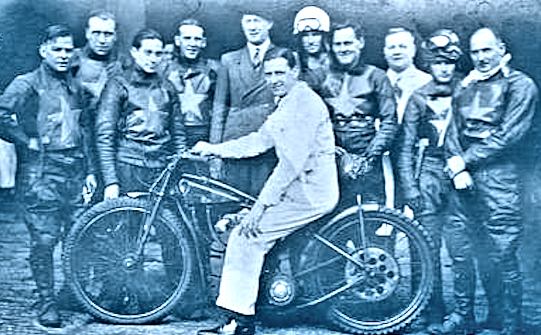 |
|
|
|
|
|
|
|
Ray is 4th from the left |
|
|
|
|
|
|
21
|
Daily Telegraph Sydney
|
Sydney Showground
|
Ray has returned from the UK and has competed
in France and Italy and being on the Wimbledon
team in England. He has been involved in
trials this week at the Showground.
|
|
21
|
The Sun Sydney (Wed)
|
Sydney Showground
|
North, south, east and west teams are to
compete. The first match being East vrs South
on Saturday. Ray has offered his services to
all teams but this will not be decided until
after the race this Saturday.
|
|
21
|
The Daily Telegraph(Wed)
|
Sydney Showground
|
The season starts this Saturday with Ray
riding for the League team Norths,
|
|
21
|
Labor Daily(Wed)
|
Sydney Showground
|
As previously mentioned Ray is anxiously sort
by the League teams.
|
|
24
|
The Labor Daily(Sat)
|
Sydney Showground
|
Ray to appear on opening tonight. He will
compete in handicap and scratch races.He will
ride in heat 1 with a 30 yard handicap.
|
|
25
|
Truth Sydney(Sun)
|
Sydney Showground
|
Ray placed first in heat 1 and 2nd
place in the semi final. Winning the final.
|
|
26
|
The Labor Daily Sydney(Mon)
|
Sydney Showground
|
As above.
|
|
27
|
The Labor Daily Sydney (Tue)
|
Sydney Showground
|
Ray considered an outstanding rider and hiss
nominated team will be announced shortly.
|
|
28
|
The Labor DailySydney
(Wed)
|
Sydney Showground
|
Ray nominated as Captain of the North Team of
the speedway league and will race on Saturday.
|
|
29
|
The Labor Daily Sydney (Thurs)
|
Sydney Showground
|
Ray will have a 35 yard handicap on Saturday
|
|
Month: September continued1938
|
|
Date
|
Source News Article
|
track
|
Comments
|
|
29
|
Referee Sydney
|
Sydney Showground
|
Ray won his 1st heat and was 2nd
place in the final. He showed fine style and
demonstrated the finer points of cutting in
and broardsiding.
|
|
30
|
Daily Telegraph Sydney(Fri)
|
Sydney Showground
|
Ray will race next Saturday for Norths against
Western Districts.
|
|
30
|
The Sun Sydney(Fri)
|
Sydney Showground
|
Ray to pair with E Phelps for Norths in the
Speedway League on Saturday night.
|
|
|
|
|
|
|
Month: October1938
|
|
Date
|
Source News Article
|
track
|
Comments
|
|
8
|
The Daily Telegraph Sydney(Sat)
|
Sydney Showground
|
Ray’s team Norths will compete against South
Sydney and he will also race in the handicap
and scratch race which is over 30 laps.
|
|
11
|
The Daily Telegraph Sydney(Fri)
|
Sydney Showground
|
Advertisement. As above
|
|
12
|
The Labor Daily Sydney(Sat)
|
Sydney Showground
|
As above. 2 attached advertisements.
|
|
12
|
The Daily Telegraph Sydney(Sat)
|
Sydney Showground
|
As above.
|
|
23
|
The Sun Sydney(Wed)
|
Sydney Showground
|
Ray to compete in the Flying Nine race next
Saturday.
|
|
|
|
|
|
|
Month: November 1938
|
|
Date
|
Source News Article
|
track
|
Comments
|
|
11
|
Sun Sydney(Fri)
|
Sydney Showground
|
Advertisement. Norths vrs East. Ray
representing Norths.Also a special event Ray
vrs Frank Dolan.
|
|
12
|
Sun Sydney (Fri)
|
Sydney Showground
|
As above.
|
|
13
|
Sunday Mail Brisbane (Sun)
|
Sydney Showground
|
Ray/Norths beat Easts 33-35. Ray 1st
place in the 1st heat of the
Big Scratch race. 3rd in the Final.
|
|
13
|
Sun Sydney(Sun)
|
Sydney Showground
|
As above. Ray and C Garland bumped together
and Garland fell although not seriously hurt.
|
|
13
|
Truth Sydney(Sun)
|
Sydney Showground
|
As above.
|
|
15
|
Daily Telegraph Sydney(Tues)
|
Sydney Showground
|
Next Saturday Ray will compete for Norths
against Easts. Also in a Special Match race.
|
|
16
|
Labor Daily Sydney(Wed)
|
Sydney Showground
|
As above.
|
|
17
|
Referee Sydney(Thurs)
|
Sydney Showground
|
As above.
|
|
18
|
Sun Sydney(Fri)
|
Sydney Showground
|
Advertisement for Saturday night. As above.
|
|
19
|
Labor Daily Sydney(Sat)
|
Sydney Showground
|
As above.
|
|
20
|
Sun Sydney(Sun)
|
Sydney Showground
|
Ray and Aub Lawson crashed and a decision was
made to disqualify Ray.
|
|
23
|
The Sun Sydney(Wed)
|
Sydney Showground
|
Ray to compete in the flying nine scratch race
on Saturday night.
|
|
23
|
Labor Daily Sydney(Wed0
|
Sydney Showground
|
As above. Also Match race between Doug Mac
Lachlan and Ray.
|
|
25
|
Labor Daily Sydney(Fri)
|
Sydney Showground
|
As above.
|
|
26
|
Sun Sydney(Sat)
|
Sydney Showground
|
As above.
|
|
27
|
Sun Sydney(Sun)
|
Sydney Showground
|
Andy Menzies beat Ray in the Challenge Race.
|
|
27
|
Truth Sydney (Sun)
|
Sydney Showground
|
Ray scored 2ndplave in the Flying
Nine Scratch race on Saturday night
|
|
|
|
|
|
|
Month: December 1938
|
|
Date
|
Source News Article
|
track
|
Comments
|
|
1
|
The Labor Daily(Thur)
|
Sydney Showground
|
Ray offered”Big chance” (not sure of meaning)
|
|
9
|
The Sun(Sydney(Fri)
|
Sydney Showground
|
Ray will pair with Bluey Wilkinson in the
local team vrs International team Jack and
Cordy Milne.
|
|
10
|
Daily News Sydney(Sat)
|
Sydney Showground
|
Sydneys strongest pair will be Bluey Wilkinson
and Ray.
|
Comments.
Note: The results of
some races are unknown as information is,
as yet unavailable.
Ray Taylor :
Newspaper articles.
Speedway
year
1939
|
Month: January 1939
|
|
Date
|
Source News Article
|
track
|
Comments/ Article
|
|
12
|
The Telegraph Brisbane(Thur)
|
Exhibition Speedway Brisbane
|
Speedway practice in preparation for next
Saturday. Ray who arrived in Brisbane is
expected tonight.
|
|
12
|
The Courier Mail Brisbane(Thur)
|
Exhibition Speedway
|
As above for Saturday night.
|
|
12
|
The Telegraph Brisbane(Thur)
|
Exhibition Speedway Brisbane
|
Big Program arranged for Saturday of 25
races.Ray has returned from a successful
season in England.He will compete against
Steve Langdon in a special race and will
Captain the Tigers team against Langdon
Caption of the Lions Team.They will also
compete in the Dr Grey First Class Handicap.
(2 copies)
|
|
13
|
The Telegraph Brisbane(Fri)
|
Exhibition Speedway
|
As above. Ray to appear after season abroad.(2
copies) Advertisement also. Photo.
|
|
14
|
Courier Mail Brisbane(Saturday)
|
Exhibition Speedway
|
As avove. Detail-Ray arrived in Brisbane after
tour in England, Italy, France and America.
Will ride new J.A.P. motor.
|
|
15
|
Sunday Mail(Sun)
|
Exhibition Speedway
|
Ray beat Langdon in the special race although
his team (the Lions) were defeated by Langdons
team(the Tigers) by one point.
Ray failed to place in the handicap
race.
|
|
15
|
Truth Brisbane(Sun)
|
Exhibition Speedway
|
As above. Ray met with mixed luck.
|
|
16
|
The Daily Mercury(Mon)
|
Exhibition Speedway
|
As above.
|
|
16
|
Maryborough Chronical. Wide Bay and Burnett
Advertiser. Qld. (Mon)
|
Exhibition Speedway
|
As above.
|
|
16
|
Cains Post. Qld(Mon)
|
Exhibition Speedway
|
As above.
|
|
Month: January continued 1939
|
|
Date
|
Source News Article
|
track
|
Comments/ Article
|
|
16
|
Courier Mail Brisbane(Mon)
|
Exhibition Speedway Brisbane
|
Ray beat Steve Langdon in exciting race deemed
to be the best of the season. Ray finishing 5
yards ahead. Photo.
|
|
16
|
Telegraph Brisbane(Mon)
|
Exhibition Speedway
|
As above. Photo of Ray.
|
|
17
|
The Sun Sydney
|
Sydney Showground
|
Ray selected as Reserve for the 2nd
Test team against England.
|
|
17
|
Worker Brisbane(Tue)
|
Exhibition Speedway
|
As previously mentioned.
|
|
18
|
The Sun Sydney (Wed)
|
Sydney Showground
|
Changes to the Test team and Ray now emergency
Reserve. Ray in junior team competion which
ended in a tie.
|
|
|
|
|
|
|
Month: February 1939
|
|
Date
|
Source News Article
|
track
|
Comments/Atticles
|
|
8
|
Daily News Sydney(Wed)
|
Sydney Showground
|
Ray to trial for the 4th test match
against England.
|
|
9
|
The Sun Sydney
|
Sydney Showground
|
Charlie Spinks has poisoned arm. Reshuffle of
test team. Ray paired with Andy Menzies.
|
|
10
|
The Sun Sydney(Fri)
|
Sydney Showground
|
Ray to race in match race and will be test
team reserve.
|
|
10
|
The
Sydney Morning Herald(Fri)
|
Sydney Showground
|
Police Carnival will be held Saturday Ray to
ride in Police Derby.
|
|
11
|
Record. Brian Darby
|
Sydney Sportsground
|
Australia vrs England. 4th Test.
Australia defeated England 28-24. Ray 2nd
in heat 8. Ray replaced Dolan.
|
|
13
|
Daily News Sydney(Mon)
|
Sydney Showground
|
Ray paired with Bluey Wilkinson and scored
well. England suffered a fall which prevented
them from a victory.
|
|
15
|
Daily News Sydney(Wed)
|
Sydney Showground
|
Team pair changes are certain for the 5th
Test and Ray has earned the right to be paired
with Bluey Wilkinson.
|
|
16
|
Referee Sydney(Thurs)
|
Sydney Showground
|
Comments on 4th test victory. Ray
and Aub Lawson did what was required of them.
|
|
17
|
Sun Sydney(Fri)
|
Sydney Showground
|
Ray was reserve in 4th Test will be
partner to Kangaroo Captain Bluey Wilkinson in
the 5th Test.
|
|
Month: February continued1939
|
|
Date
|
Source News Article
|
track
|
Comments/Atticles
|
|
18
|
Record from Brian Darby
|
Sydney Showground
|
Australia vrs England. 5th Test.
Australia defeated England 35-18. Ray 3rd
in heat 1. 2nd in heat 5.Fell in
heat 8.
|
|
21
|
Sun Sydney(Fri)
|
Sydney Showground
|
Ray to provide good opposition (rest
unreadable) As above.
|
|
25
|
Daily News Sydney(Sat)
|
Sydney Showground
|
Australia won Ashes. Ray to pair again with
Bluey Wilkinson against the rest of the world.
|
|
25
|
Program front cover
|
Sydney Showground
|
Race. Australia vrs The Rest of the World.
|
|
|
|
|
|
|
Month: April 1939
|
|
Date
|
Source News Article
|
track
|
Comments/Articles
|
|
18
|
The Sun Sydney(Tue)
|
Penrith Raceway
|
Ray has entered for the 500cc motor cycle
championship.
|
|
21
|
The Sun Sydney(Fri)
|
Penrith Raceway
|
Unreadable. Ray to race.
|
|
21
|
Daily News Sydney(Fr)
|
Penrith Raceway
|
As above.
|
|
23
|
The Sun Sydney(Sun)
|
Penrith Raceway
|
As above.
|
|
28
|
South Coast Times(Fri)
|
Wollongong
|
Members of the Wollongong Motor cycle club
have been given permission to run speedway
meetings on Wollongong speedway. Ray amongst
others are interested and signified their
intention of competing,
|
|
Month: May1939
|
|
Date
|
Source News Article
|
track
|
Comments
|
|
25
|
Referee Sydney(Thur)
|
Wollongong Speedway
|
Wollongong speedway opens Sunday week. It is
320 yards in circumference with short sharp
bends. Its is nearly 40 feet in width and will
enable 6 to 8 riders to compete in each event
from scratch. Meetings to be held on Sunday
afternoons. Ray and other riders to appear.
|
|
Month: May1939
|
|
Date
|
Source News Article
|
track
|
Comments
|
|
26
|
Illawwarra Mercury Wollongong(Fri)
|
Wollongong Speedway
|
Ray to compete.
|
|
Month: May continued
1939
|
|
Date
|
Source News Article
|
track
|
Comments
|
|
26
|
South Coast Times and Wollongong Argus(Fri)
|
Wollongong Speedway
|
As above.
|
|
|
|
|
|
|
Month: November 1939
|
|
Date
|
Source News Article
|
track
|
Comments
|
|
26
|
The Daily Telegraph Sydney(Sun)
|
? Speedway
|
Advertisement. Ray to ride on 2nd
December.
|
|
29
|
Daily News Sydney(Wed)
|
Sydney Showground
|
Ray to ride in Flying nine handicap.
|
|
|
|
|
|
|
Month: December 1939
|
|
Date
|
Source News Article
|
track
|
Comments
|
|
1
|
Daily News Sydney(Fri)
|
Sydney Showground
|
Ray and Wally Little annoyed that they have
not been alotted the match against Englishman
Cliff Parkinson. Ray is anxious to meet
tomorrow nights winner.
|
|
2
|
Daily News Sydney (Sat)
|
Sydney Showground
|
Ray be in more than one final tonight.
|
|
2
|
Daily Telegraph Sydney(Sat)
|
Sydney Showground
|
Ray to ride in the Big Nine.
|
|
3
|
Daily Telegraph Sydney(Sun)
|
Sydney Showground
|
Ray 1st in Eastern Suburbs
Handicap.Ray 1st in Heat 1 of Big
nine and 3rd in the final.
|
|
4
|
Daily News Sydney
|
Sydney Showground
|
As above.
|
|
8
|
Sun Sydney(Fri)
|
Sydney Showground
|
Ray to compete in Big nine scratch race on
Saturday night. Also advertisement.
|
|
9
|
The Sun Sydney(Sat)
|
Sydney Showground
|
Ray will be part of the Australian tean to
contest the American team.
|
|
14
|
The Sun Sydney(Thurs)
|
Sydney Showground
|
Ray will pair up with Linoel Van Praag as pert
of the Wembley Lions against the Rest. It was
noted that riders are becoming light weight
types.
|
|
Month:
December continued
1939
|
|
Date
|
Source News Article
|
track
|
Comments
|
|
15
|
The Daily Telegraph Sydney(Fri)
|
Sydney Showground
|
Advertisement. Saturday night.
|
|
22
|
The Sun Sydney(Fri)
|
Sydney Showground
|
Advertisement for this Saturday Night.
|
|
24
|
The Daily Telegraph Sydney(Sat)
|
Sydney Showground
|
Ray will pair again with Linoel Van Praag for
the Police motor cycle derby.
|
|
29
|
The Sun Sydney(Fri)
|
Sydney Showground
|
Senior team vrs Junior Team. Juniors have a 50
yard handicap. Saturday night.
|
|
31
|
Daily Telegraph Sydney(Sun)
|
Sydney Showground
|
Overseas speedway team won by 43 points to 29.
Ray put up a spectacular ride in no 2 scratch
race heat 3 but fell in the final.
|
|
|
|
|
|
Comments.
Note: The results of
some races are unknown as information is,
as yet unavailable.
Ray Taylor :
Newspaper articles.
Speedway year
(WW2 YEARS)
1940
|
Month:
January 1940
|
|
Date
|
Source News Article
|
track
|
Comments/ Article
|
|
5
|
The Sun Sydney(Fri)
|
Sydney Showground
|
Ray to join the league for team wests.
|
|
6
|
Daily News Sydney(Sat)
|
Sydney Showground
|
As above. Ray scored as 4th best.
|
|
13
|
The Daily Telegraph(Sat)
|
Sydney Showground
|
Inter district league football is established
and the same format is taking plave in dirt
track racing. Ray is part of the West team.
|
|
|
|
|
|
|
Month: February1940
|
|
Date
|
Source News Article
|
track
|
Comments/ Article
|
|
1
|
The Sun Sydney(Thur)
|
Sydney Showground
|
Ray will ride for league wests team and has a
new machine, his third this year.
|
|
2
|
The Sun Sydney(Fri)
|
Sydney Showground
|
Ray will pair with Bob Hill as favorites on
Saturday,
|
|
24
|
The Daily Telegraph(Sat)
|
Sydney Showground
|
Ray to face Van Praag in the Police motor
cycle Derby.
|
|
|
|
|
|
|
Month: April 1940
|
|
|
Date
|
Source News Article
|
track
|
Comments/Articles
|
|
25
|
The Sun Sydney(Thur)
|
Penrith Raceway
|
In the final of the Open handicap race;injuries to 4 riders. Ray had abrasions
to his leg and right thigh .
He was hurled
15 feet in the air and flung across the track.
|
|
Date
|
Source News Article
|
track
|
Comments/Articles
|
|
26
|
Daily News Sydney(Fri)
|
Penrith Raceway
|
As above. A member of the crowd also
died
while watching the event.
|
| |
|
|
|
| 29 |
The Sun Sydney(Mon)
|
Sydney Showground
|
The Anzac events were washed out on Saturday
night.
|
|
30
|
The Daily Telegraph Sydney
|
Sydney Showground
|
The Anzac events were washed out again on
Saturday night.
|
|
|
|
|
|
|
Month: May1940
|
|
Date
|
Source News Article
|
track
|
Comments
|
|
3
|
Daily News Sydney(Fri)
|
Penrith Raceway
|
Eddie Wannick who crashed on 26th
will be in hospital for 3 months. When ray
fell in the race Eddie struck his machine.
|
|
|
|
|
|
|
Month: October 1940
|
|
Date
|
Source News Article
|
track
|
Comments
|
|
16
|
The Cumberland Argus and Fruitgrowers Advocate
Parramatta(Wed)
|
Parramatta Speedway
|
Advertisement.
|
|
18
|
The Daily Telegraph Sydney(Fri)
|
Parramatta Speedway
|
Speedway has had a 15,000 pound renovation.
Ray attends opening races.
|
|
19
|
The Daily Telegraph Sydney(Sat)
|
Sydney Showgrownd
|
Opening season and Ray to vrs Max Neale.
|
|
20
|
Sun Sydney(Sun)
|
Parramatta Speedway
|
Ray won the 1st heat against Max
but his chain broke in the next 2 heats of the
Paramatta Match race. Ray gashed twice but
remounted each time.
|
|
Month: October continued
1940
|
|
Date
|
Source News Article
|
track
|
Comments
|
|
23
|
The Cumberland Argus and Fruitgrowers Advocate
Parramatta(Wed)
|
Parramatta Speedway
|
As above.
|
|
24
|
Truth Sydney(Sun
|
Paramatta Speedway
|
As above
|
|
30
|
The Cumberland Argus and Fruitgrowers Advocate
Parramatta(Wed)
|
Sydney Showground
|
On Saturday night Ray could not
race as
his entry had been received
too
late and the crowd chanted
“We want Ray Taylor”when they discovered he
was not racing.
|
|
Month: November1940
|
|
Date
|
Source News Article
|
track
|
Comments
|
|
3
|
Daily Telegraph Sydney(Sun)
|
Parramatta Speedway
|
Ray in teams race. Ray fell in the 3rd
heat and his fellow competitors, Max Neale and
Frank Dolan, put their machines down to avoid
hitting him.Dolan in doing so skidded as he
crashed into Rays machine and somersaulted
just escaping serious injury. Ray fell again
in the 5th heat.
|
|
3
|
Sun Sydney(Sun)
|
Paramatta Speedway.
|
As above.Ray had his 4th fall in
the big scratch race.
|
|
6
|
The Cumberland Argus and Fruitgrowers Advocate
Parramatta(Wed)
|
Paramatta Speedway.
|
As above.
|
|
12
|
The Daily Telegraph Sydney(Tue)
|
Paramatta Speedway
|
Ray will compete with Wally Little the
Paramatta Champion on Saturday night.
|
|
12
|
The Sun Sydney(Tue)
|
Paramatta Speedway
|
As above.
|
|
13
|
The Cumberland Argus and Fruitgrowers Advocate
Parramatta(Wed)
|
Paramatta Speedway
|
As above they will meet in a special match
race of the night.
|
|
13
|
The Daily Telegraph Sydney(Wed)
|
Paramatta Speedway
|
As above.
|
|
16
|
The Newcastle Sun(Thur)
|
Parramatta Speedway
|
As above.
|
|
16
|
The Sun Sydney(Sat)
|
Parramatta Speedway
|
Ray to race Little as above in a 3 heat match
race..
|
|
Month: November1940
|
|
Date
|
Source News Article
|
track
|
Comments
|
|
20
|
The Cumberland Argus and Fruitgrowers Advocate
Parramatta(Wed)
|
Parramatta Speedway
|
Above Postponement due to rain.
|
|
21
|
The Advertiser Adelaide
|
Parramatta Speedway
|
Wally Little and Ray to race.
|
|
24
|
Sun Sydney(Sun)
|
Parramatta Speedway
|
Ray won the Richmond Match Race in 3 straight
Heats.
|
|
27
|
The Cumberland Argus and Fruitgrowers Advocate
Parramatta(Wed)
|
Parramatta Speedway
|
As above.
|
|
|
|
|
|
|
Month: December1940
|
|
Date
|
Source News Article
|
track
|
Comments
|
|
4
|
The Cumberland Argus and Fruitgrowers Advocate
Parramatta(Wed)
|
Paramatta Speedway
|
Ray in a novelty event with Brian Howard 2KY
Announcer. Ray will give Brian 1 lap handicap
as Brian on a bicycle will compete on a his
JAP motor cycle.
|
|
5
|
The Sun Sydney(Thur)
|
Paramatta Speedway
|
Ray and Jack Rydstrom of the Parramatta team
will compete against Wally Little’s Sydney
Team on Saturday night.
|
|
7
|
The Sun Sydney(Sat)
|
Paramatta Speedway
|
Teams of Paramatta and Sydney will compete
|
|
|
|
|
In a 9 heat race on Saturday. Ray is Captain
of the Paramatta team.
|
|
8
|
The Sun Sydney(Sun)
|
Paramatta Speedway
|
Paramatta team defeated Sudney . Ray broke the
one lap clutch start record and later crashed
into a fence but not seriously hurt. Ray won
heats 1 and 4 of the teams race.
|
|
11
|
The Cumberland Argus and Fruitgrowers Advocate
Parramatta(Wed)
|
Parramatta Speedway
|
The competion previously arranged on 4th
December had an earth shattering finish
between Ray on his motor bike and 2KYs
Announcer on bicycle as Brian crossed the
finish line a few yards in front of Ray to the
roar of the crowd.
|
|
14
|
The Sun Sydney(Sat)
|
Sydney Showground
|
Rays district team Wests will meet Souths on
Saturday night.
|
|
19
|
Daily Telegraph Sydney(Thurs)
|
Sydney Showground
|
Ray, Ken Blair,Noel Thompson and and Max Neal
will meet for a challenge race on Saturday
night.
|
|
Month: December continued 1940
|
|
Date
|
Source News Article
|
track
|
Comments
|
|
20
|
The Sydney Morning Herald
|
Sydney Showground
|
Ray to compete in Western District against
undefeated Eastern Suburbs and he will partner
R Hill(USA)
|
|
22
|
Truth Sydney(Sun)
|
Sydney Showground
|
In the percentage scratch race on Saturday
night Ray fell and Max Neal rode over him.
Both were not seriously injured but their
bikes were twisted wreckage.
|
|
|
|
|
|
Ray Taylor :
Newspaper articles.
Speedway year
(WW2 YEARS)
1941
|
Month: January 1941
|
|
Date
|
Source News Article
|
track
|
Comments/ Article
|
|
4
|
The Daily Telegraph Dydney (Sat)
|
Sydney Showground
|
Ray to compete in scratch race
|
|
6
|
The Sydney Morning Herald Sydney(Mon)
|
Sydney Showground
|
Rays team, Western Sydney beat Souths team
1-10 in the District competition.
|
|
16
|
The Daily Telegraph Sydney(Sun)
|
Sydney Showground
|
Ray had 2nd place in heat 1 of the
Police speedway derby.
|
|
19
|
Sun Sydney (Sun)
|
Sydney Showground
|
Hard to read
|
|
23
|
The Sun Sydney(Thur)
|
Sydney Showground
|
Bob Hill to partner Ray in the District teams
competition for Wests on Saturday night.
|
|
|
|
|
|
|
Month: February1941
|
|
Date
|
Source News Article
|
track
|
Comments/ Article
|
|
2
|
Daily Telegraph Sydney(Sun)
|
Sydney Showground
|
Norths beat Wests 1-10. Ray 2nd
place in heat 2.
|
|
8
|
Sydney Sports Ground Speedway Program
|
Sydney Showground
|
Ray listed among top solos.
|
|
9
|
Daily Telegraph Sydney(Sun)
|
Sydney Showground
|
Arta Scratch Race Ray 3rd place in
heat 2.
District team race uncertain.
|
|
16
|
Sun Sydney(Sun)
|
Sydney Showground
|
Ray 2nd place in heat 2. Police
Derby.
|
|
|
|
|
|
|
Month: March
1941
|
|
Date
|
Source News Article
|
track
|
Comments/Atticles
|
|
20
|
Nepean Times Penrith
|
Penrith Speedway
|
5 mile solo championship planned and Ray
expressed interest.
|
|
16
|
Truth Sydney (Sun)
|
Sydney Showground
|
Wests beat Easts. Ray 2nd place in
heat 2.
|
|
21
|
The Daily Telegraph Sydney(Fri)
|
Sydney Showground
|
East Wests to meet south norths
in District on Saturday.
|
|
23
|
Truth Sydney(Sun)
|
Sydney Showground
|
As above -dead heat 27 points each. Ray
2nd place in heat.
|
|
23
|
Sun Sydney(Sun)
|
Sydney Showground
|
As above
|
|
30
|
Sun Sydney(Sun)
|
Sydney Showground
|
East wasts beat souths north. Ray 2nd
place in heat 2.
|
|
|
|
|
|
|
Month: April 1941
|
|
Date
|
Source News Article
|
track
|
Comments/Atticles
|
|
3
|
The Sun Sydney(Thur)
|
Sydney Showground
|
Ray in Flying nine race.
|
|
12
|
Sydney Morning Herald(Sat)
|
Sydney Showground
|
Ray 3rd place in World Derby.
|
|
|
|
|
|
|
Month: May1941
|
|
Date
|
Source News Article
|
track
|
Comments
|
|
7
|
The Sun Sydney(Wed)
|
Sydney Showground
|
Vic Duggan to oppose Ray on Saturday night
|
|
8
|
The Daily Telegraph(Thur)
|
Sydney Showground
|
Speedway night will close on Saturday. Ray to
meet Vic Duggan.
|
|
Month: November1941
|
|
Date
|
Source News Article
|
track
|
Comments
|
|
12
|
The Sun Sydney
|
Sydney Showground
|
Several changes to the inter district
competition. Western Suburbs team members
Cecil Garland and Noel Thompson will replace
Bob Hill(USA) who is unavailable and Ray who
is now a member of the RAAF.
|
|
|
|
|
|
Note: The results of
some races are unknown as information is,
as yet unavailable. This is the last season
until after hostilities in World War Two.
Ray Taylor :
Newspaper articles.
Speedway year
(WW2 YEARS)
1944
|
Month: August 1944
|
|
Date
|
Source News Article
|
track
|
Comments
|
|
30
|
The Daily Telegraph Sydney(Wed)
|
Article
|
Ray is to compete in the Goulburn to Sydney
cycle race. He is a member of the RAAF. He
contested it in 1928.
|
|
|
|
|
|
Note: The results of
some races are unknown as information is,
as yet unavailable. This is the only
information found for the war years from 1942 to 1945.
Ray Taylor :
Newspaper articles.
Speedway year
(WW2 YEARS)
1945
|
Month: September 1944
|
|
Date
|
Source News Article
|
track
|
Comments
|
|
30
|
Truth Sydney(Sun)
|
Sydney Showground
|
The Best Pairs Championship. Aub Menzies
paired with Ray. Score 6 points.
|
Note: The results of
some races are unknown as information is, as yet
unavailable. This is the only information found for
the war years from 1942 to 1945.
Ray Taylor :
Newspaper articles.
Speedway year
(Post WW2 YEARS)
1946
|
Month: February 1946
|
|
Date
|
Source News Article
|
track
|
Comments/ Article
|
|
6
|
The Sun Sydney(Wed)
|
Sydney Showground
|
Advertisement.
|
|
6
|
The Daily TelegraphSydney(Wed)
|
Sydney Showground
|
Advertisement. Fred Tracey vrs Ray in solo
match race.Team series led by Fred and Ray.
|
|
12
|
The Daily Telegraph(Tue)
|
Sydney Showground
|
As above 2 copies.
|
|
13
|
The Daily Telegraph(Wed)
|
Sydney Showground
|
Advertisement . As above.
|
|
14
|
The Daily Telegraph(Thurs)
|
Sydney Showground
|
Advertisement . As above tonight.
|
|
17
|
The Sun Sydney(Sun)
|
Sydney Showground
|
Sydneys team could be Ray, Harry Green, K
Gurtner and one other.
|
|
19
|
The Sun Sydney(Tue)
|
Sydney Showground
|
Ray to match winner of the Main Match Race.
|
|
20
|
The Sun Sydney(Wed)
|
Sydney Showground
|
Ray will give a handicap to opponent of up to
190 yards.
|
|
26
|
The Sun Sydney(Tue)
|
Sydney Showground
|
Advertisement. Challenge solo match. Ray
vrs Keith Gurtner.
|
|
26
|
The Daily Telegraph Sydney(Tue)
|
Sydney Showground
|
Advertisement. As above.
|
|
27
|
The Newcastle Sun(Wed)
|
Broardmeadow Speedway
|
Ray will appear in special match vrs Bill
Rogers.
|
|
27
|
The Sun Sydney
|
Sydney Showground
|
As previously mentioned. A Challenge match.
Ray has one of the lightest machines here.
Tonight.
|
|
27
|
The Daily Telegraph Sydney(Wed)
|
Sydney Showground
|
As above. Advertisement.
|
|
|
|
|
|
|
Month: March1946
|
|
Date
|
Source News Article
|
track
|
Comments/Atticles
|
|
2
|
The Newcastle Sun
|
Newcastle Speedway
|
Photo of Ray practicing at Newcastle speedway
for his match race with Bill Rogers.
|
|
|
|
|
|
|
Month: April1946
|
|
Date
|
Source News Article
|
track
|
Comments
|
|
8
|
Unknown
|
Sydney Showground
|
Ray lost race to Keith Guertner.
|
|
|
|
|
|
|
Month: September1946
|
|
Date
|
Source News Article
|
track
|
Comments
|
|
9
|
The Daily Telegraph Sydney(Mon)
|
Windsor Circuit
|
Ray appointed Manager of Windsor Circuit.
Granite track and designed by Ray.
|
|
|
|
|
|
|
Month: November1946
|
|
Date
|
Source News Article
|
track
|
Comments
|
|
10
|
The Daily Telegraph Sydney(Sun)
|
Sydney Showground
|
Golden Helmet scratch race. Ray 1st
place. Last night.
|
|
13
|
Daily Telegraph Sydney(Fri)
|
Sydney Royale(Showground)
|
Archie Neal to race Ray.
|
|
14
|
The Sun Sydney(Thur)
|
Sydney Royale
|
Ray won the Golden Helmet on Saturday 9 Nov.
|
|
15
|
The Daily Telegraph Sydney(Fri)
|
Sydney Showground(Royale)
|
Advertisement. Ray to race next Saturday.
|
|
17
|
The Sun Sydney(Sun)
|
Sydney Royale
|
Ray outstanding in the Solo match race.Final 1st
place.
|
|
17
|
The Sydney Morning Herald
|
Sydney Royale
|
As above.
|
|
Month: November continued1946
|
|
Date
|
Source News Article
|
track
|
Comments
|
|
21
|
The Sun Sydney(Thur)
|
Sydney Royale
|
As above. Ray will again star next Saturday
and retain his unbeaten record.
|
|
22
|
The Daily Telegraph Sydney(Fri)
|
Sydney Royale
|
Advertisement. Ray a record Golden Helmet
winner. 2 copies.
|
|
28
|
The Sun Sydney(Thurs)
|
Sydney Royale
|
Advertisement.
|
|
29
|
The Daily Telegraph Sydney(Fri)
|
Sydney Royale
|
Advertisement. 2 copies.
|
|
|
|
|
|
|
Month: December 1946
|
|
Date
|
Source News Article
|
track
|
Comments
|
|
1
|
Unknown(possibly Sun Sydney)
|
Sydney Royale
|
Ray wins Speed solo handicap.
|
|
5
|
Sun Sydney(Thurs)
|
Sydney Royale
|
Advertisement. Ray to race again for Golden
Helmet on Saturday night.
|
|
5
|
Unknown(Thurs)
|
Sydney Royale
|
As above.
|
|
5
|
The Sun Sydney(Thurs)
|
Sydney Royale
|
As above.
|
|
5
|
Sydney Morning Herald (Thur)
|
Sydney Royale
|
As above.
|
|
6
|
The Daily Telegraph Sydney(Fri)
|
Sydney Royale
|
As above. 2 copies with photo of Ray on bike.
|
|
7
|
The Sun
Sydney(Sat)
|
Sydney Royale
|
As above. Tonight.
|
|
17
|
Sydney Morning Herald (Tues)
|
Sydney Royale
|
Ray won 2nd heat and Final of the
open solo handicap on Saturday night.
|
|
22
|
Unknown (Sun)
|
Sydney Royale
|
Sole scratch race was rerun because Ray had
his head caught in the starting tapes
suffering burns on the throat. He won and was
treated afterwards for his injuries.
|
|
29
|
The Sun Sudney(Sun)
|
Sydney Royale
|
Ray won the Solo scratch race again last night
and registered his 8th consecutive
victory. Headline”Taylor shines at Speedway”.
|
|
|
|
|
|
Comments.Note: The
results of some races are unknown as information is,
as yet unavailable.
Ray Taylor :
Newspaper articles.
Speedway year
(Post WW2 YEARS)
1947
Contents:
|
Month: January 1947
|
|
Date
|
Source News Article
|
track
|
Comments/ Article
|
|
|
|
|
|
|
9
|
Unknown(Thurs)
|
Sydney Royale
|
Ray won Golden Helmet last Saturday will have
handicaps of up to 140 yards.
|
|
9
|
Unknown(Thurs)
|
Sydney Royale
|
Advertisement.
|
|
10
|
The Daily Telegraph Sydney(Fri)
|
Sydney Royale
|
Advertisement. Saturday. Can Ray maintain his
unbroken record?
|
|
12
|
The Sun Sydney(Sun)
|
Sydney Royale
|
Crowd of 20,000. Ray placed 3rd in
the Final solo race
|
|
16
|
The Sun Sydney (Thurs)
|
Sydney Royale
|
Advertisement. Next Saturday.
|
|
17
|
The Daily Telegraph Sydney(Fri)
|
Sydney Royale
|
As above.
|
|
17
|
The Courier Mail Brisbane(Fri)
|
Sydney Royale
|
Ray has been unbeaten in 10 starts and he will
challenge the winner of the Charlie Spinks and
Andy Menzies race next Saturday,
|
|
18
|
The Sydney Morning Herald(Sat)
|
Item only
|
Photo of Ray. Ray has been offered 500 pounds
to ride in England.
|
|
18
|
The Telegraph Brisbane(Sat)
|
Exhibition Speedway
|
Ray raced at this track in the 1930s.
|
|
18
|
The Sun Sydney(Sat)
|
Sydney Royale
|
Ray will attack some existing records tonight.
|
|
18
|
The Courier Mail Brisbane(Sat)
|
Sydney Royale
|
Winner of tonights match race will meet Ray on
26th.
|
|
18
|
Unknown
|
Sydney Royale
|
Ray will compete with Bill Reynolds in a car
and Ray on a bike.
|
|
Month: January continued 1947
|
|
Date
|
Source News Article
|
track
|
Comments/ Article
|
|
20
|
Truth Brisbane(Wed)
|
Exhibition Speedway Brisbane
|
Ray will make first appearance since 1939. To
compete with Andy Menzies, Archie Neal,
Charlie Spinks and co.
|
|
21
|
The Telegraph Brisbane(Tue)
|
Exhibition Speedway
|
As above
|
|
22
|
The Courier Mail Brisbane(Wed)
|
Exhibition Speedway
|
Ray has claimed a record for his last 19
rides.
|
|
23
|
Truth Sydney(Sun)
|
Sydney Royale
|
Ray took a second the 3 laps clutch start
record when he covered the distance in 1.3
3-5. Last night.
|
|
22
|
The Courier Mail Brisbane(Wed)
|
Exhibition Speedway
|
Ray refused an offer to go to England for 500
pounds when he could stay in Australia and
have a signing on offer for at least 650
pounds with return fares to England with one
mechanic.Ray scored his nineteenth successive
win. He failed in his attempt for the worlds
third of a mile record by 1-5 second,
|
|
22
|
The Telegraph Brisbane(Wed)
|
Exhibition Speedway
|
Advertisement. Ray will ride a match race with
Andy Menzies.
|
|
23
|
The Telegraph Brisbane(Thurs)
|
Exhibition Speedway
|
As above. Test riders will compete in events
on Saturday. Ray to meet strong competition
from locals.
|
|
23
|
Truth Sydney(Sun)
|
Exhibition Speedway
|
As previously. Ray took one second off the 3
lap clutch start record last night.
|
|
24
|
The Courier Mail Brisbane(Fri)
|
Exhibition Speedway
|
As above.
|
|
25
|
The Courier Mail Brisbane(Sat)
|
Exhibition Speedway
|
Advertisement. Ray to meet Andy Menzies.
Photo.
|
|
25
|
The Courier Mail Brisbane(Sat)
|
Exhibition Speedway
|
Despite heavy rain the track will be in good
order for Saturday night. Ray confident that
he will match Andy Menzies. Rays JAP motor has
special alloy which has enabled him a top
performance.
|
|
26
|
Truth Brisbane(Sun)
|
Exhibition Speedway
|
Race postponed until tomorrow night.
|
|
Date
|
Source News Article
|
track
|
Comments/ Article
|
|
29
|
The Courier Mail Brisbane(Wed)
|
Exhibition Speedway
|
Ray rode a bicycle to get in shape after
coming out of the services. Firm believer in
physical fittnes and non drinker and smoker
and often goes to the gym. Ray will compete in
the Qld mile motor cycle championship on
Saturday he will compete with winners of two
events.
|
|
30
|
The Courier Mail Brisbane(Fri)
|
Exhibition Speedway
|
England after young Aussie Riders. This comes
after their offer to Ray which he refused.
Tommy Trinder will present the Trophy for the
4 lap Queensland Championship.
|
|
30
|
The Telegraph Brisbane(Thur)
|
Exhibition Speedway
|
Advertisement.
|
|
31
|
The Telegraph Brisbane(Fri)
|
Exhibition Speedway
|
The special fuel used in motor cycles cost
more than 10 shillings a gallon. British
comedian Tommy Trinder will appeal at the
speedway for the British food appeal.
|
|
31
|
The Courier Mail Brisbane(Fri)
|
Exhibition Speedway
|
Ray will ride to break the worlds record for a
mile on a quarter mile track. Current record
is held by Andy Menzies at 72 secs. Will race
in a triangular match race and the mile solo
handicap.
|
|
|
|
|
|
|
Month: February continued1947
|
|
Date
|
Source News Article
|
track
|
Comments/ Article
|
|
1
|
The Northern Star Lismore NSW(Sat)
|
Exhibition Speedway
|
Ray will attack the worlds record for a mile
on the quarter mile track tonight. Ray will
not risk his motor in the record attempt and
would have to wait a year for another attempt.
The record is currently held by Andy Menzes at
73 secs.
|
|
1
|
Courier Mail Brisbane(Sat)
|
Exhibition Speedway
|
As above
|
|
2
|
Truth Brisbane(Sun)
|
Exhibition Speedway
|
Archie Neal won the solo championship over Ray
in the final.
|
|
2
|
The Sunday Mail Brisbane
(Sun)
|
Exhibition Speedway
|
As above
|
|
6
|
Sun Sydney (Thurs)
|
Sydney Royale
|
Advertisement. Ray to appear.
|
|
7
|
Daily Telegraph Sydney(Fri)
|
Sydney Royale
|
As above
|
|
7
|
The Telegraph Brisbane(Fri)
|
Exhibition Speedway
|
Ray was first to come to the ground and is now
followed by other international and interstate
riders.
|
|
14
|
The Daily Telegraph Sydney(Fri)
|
Sydney Royale
|
Advertisement. Ray to ride in solo handicap on
Saturday.
|
|
23
|
Truth Sydney(Sun)
|
Sydney Royale
|
Ray won scratch race over 3 laps.
|
|
23
|
Sun Sydney(Sun)
|
Sydney Royale
|
As above. Ray lowered the previous record by
one second.
|
|
25
|
Truth Sydney(Sun)
|
Sydney Royale
|
As above. Ray covered the distance in 1.3
3-5.(3 laps)
|
|
|
|
|
|
|
Month: March1947
|
|
Date
|
Source News Article
|
track
|
Comments/Atticles
|
|
11
|
The Telegraph Brisbane(Tue)
|
Exhibition Speedway
|
Queensland vrs The Rest places will be filled
to include Ray.
|
|
12
|
The Telegraph Brisbane(Wed)
|
Exhibition Speedway
|
Ray will be in the Rest team and will come by
plane on Friday.
|
|
14
|
The Telegraph Brisbane(Fri)
|
Exhibition Speedway
|
Ray arrives today.
|
|
14
|
The Courier Mail Brisbane(Fri)
|
Exhibition Speedway
|
The above event will be nine heats over a 3
quarter mile (3 laps)
|
|
15
|
The Courier Mail Brisbane(Sat)
|
Exhibition Speedway
|
As above.
|
|
16
|
Sunday Mail Brisbane(Sun)
|
Exhibition Speedway
|
Rest defeated Queensland 2-1 Rays motor was
low performance.
|
|
Date
|
Source News Article
|
track
|
Comments/Atticles
|
|
22
|
The Courier Mail Brisbane(Sat)
|
Exhibition Speedway
|
Competitors are keeping an eye on their bikes
as Rays was tampered with.
|
|
23
|
Truth Brisbane(Sun)
|
Exhibition Speedway
|
It is suspected that Rays bike was sabotaged
on its way from Sydney. The bike has been
examined under police supervision in Sydney
and found to be damaged by “foreign matter” It
appears the machine was tampered with on its
way to Brisbane.
|
|
23
|
Truth Sydney(Sun)
|
Sydney Royale
|
Ray 2nd place in Solo Handicap.
|
|
23
|
The Sun Sydney(Sun)
|
Sydney Royale
|
As above. Ray also won a heat in the solo
cucle scratch race. He was placed 3rd
in the open solo handicap final.
|
|
24
|
Telegraph Brisbane(Mon)
|
Sydney Royale
|
Bill Rogers is keeping an eye on his bike
after Rays experience.
|
|
Month: April1947
|
|
Date
|
Source News Article
|
track
|
Comments/Atticles
|
|
1
|
National Advocate Bathurst(Tue)
|
Bathurst Speedway
|
Ray has expressed his interest in attending
next Mondays Event.
|
|
12
|
Courier Mail Brisbane(Sat)
|
Exhibition Speedway
|
Item mentions Rays defeat of Ray in scratch
race in Sydney by Jack Chignell who is riding
at the speedway on Saturday night.
|
|
18
|
Daily Telegraph Sydney(Fri)
|
Sydney Royale
|
Advertisement. Ray is competing on Saturday
night
|
|
7
|
Program Easter Monday
|
Bathurst Speedway
|
Ray included in Program.
|
|
Month: May1947
|
|
Date
|
Source News Article
|
track
|
Comments
|
|
1
|
The Sun Sydney(Thur)
|
Sydney Royale
|
Advertisement. Ray vrs Andy Menzies in
interstate solo. Saturday
|
|
2
|
The Sydney Morning Herald(Fri)
|
Sydney Royale
|
As above.
|
|
3
|
Daily Telegraph Sydney(Sat)
|
Sydney Royale
|
As above. Tonight.
|
|
Date
|
Source News Article
|
track
|
Comments
|
|
4
|
The Sun Sydney(Sun)
|
Sydney Royale
|
Interstate match race. Andy Menzies beat Ray 2
heats to one.
|
|
4
|
Truth Brisbane(Sun)
|
Sydney Royale
|
As above.
|
|
7
|
Unknown(Tue)
|
Sydney Royale
|
As above.
|
|
7
|
Unknown(Tue)
|
Sydney Royale
|
As above.
|
|
18
|
The Sun Sydney(Sun)
|
Sydney Royale
|
Photo of Ray receiving his Thophy from Miss
Australia at the Showground last night. Betty
Orme.
|
|
18
|
Truth Sydney(Sun)
|
Sydney Royale
|
Rays 3 lap record was broken by Ken Blair.
|
|
Month: September1947
|
|
Date
|
Source News Article
|
track
|
Comments
|
|
10
|
Daily Telegraph Sydney(Wed)
|
Sydney Royale
|
Doug McLachlan will oppose Ray on Saturday
night.
|
|
14
|
Truth Sydney(Sun)
|
Sydney Royale
|
Ray 2nd place in the Solo scratch
race.
|
|
18
|
Daily Telegraph Sydney(Thurs)
|
Sydney Royale
|
Advertisement. Ray in Solo Handicap on
Saturday,
|
|
21
|
The Sun Sydney(Sun)
|
Sydney Royale
|
Ray had 2 wins and a 2nd place.
Fian scratch race.
|
|
26
|
Daily Telegraph Sydney(Fri)
|
Sydney Royale
|
Advertisement.
|
|
26
|
The Sun Sydney(Fri)
|
Sydney Royale
|
As above.
|
|
26
|
The Sydney Morning Herald(Fri)
|
Sydney Royale
|
Ray mentioned.
|
|
Month: October 1947
|
|
Date
|
Source News Article
|
track
|
Comments
|
|
3
|
Sun Sydney(Fri)
|
Sydney Royale
|
Advertisement.
|
|
3
|
Daily Telegraph (Fri)
|
Sydney Royale
|
Advertisement.
|
|
4
|
The Sun Sydney(Sat)
|
Sydney Royale
|
Advertisement. Match between Ray and Ken
Blair.
|
|
5
|
Truth Sydney(Sun)
|
Sydney Royale
|
Solo Challenge Match Ray 1stplave.Senior
solo scratch race Ray 2nd place.
|
|
10
|
Daily Telegraph Sydney(Fri)
|
Sydney Royale
|
Advertisement. Saturday night. Match races.
|
|
10
|
The Sun Sydney(Fri)
|
Sydney Royale
|
Advertisement and detail.
|
|
Month: October continued1947
|
|
Date
|
Source News Article
|
track
|
Comments
|
|
11
|
The Sydney Morning Herald(Sat)
|
Sydney Royale
|
Jack Chignell to meet Ray on Saturday night.
|
|
|
|
|
|
|
Month: November1947
|
|
Date
|
Source News Article
|
track
|
Comments
|
|
5
|
The Sun Sydney(Wed)
|
Sydney Royale
|
Riders will compete for the test teams. Ray
will captain one. Team mates being Dave Hynes,
Art Davies, Eddie Phelps, Jack Chignell.
|
|
6
|
Sydney Morning Herald(Thurs)
|
Sydney Royale
|
Advertisement. Teams competition Saturday
night.
|
|
7
|
Sun Sydney(Fri)
|
Sydney Royale
|
As above.
|
|
8
|
The Sun Sydney(Sat)
|
Sydney Royale
|
As above.
|
|
9
|
Truth Sydney(Sun)
|
Sydney Royale
|
Three crashes in the teams race last night.
Ray 1st place in Solo race.
|
|
10
|
Sydney Morning Herald(Mon)
|
Sydney Royale
|
English test team will ride against American
and Australians. Ray included.
|
|
12
|
Daily Telegraph Sydney(Wed)
|
Sydney Royale
|
As above details.
|
|
14
|
The Daily Telegraph Sydney(Fri)
|
Sydney Royale
|
English and American teams will compete
against Speedway Royale team of Ray, Jack
Chignell, Ken Blair and Dave Hynes.
|
|
14
|
The Sun Sydney(Fri)
|
Sydney Royale
|
Demonstration of an Autogyro. First triangular
teams race since 1938. Ray to compete on
Saturday night.
|
|
16
|
Truth Sydney(Sun)
|
Sydney Royale
|
American team won.
|
|
17
|
The Newcastle Sun NSW(Mon)
|
Maitland Speedway
|
Ray to race on Wednesday night. 19th
Nov.
|
|
18
|
The Cessnock Eagle and South Maitland Recorder
NSW(Tue)
|
Maitland Speedway
|
Overseas riders and Australia will meet in
special match races on Wednesday.
|
|
20
|
Newcastle Morning Herald and Miners Advocate
NSW(Thur)
|
Maitland Speedway
|
Ray 2nd place in International
match race.
|
|
20
|
Sun Sydney(Thurs)
|
Sydney Royale
|
Advertisement. Alex Stratham English Team to
meet Ray on Saturday Night.
|
|
21
|
Sun Sydney(Fri)
|
Sydney Royale
|
Advertisement. As above.
|
|
|
|
|
|
|
Month: November continued1947
|
|
Date
|
Source News Article
|
track
|
Comments
|
|
22
|
Newcastle Morning Herald and Miners Advocate
NSW(Sat)
|
Maitland Speedway
|
Advertisement. Ray to race with internationals
etc on Wednesday next.
|
|
28
|
Sun Sydney(Fri)
|
Sydney Royale
|
S advertised on 20th. Saturday
night.
|
|
30
|
Truth Sydney(Sun)
|
Sydney Royale
|
Ray 2nd place in the Challenge
match race.
|
|
|
|
|
|
|
Month: December1947
|
|
Date
|
Source News Article
|
track
|
Comments
|
|
3
|
Unknown(Wed)
|
Sydney Royale
|
4 countries will be represented in the best
pairs race at the Sydney Showground on
Saturday night. Ray included.
|
|
3
|
The Sydney Morning Herald(Wed)
|
Sydney Royale
|
Ray will race in a pairs match next Saturday
with Jack Milne.
|
|
3
|
Sun Sydney(Wed)
|
Sydney Royale
|
As above.
|
|
5
|
The Daily Telegraph Sydney(Fri)
|
Sydney Royale
|
As above.
|
|
6
|
The Daily Telegraph Sydney(Sat)
|
Sydney Royale
|
As above. Jack Milne is now 40 will be making
his first appearance this season.
|
|
14
|
Truth Sydney(Sun)
|
Sydney Royale
|
Pair team Bill Lamareaux and Ken Ryan beat Ray
and Jack Milne by 1 point.
|
Note: The results of
some races are unknown as information is, as yet
unavailable.
Ray Taylor :
Newspaper articles.
Speedway year
(Post WW2 YEARS)
1948
|
Month: January 1948
|
|
Date
|
Source News Article
|
track
|
Comments/ Article
|
|
|
|
|
|
|
13
|
The Sydney Morning Herald(Tue)
|
Sydney Royale
|
Ray is included in 16 riders who will compete
in the Australian Solo Championship over 18
heats.
|
|
14
|
Brisbane Telegraph (Sat)
|
Exhibition Speedway
|
Ray racing next Saturday. Photo.
|
|
17
|
The Courier Mail Brisbane(Fri)
|
Exhibition Speedway
|
Ray to compete in the Golden Helmet event
|
|
18
|
Truth Sydney(Sun)
|
Exhibition Speedway
|
Ray was a reserve and did not win Australian
Solo Championship . Winner Vic Duggan.
|
|
19
|
Program
|
Sydney Royale
|
Program
|
|
|
|
|
|
|
Month: February1948
|
|
Date
|
Source News Article
|
track
|
Comments/ Article
|
|
|
|
|
|
|
|
|
|
|
|
Note:
|
Information to be sighted.
|
On going
|
|
|
Month: March1948
|
|
Date
|
Source News Article
|
track
|
Comments/Atticles
|
|
7
|
Truth Sydney(Sun)
|
Exhibition Speedway
|
Feature Solo Scratch Race. Ray 2nd
place.
|
|
Month: August1948
|
|
Date
|
Source News Article
|
track
|
Comments
|
|
22
|
Brisbane Telegraph(Fri)
|
Exhibition Speedway
|
Seasons opens Saturday night. Ray to appear.
|
|
27
|
Brisbane telegraph(Fri)
|
Exhibition Speedway
|
Ray to appear
at the Exhibition ground in Brisbane
for the “Food for Britain program”
|
|
28
|
The Courier Mail Brisbane(Sat)
|
Exhibition Speedway
|
Ray to be here to practice for the opening
night on September 11.
|
|
Month: September1948
|
|
Date
|
Source News Article
|
track
|
Comments
|
|
1
|
Brisbane Telegraph(Wed)
|
Exhibition Speedway
|
Ray to appear at the opening.
|
|
4
|
Brisbane Telegraph(Sat)
|
Exhibition Speedway
|
Rays photo.
|
|
6
|
Brisbane Telegraph(Mon)
|
Exhibition Speedway
|
Ray at practice and trials on Wednesday night.
|
|
8
|
Brisbane Telegraph(Wed)
|
Exhibition Speedway
|
As above.
|
|
10
|
Brisbane Telegraph(Fri)
|
Exhibition Speedway
|
Match race winner to meet Ray Saturday night.
|
|
16
|
Brisbane Telegraph(Thur)
|
Exhibition Speedway
|
Ray to be Back marker
Saturday night.
|
|
17
|
The Courier Mail Brisbane(Fri)
|
Exhibition Speedway
|
As previously mentioned.
|
|
21
|
The Sydney Morning Herald(Tue)
|
Sydney Royale
|
Riders have been selected for solo races on
Saturday night which includes Ray. More than
100 applications have been received.
|
|
|
|
|
|
|
25
|
Program(Sat)
|
Sydney Royale
|
Ray in Solo Scratch race. Handicap of 110
yards behind.
|
|
Month: September continued1948
|
|
Date
|
Source News Article
|
track
|
Comments
|
|
9
|
Official programme for Sydney Royale (Sat)
|
Sydney Royale
|
|
Note: The results of
some races are unknown as a considerable amount of
information is, as yet unavailable. Below Newspaper clippings from
1949 and 1950
|
|
|
 |
|
|
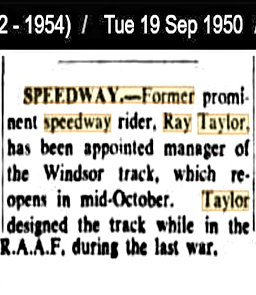 |
|
|
|
|
|
says:y
Hello John
Stumbled over your website. Just a
small file indexing newpaper items regarding Ray Taylor’s
speedway career 1930-1948 which are available on Trove
newspaper archive on the web. Most items (Clippings) are
outlined in the attached index file. This is only what I
have and is in no way definitive or complete. Hope this
might help.
Rob
s |
|
|
|
|
|
| |
| |
| Lee
Richardson |
| |
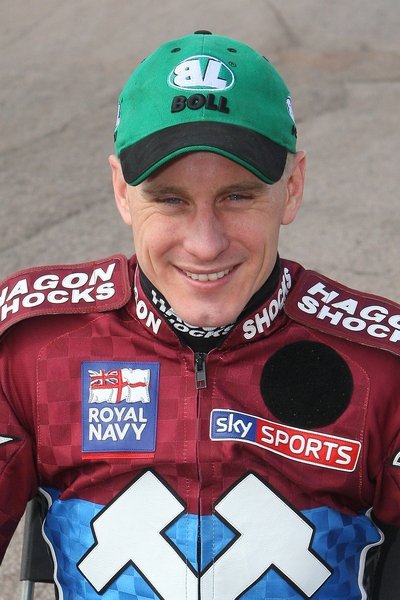 |
| |
| This picture and report
are courtesy of the Reading Chronicle: READING speedway fans
have been stunned by the death of former rider Lee Richardson. The 33-year-old crashed
while riding for PGE Marma Rzeszow against Betard Sparta Wroclaw in Poland
on Sunday 13th May 2012.The father-of-three was rushed to hospital
but died of his injuries. |
| |
| His death has sent shockwaves throughout the sport
and a minute's silence was held before last night's televised Elite League
meeting between Belle Vue Aces and Birmingham Brummies. Hastings-born Richardson was fondly remembered by
supports of the Reading Racers, having started his career at Smallmead as
a 15-year-old. |
| |
| Former Chronicle speedway correspondent
Nick Dyer said: "I felt really close to Lee having been with him
in his earliest rookie season with Tim Sugar (ex-Racers manager)
at Reading. I remember travelling to his debut meeting in Tim's
van."I also worked with Lee's mum on the TV commentaries that used
to run on local cable and I can't even think what his wife is
going through." |
| |
| Richardson made his debut for the Racers in 1995
and was part of the team that won league and cup honours the following
year. He was crowned World Under 21 Champion in 1999 and
rode for a variety of clubs after Reading including Peterborough, Swindon,
Eastbourne and Poole. He was the current captain of Lakeside Hammers when
he died. |
| |
| Hammers owner Stuart Douglas said: "Lee's death is
a truly shocking piece of news. Sometimes the dangers the riders face in
this sport are sidelined in the competitive spirit, but this proves just
how brave speedway riders are."Lee is a magnificent rider, and our club, and the
speedway family around the world, are left totally bereft by this
tragedy."The news is a second blow for Racers fans following
the death of ex-rider and co-promoter Malcolm Holloway from a heart attack
last week. |
| |
|
The following pictures and sentiments were sent to
me by Reg Fearman
|
| |
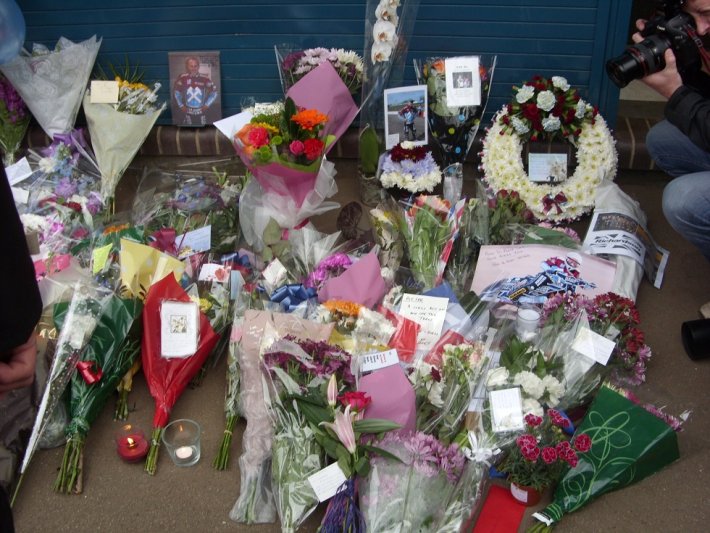 |
| |
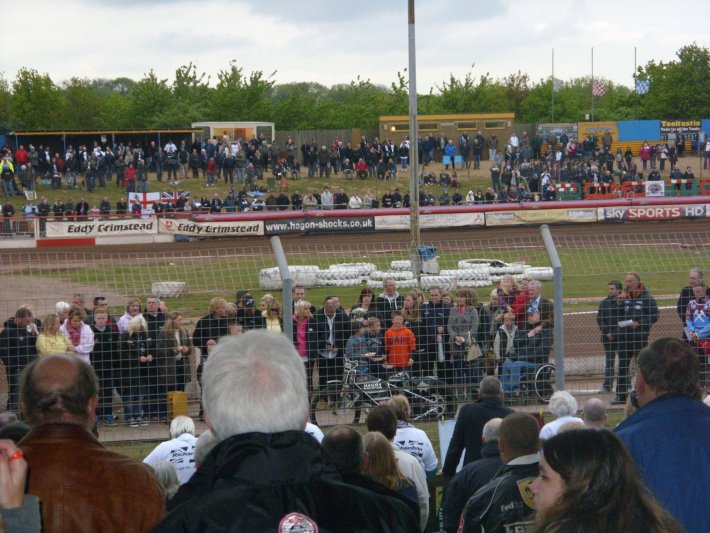 |
| |
|
Robert
Rogers says: A strange place was Arena Essex tonight, it was
nearly 19.45 pm and the normally noisy mad house that is the pits
was strangely quite, the bikes stood in rows in silent homage.
Riders, Staff and Officials stood in little groups quietly
chatting, whilst some found a quite corner for their thoughts.
|
| |
|
On the
terraces, some fans could not believe it, some would not believe
it. They threw their couple of bob and £10 notes in
to the collecting bins ably organised by Linda and George,
although there was some happiness, the latest Member of the
Barclays clan could not believe, so made the most of, all the fuss
they were receiving. Some fans laid flowers at the corner of the
Tavern, some gave in sympathy cards, all seemed to want to sign
the remembrance book, many bought a Rico Tee-shirt, all the more
money for the collection. |
| |
| Most
stood in groups, still shocked, but remembering the good times,
one fan said `He stood with my boy last week to have his photo
taken, he was a good guy like that, must get it framed now`. The
normal start time of the match saw, insisted of 14 noisy bikes, a
silent procession coming out of the pits, and along the concrete
road that is the Banger track, headed by Lakeside Manager pushing
a Speedway bike, followed by Riders, Family, Friends and
Officials, and marching in a group the St Johns Ambulance Brigade
in their brightly coloured jackets, they walk around to the
starting tapes, where a wreath in Lakeside colours was placed on
the bike. |
| |
| Oh no! It was true, Lee had ridden his last race. Brave
words from the manager trying to hold back the tears, also the
fans, although for some it was too much. But by fare the bravest
of all Emma, and her boys. A minutes silence, ended by the warning
Klaxon, then a minutes applauds, Speedway had paid its respect to
a Racing Legend, Lee Richardson, Lakeside Captain, killed while
racing in Poland last Sunday . RIP Lee the Hammers will NEVER
forget you, the show must go on, and Lakeside beat Swindon 50-40,
but a little bit of our hearts will never be the same again. |
| |
|
|
|
| |
| |
|
Norrie Isbister
|
| |
|
Claire Nielson (Nee Isbister) says:
My uncle, Norrie Isbister, was one
of Scotland's greats from the early years of the sport in the UK
|
| |
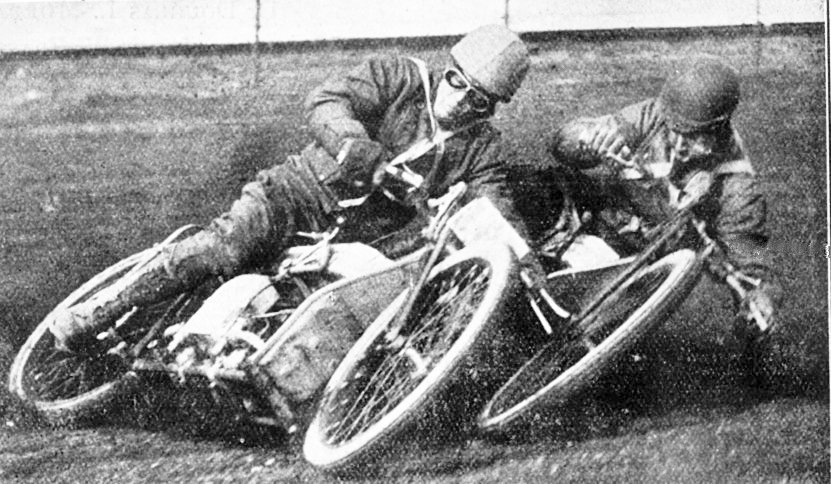 |
| |
| John Says: The above photo is one of my
favourites out of the many thousands of images on my websites |
|
Norrie Isbister and Drew McQueen. The crazy cornering angles were due to the
Douglas Dirt Track bikes they are racing. The bikes had a long
wheel base to accommodate the longitudal flat twin engine and a
very low centre of gravity because of the engines weight slung
along the bottom of the bikes frame, this resulted in spectacular "leg trailing" |
| |
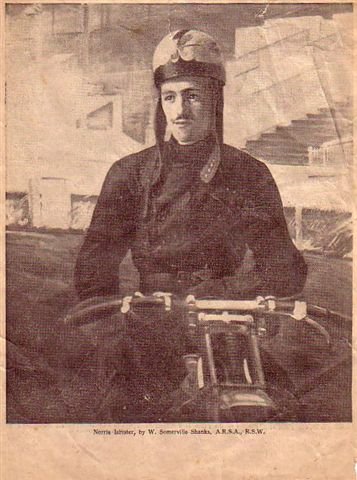
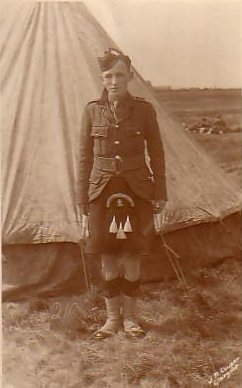 |
| |
|
Above left is a painting by Sir Somerville Shanks, of my uncle
Norrie, (says Claire) at the height of his popularity and above right is him in 1917 at
an army training camp |
| |
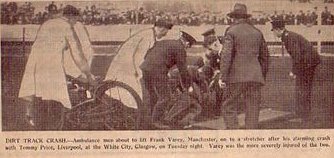 |
| |
|
Claire continues:
The man in the homburg hat 2nd from right is my father, Jack Isbister who
was the doctor at the Speedway then
|
| |
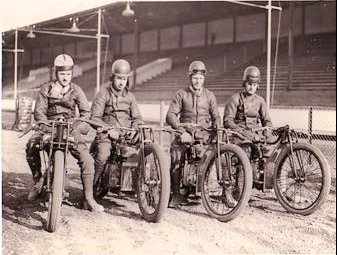 |
| |
|
Claire says: A line-up of
riders with my uncle Norrie at extreme left.
|
| |
| |
|
Norrie With Other Veterans |
| |
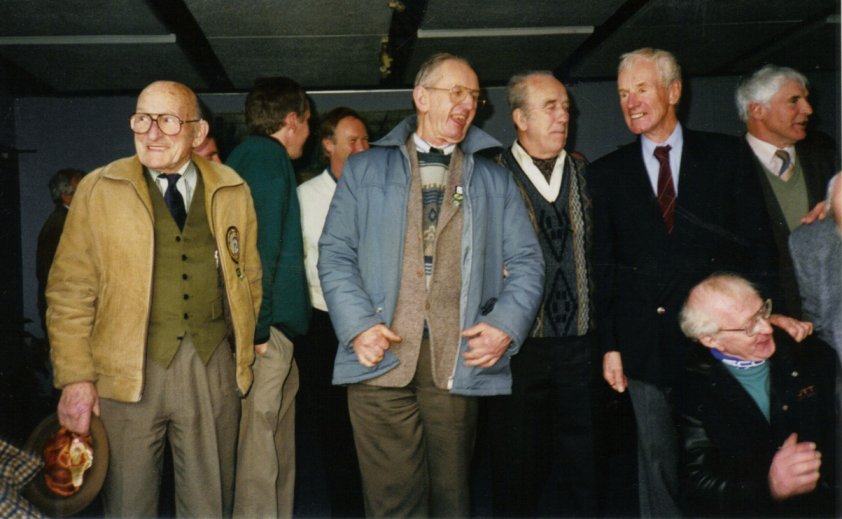 |
| |
|
Norrie Isbister, Fred Rogers, Merv Hannam, Ove Fundin, Willie Templeton
and Bert
Harkins. |
| |
|
Alan
Charles says:
Hello John,
|
| Sorry long time
no hear! I am always having a sniff around your wonderful website, and
the other night noticed a photo of Norrie Isbister laying a Douglas
almost flat. Terrific photo, but what caught my eye was the fact that
a comment had been made by a Claire Nielson. Now, my wife is a nurse
and over 20 years ago cared for a Doctor Jack Isbister at a home in
Stratford upon Avon. I commented on the name being that of a rider
turned promoter but obviously never mentioned it to him which is a
huge shame as I see Claire Nielson herself identifies her father in
one of the photos as the track doctor. I would have loved to have met
with the fellow but sadly never did. |
| |
| There was another
reason Claire Nielson is firmly and fondly stuck in my mind. That is
because the place my wife worked at, did an Easter bonnet parade one year
for the amusement of the residents and Miss Nielson came along to add a
touch of glamour and judge the entries. The lady excelled herself as she
awarded first prize in both age groups to my two daughters!!! |
| |
|
You may wonder why
I say glamour, well as well as being extremely attractive.
Claire Nielson is a hugely accomplished actress. If you ever
saw Fawlty Towers I need only mention Waldorf Salad. The striking blonde
lady who accompanied the American gent who was rightly outraged at Basil’s
standards?
She has also appeared in numerous dramas such as
Taggart where she turned Jim down on the offer of a date preferring as she
said “the company of her own sex”!!! I think she did a Rab C Nesbitt too.
My wife met her many times as she was a very regular visitor along with
her husband fellow actor Paul Greenwood, and she always said she was a
lovely woman. How much more the lovely for her to share her knowledge of
such an illustrious figure from Scottish speedway with you. I wonder how
she found your site? |
|
Kindest regards, Alan |
| |
| |
|
| |
| |
|
Digging At The
Starting Gate
|
| |
|
Many
riders go through what looks like little more than ritual digging and
stamping with their boots before coming under starters orders. I presume they are
looking to create extra grip!, but does it work? There is also the
kick aimed with the heel of the right foot towards the engine, what does that achieve?
If you are/were a rider could you please throw some light on these
matters.
John |
| |
|
My mate giffy says: Things are ok here, well sort of Ok, I had a bloody heart attack
a couple of months ago and the place I worked for closed down, so now I
am full time old person.
|
|
I only rode at
one track that had a concrete starting pad and that was Middlesbrough
and I think that was 1965 in a non league side. |
|
Regarding the
digging at the gate. I always looked for a bit of the gate that had
not been used before and had no ruts in it but if that was not
possible I looked for a straight rut to use. The idea of using a rut
that is already there is that the sides of the tyre will pick up a bit
of grip on the sides of the rut too. I have no idea why riders mess
about as much as they do. I think if they were honest they wouldn't
know either, they just do it because they have seen someone else do
it!!! |
|
I always thought
the best way was to drop the clutch before the other blokes!!!!. |
|
My best
wishes to you, mate, giffy |
| |
|
John says: Take it easy
giffy mate. I dunno
why your heart decided to "attack you" :-( I am a full time old and
infirm person too. Great isn't it?
Any
more riders eye views of starting techniques?
John |
|
Col Greenwell says: Hi
John, I was
looking through Miscellaneous
1 and you have an item from Dave Gifford...Digging At
The Gate. He says the only track he rode at with a
concrete start was at
Middlesbrough in 1965..!!!...Maybe
Dave means 1966 when we had open meetings.....There were only
3 meetings at
Middlesbrough in 1965. I just cannot remember what the
start was like....
|
|
John says: Ah well giffy may have got it wrong but it was 47 yrs ago.
Bloody hell!
I cannot remember what I had for tea yesterday! |
|
|
| |
|
| |
| |
|
Danny Dunton
|
| |
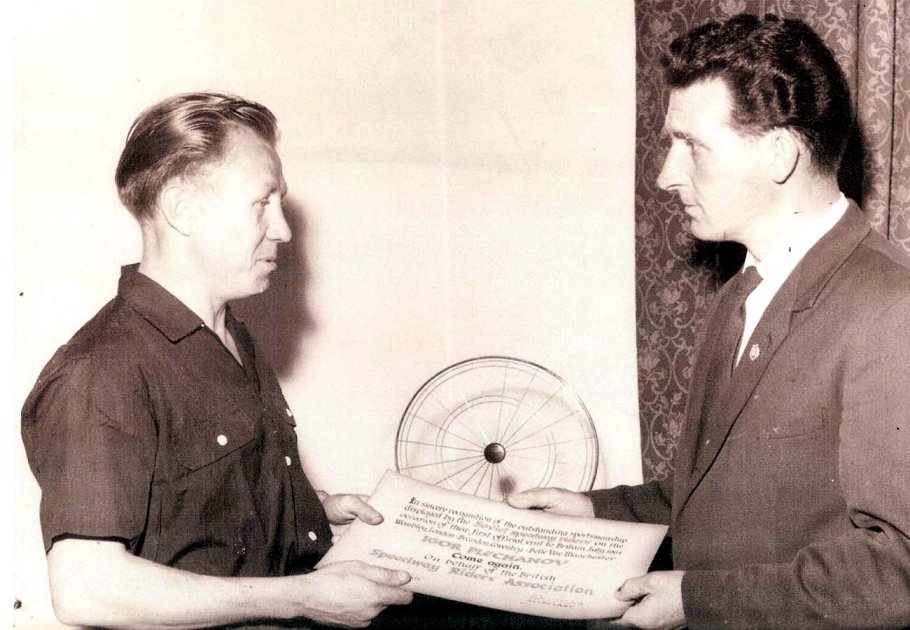 |
|
|
|
Danny Dunton
(right), Chairman of SRA presents a greeting to Igor Plechanov 1964
|
| |
|
| |
| |
|
Danny Is A Dutchman
|
|
|
|
|
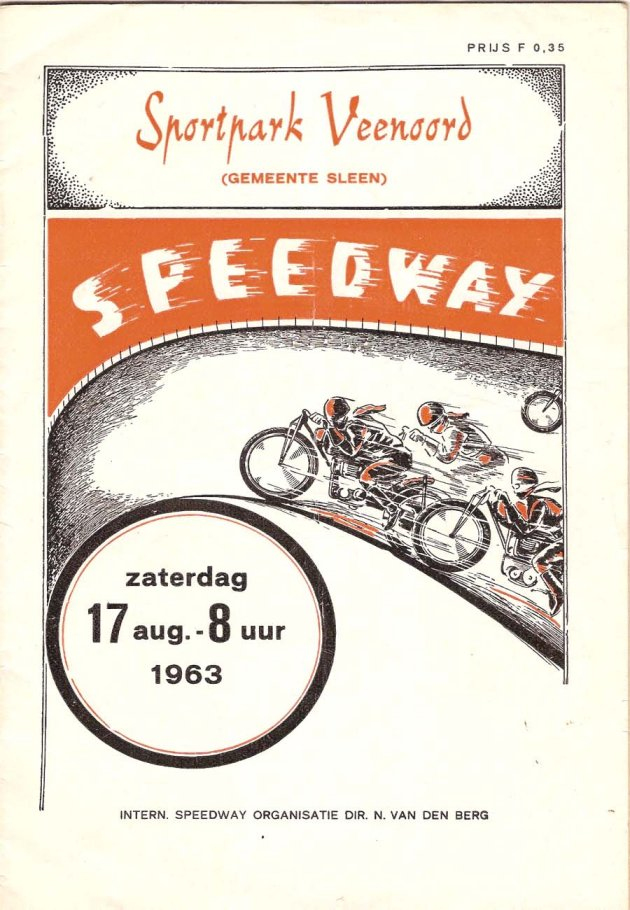 |
| |
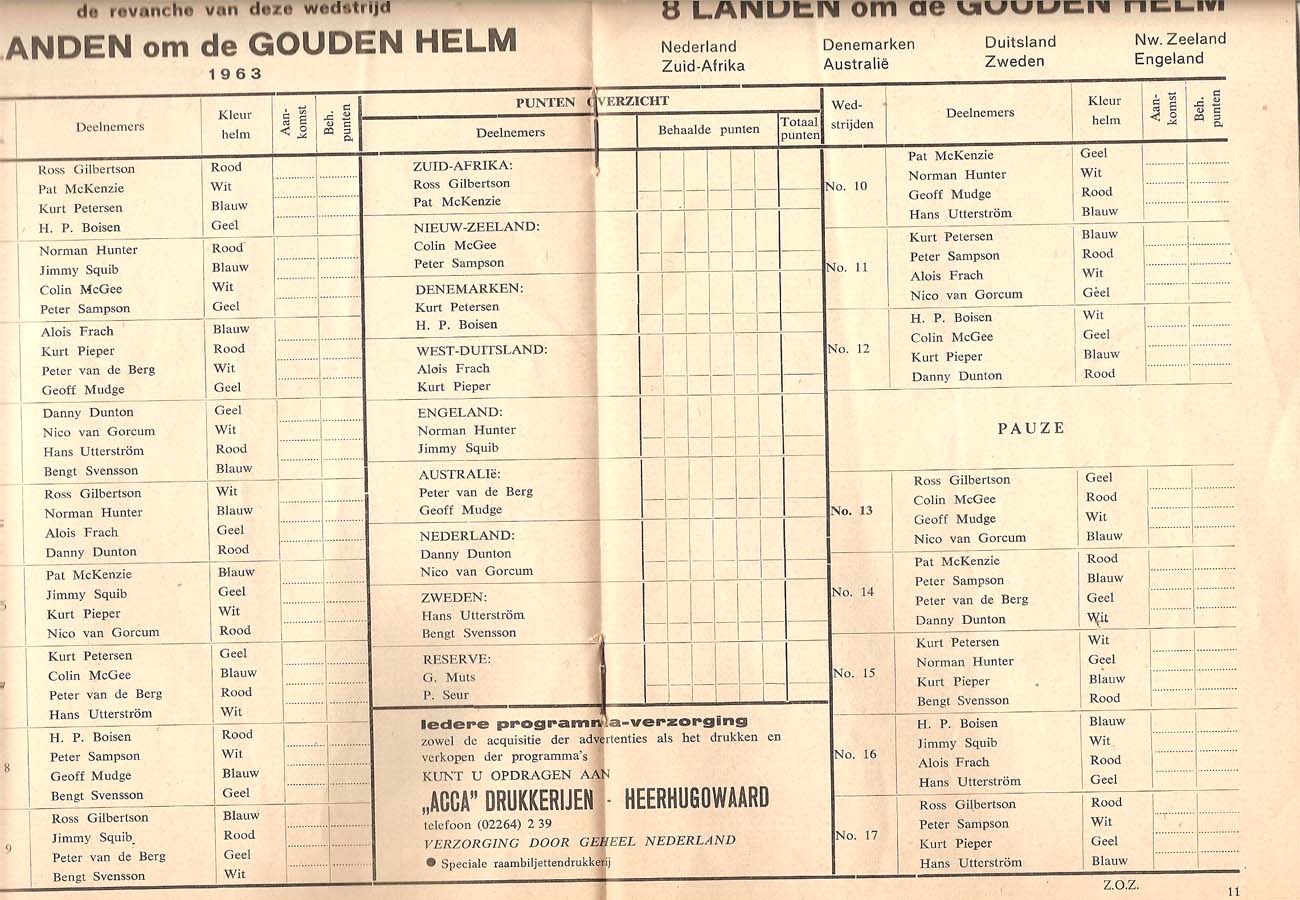 |
| |
|
Dutch Programme
from 1963
Danny was Captain of Holland, he won the Golden Hemet which he still has
at home.
|
|
Ok
I will ask Lee "How come your dad, Danny was riding for Holland"
|
| John says: Ah well Lee may not
have seen the above request from me |
| |
| |
|
| |
|
|
| Speedway In Brazil |
| |
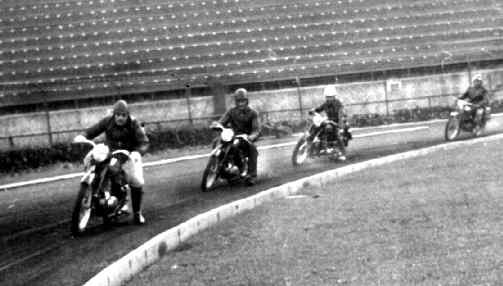 |
| |
|
Rafael Bem from Brazil says:
Yeah,
I did a little research and found this picture from the first speedway
race on Brazil happen in 1940 on Pacaembu Stadium at São Paulo |
| |
|
John Says: 4 bikes
going around an oval track. Yes I would call that Speedway. The bikes are heavy looking road machines but
that was common in 1928 in Australia and Europe. Pity speedway
is not a popular form of motor sport in Brazil, well let's face it
speedway isn't that popular anywhere! |
| |
|
|
|
|
|
| 1929 Motor Cycling Magazine
Speedway Advert |
| |
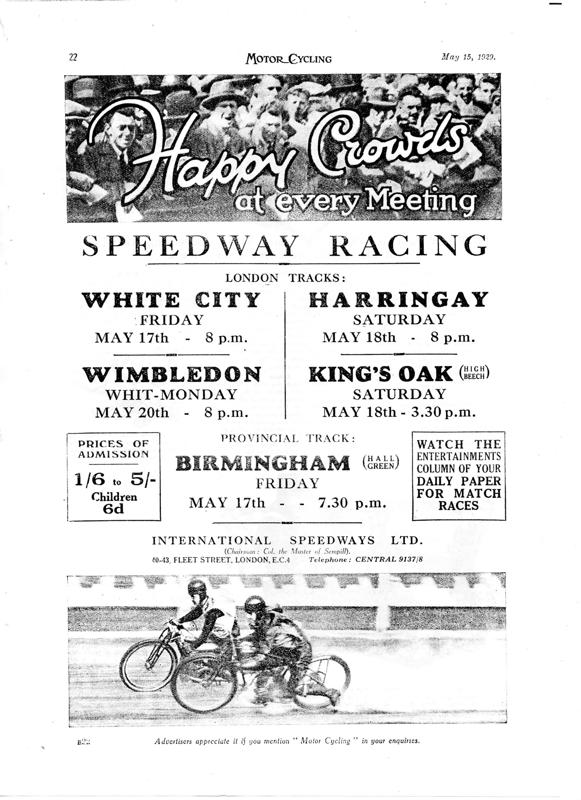 |
|
Courtesy of Jim Henry
|
| |
| |
|
| |
| |
| England Team |
|
|
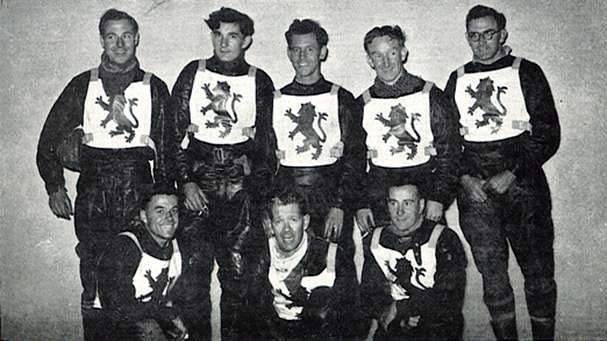 |
|
Courtesy of the Eric Williams Collection
|
| |
|
John says: The
eight smiling Englishmen are (standing from left to right) Derrick Tailby,
My Mate Reg Fearman, Eddie Rigg, Bob Fletcher, Fred Yates. Kneeling (from left to
right) are Eric Williams, Jack Parker and Tommy Miller. |
| |
|
| |
|
|
Motorcycle Football
&
Sidecar Polo |
| |
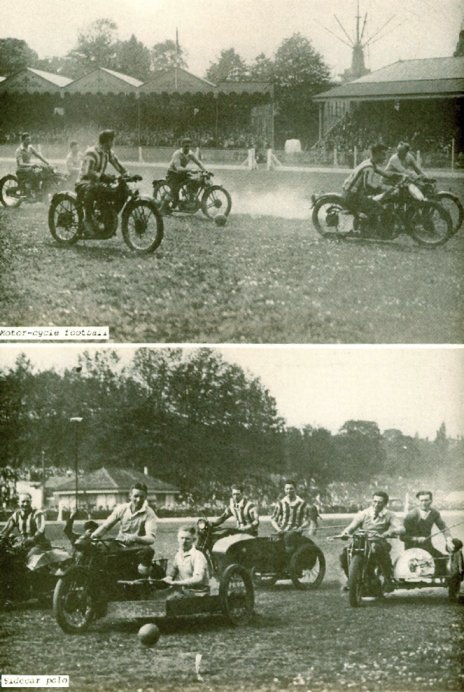 |
|
|
|
From Crystal Palace. Motorcycle Football
(Top) and Sidecar
Polo below. looks like a lot of fun
|
| |
|
| |
|
|
|
Two Early USA
Riders
|
| |
| Lloyd "Sprouts" Elder |
| |
 |
| |
|
1929 Sprouts Elder, at 6ft
3ins the American's left leg had to trail when he rode on the low slung
Douglas machine. He wasn't hampered at all by his height. I have read that he could earn
an appearance fee of £500.00. I have my doubts as that seems a
colossal sum for the first era 1929 to 1930! |
| |
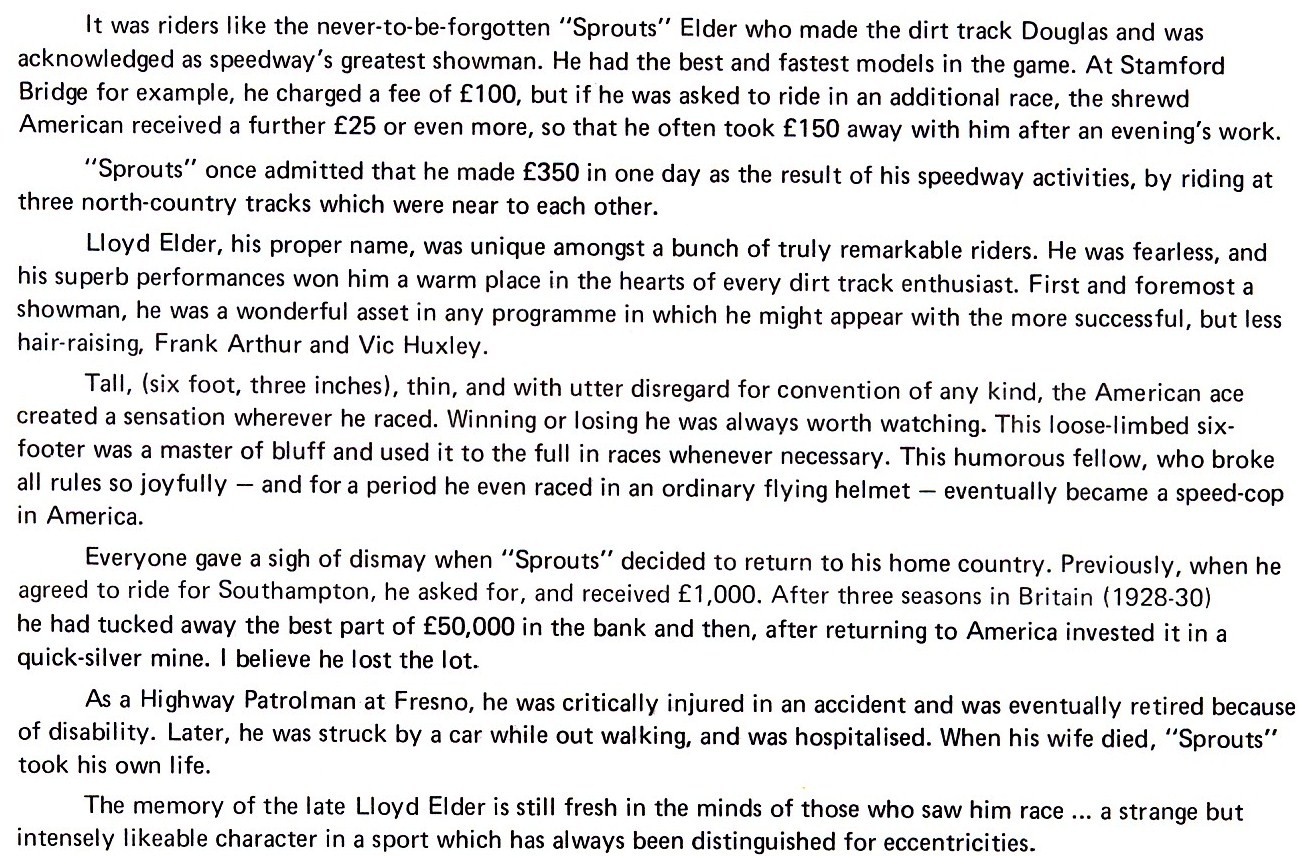 |
| |
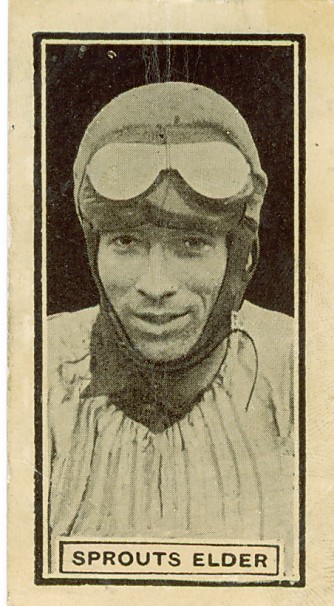
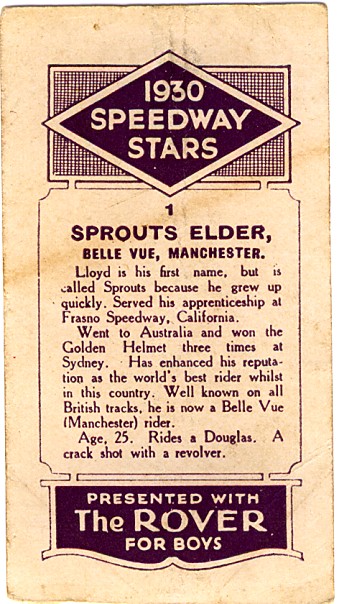 |
| |
|
|
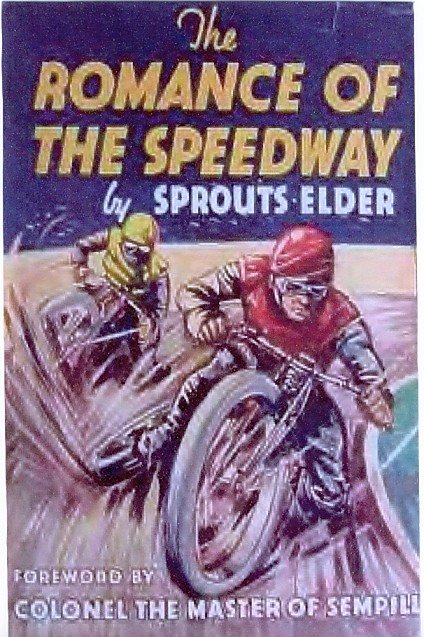 |
| |
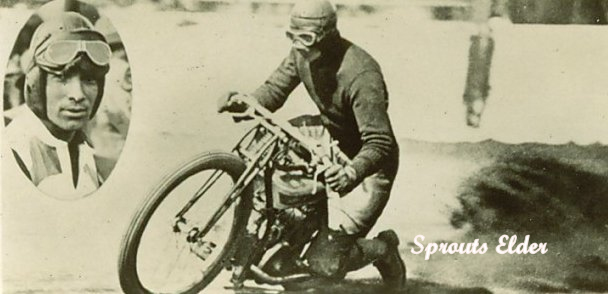 |
| |
|
Sprouts Elder on a Douglas |
| |
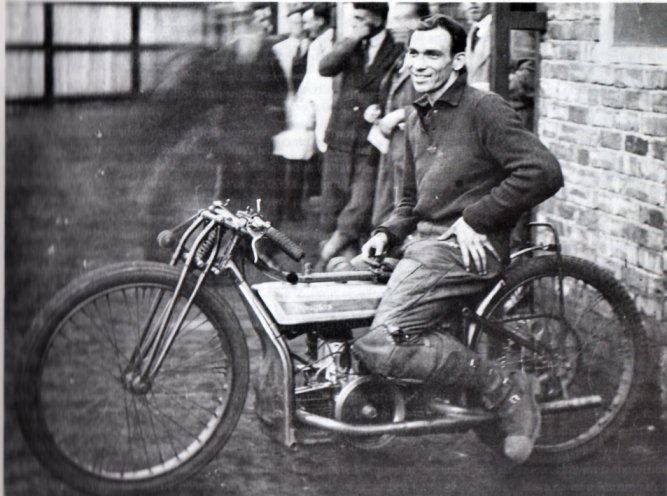 |
| |
|
Sprouts Elder, late 1920's mister speedway. He was
speedways greatest showman and had there been a world championship he
would likely have won it. |
| |
|
| |
| |
|
Early
USA
Riders
|
| |
|
Byrd McKinney
|
| |
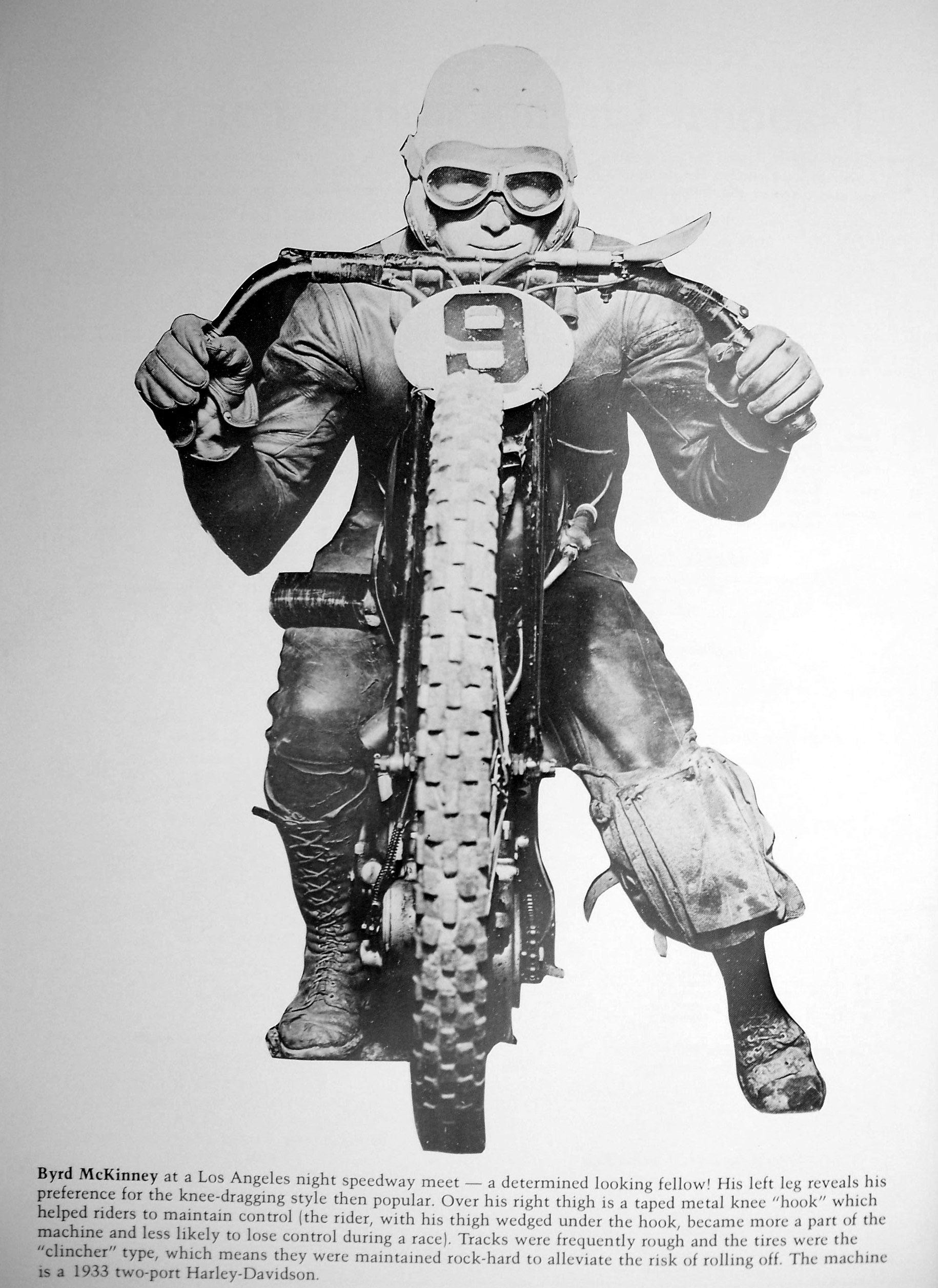 |
| |
|
John says: One of the best
photographs on my website and there are many great pictures. Here is Byrd
McKinney in 1933. A USA rider mounted on a Twin Port Harley Davidson.
Byrd was obviously a leg trailer as his left leg shows padding to help
him ride the bends. He was a Los Angeles rider. The
photographer must have been lying down to capture this shot. |
| |
| |
|
| |
| |
| |
| 1937 American Team |
| |
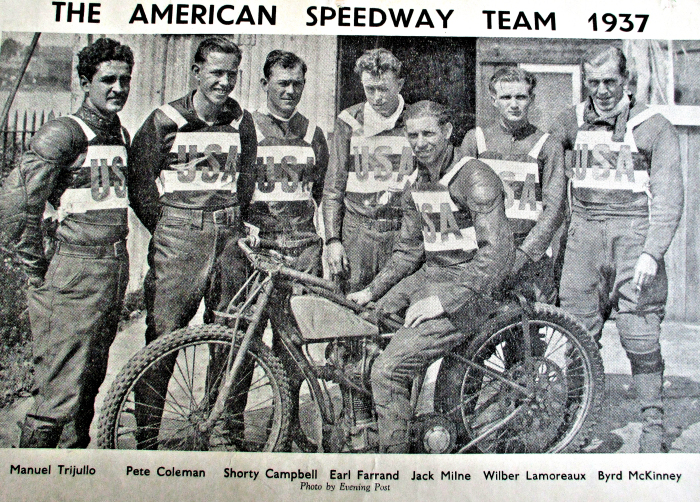 |
| |
| |
|
| |
| |
| Harley Davidson |
|
|
|
Purpose Made &
Rare
|
| |
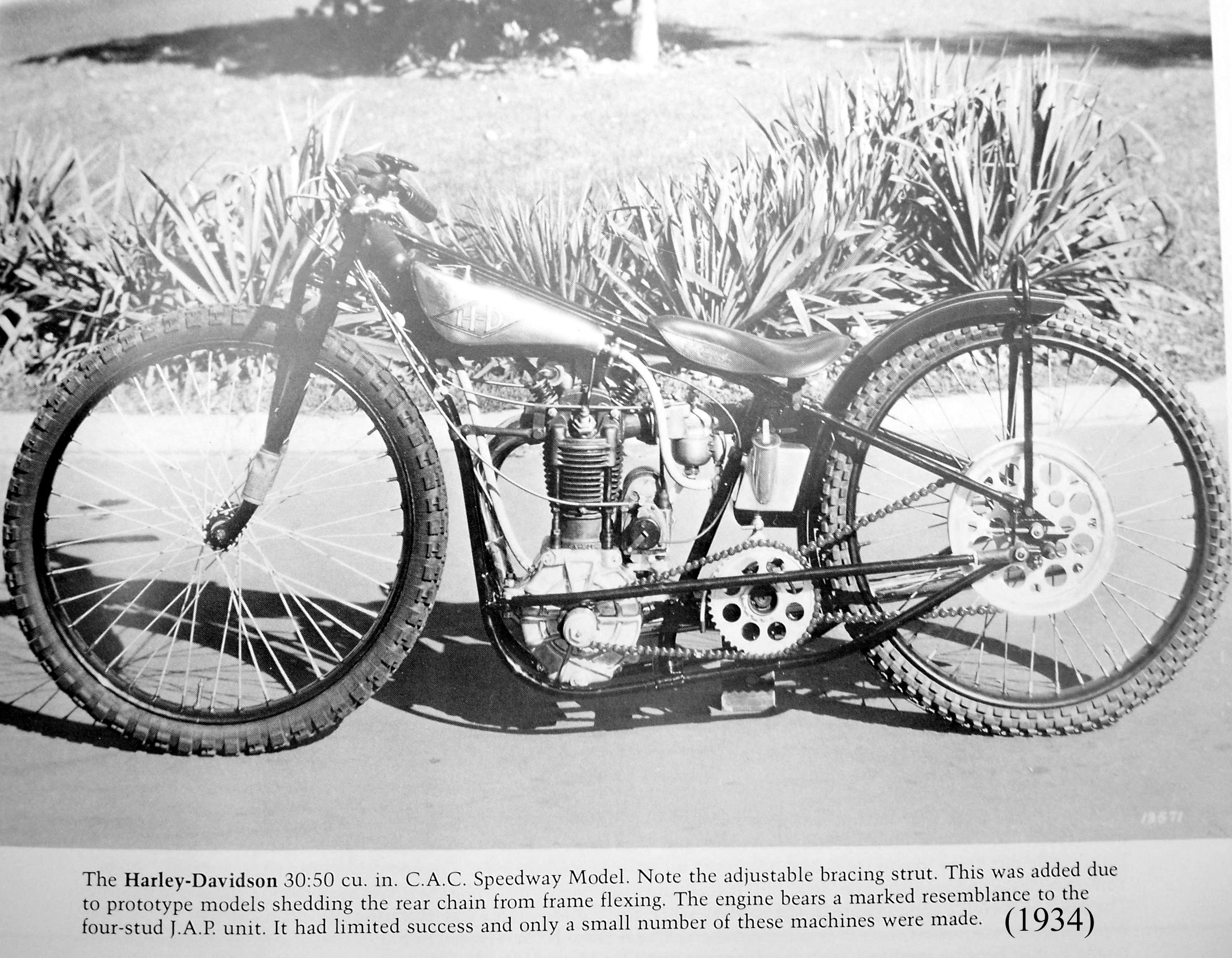 |
| |
|
A potent
looking Harley Davidson. The picture shows the exposed Primary and
rear chains, no front mudguard and a small rear mudguard. The bike
looks as lightened as possible with even the clutch and rear sprocket
drilled out to lighten the load. In 1934 this bike was state of the
art but it wasn't capable of competing with the British JAP machine.
Perhaps American speedway needed Harley Davidson to seriously compete with
the JAPS and at that stage they could have easily done so, but decided to
pull out of being a speedway bike manufacturer. The British Bike maker JAP
continued most successfully, from that point alone until the mid 1960's. |
| |
|
|
|
| |
| |
| Sig Schlam |
| |
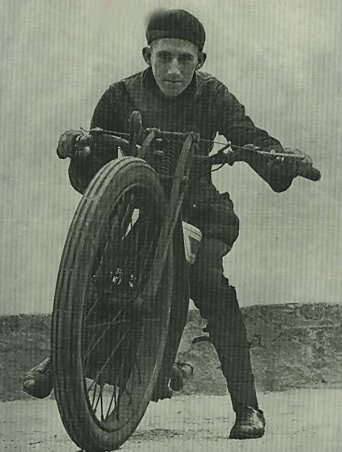 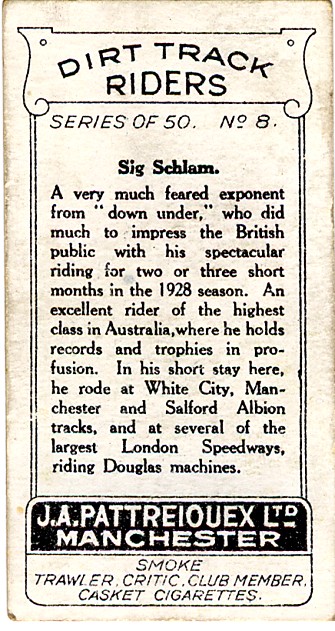 |
| |
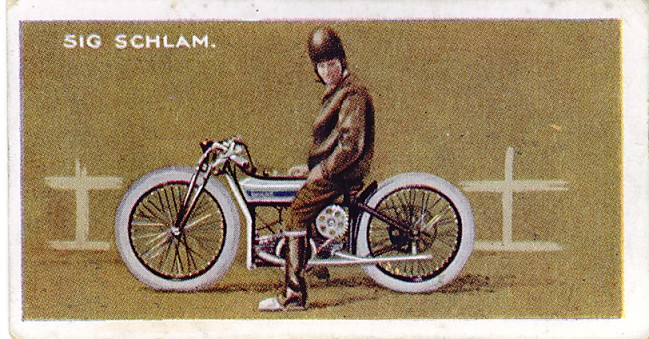 |
| |
| |
|
| |
| |
| Jack Sharp |
| |
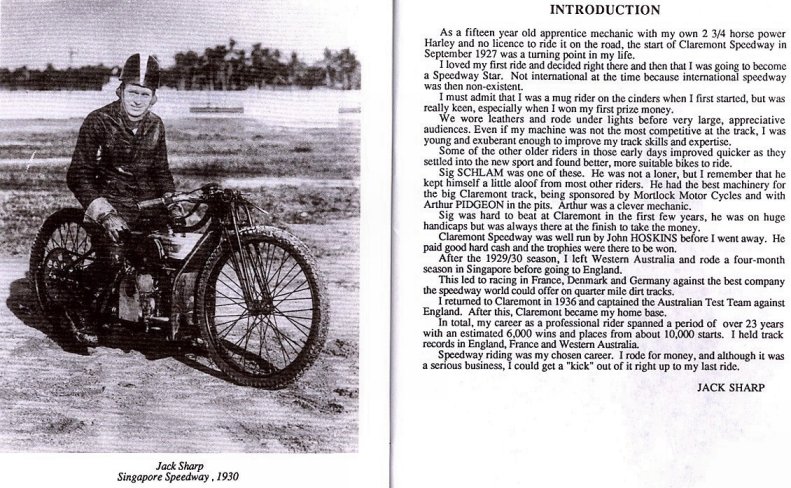 |
|
Courtesy of Colin Greenwell
|
|
|
| |
|
|
|
|
|
|
New Zealander
Spencer "Smokey" Stratton
|
| |
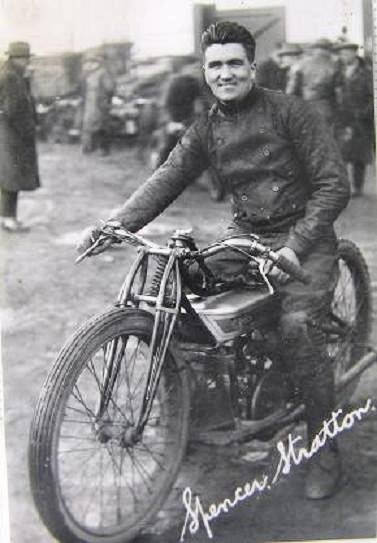 |
|
Courtesy of Susan Webb, a relative of Spencer
|
| |
|
My mate, Dave Gifford has been in touch and
has supplied the following
text about Smokey: |
| |
|
New Zealander Smokey Stratton was a pioneer in the truest sense of
the word, a free spirit forever looking for new challenges and new
horizons. He left his homeland to race on the grass, dirt and
concrete tracks in Australia at the age of nineteen in 1923, the
following year he travelled to the USA to try his luck on the
American tracks and returned to Australia later the same year. |
| |
|
At this stage of his career Smokey had a pair of Indians, one a
350cc and the other a 990cc. He survived an horrific crash at the
Hamilton Speedway in Newcastle NSW, promoted incidentally by our
old friend Johnny Hoskins. Spencer recovered and resumed his
riding career setting track records at a number of venues in
Australia with the odd visit home to race in NZ. In 1926 it was
back to the United States to ride as a member of the official
Indian Works team, with several meetings on the incredible board
tracks at Altoona, Rockingham and Fresno.
|
| |
|
After that he returned to Australia but when Johnny Hoskins
travelled to the UK in 1928 Smokey was a fellow passenger as the flood
of Aussie riders began to make their way to Britain. He switched to Dirt
Track Douglas bikes when he rode in the UK and in 1931 was a partner in
the company that built the Sheffield Speedway at Owlerton. |
| |
|
During his time in Britain he continued to look for new challenges
and made several trips to the Continent to race. He made a brief
visit to New Zealand in 1933 but it appears he never actually rode
on a New Zealand speedway at any time in his career. |
| |
| |
| 1938 Tragedy |
| |
|
In 1938
Smokey was appointed Manager at Newcastle
Brough Park Speedway. He was tragically killed in a car crash at Cockermouth when
returning from a Newcastle league match at Workington.
Susan Webb
|
Dave Gifford says:
This is only a very condensed summary of a fascinating character and a
great Kiwi. If anyone can help with information on the life and career
of Spencer Stratton I would love to hear from them, particularly
regarding his trips to Germany, Austria etc.
Giffy.
giffords@xtra.co.nz |
| |
| The following info about Smokey comes via
my Newcastle
History Website |
| |
|
An Indian With A BSA
In The Background
|
| |
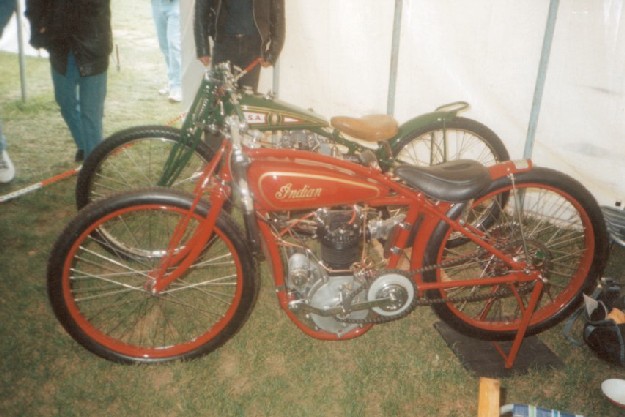 |
| |
| Dave Gifford has been in touch about the Indian
shown above he says: Now on page 4 of your Bikes site is a picture
of a 20's Indian and is it the bike once used by Kiwi Spencer "Smokey" Stratton?
I understand that Stratton became Promoter or team manager at Newcastle after he
quit riding and was killed in a road crash coming back from a meeting at Workington? Can you verify or give me any additional info? So! can anyone
shed any light email me John |
| |
Smokey, along with Stewie St George were
probably our very first riders, they rode for Johnnie Hoskins at West
Maitland where it all started and I have an idea they came to England
with Johnnie but we know very little about them. Cheers The Noo
Giffy
I will ask around Giffy and let you know if we come up with anything John |
| |
| An Unamed Writer says: There was an obituary
in The Speedway News of 11th June 1938. Basically confirms what
you have written but doesn't specify the town where he crashed. He
was team manager of Johnnie Hoskins Newcastle Diamonds Div 2 track.
Before coming to England in 1928 he had crashed at Newcastle NSW and
been unconscious for 23 days. The article mentions his love of
"Indian" Bikes. Unknown writer says: I have a newspaper report from Monday 6th June 1938 which says that Spencer
Charles Stratton, aged 33, was killed in a head-on collision between two cars
at Brigham, near Cockermouth (Cumberland) on Saturday night (4th June 1938). Unknown writer says: Three companions, Canadian riders were travelling with Stratton, were
seriously injured, as were the occupants of the other car (John Roan, of Cockermouth, and G.O Smith, of Whitehaven), Stratton's injured companions were
Ellwood Stillwell (28) Bruce Venier (21) and Robert Sparks (23), The five
injured men were taken to Cockermouth hospital with severe head and face
wounds. |
| John says: Yes Canadians Ellwood Stilwell, Bruce Venier
and Bob Sparks all rode for Spencer "Smokey"
Stratton at Newcastle in 1938. |
| |
| |
|
| |
| |
| Speedway Models |
|
|
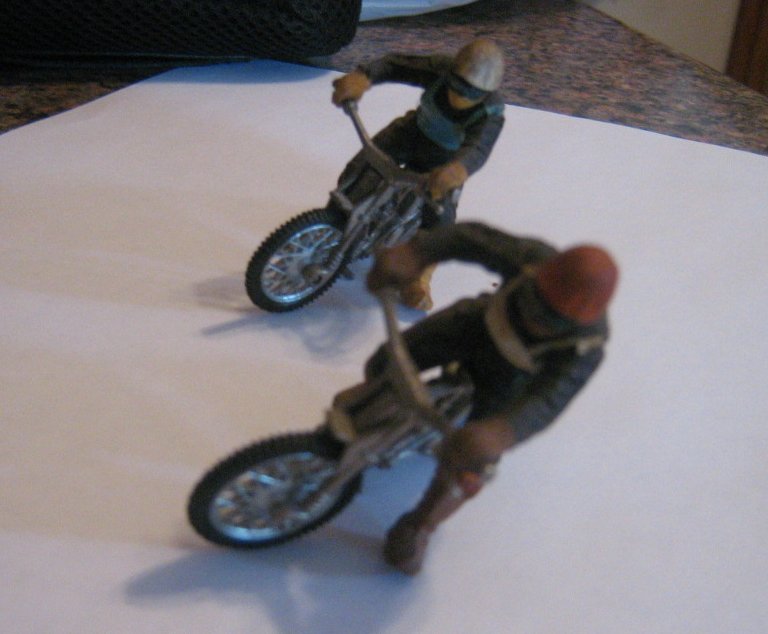 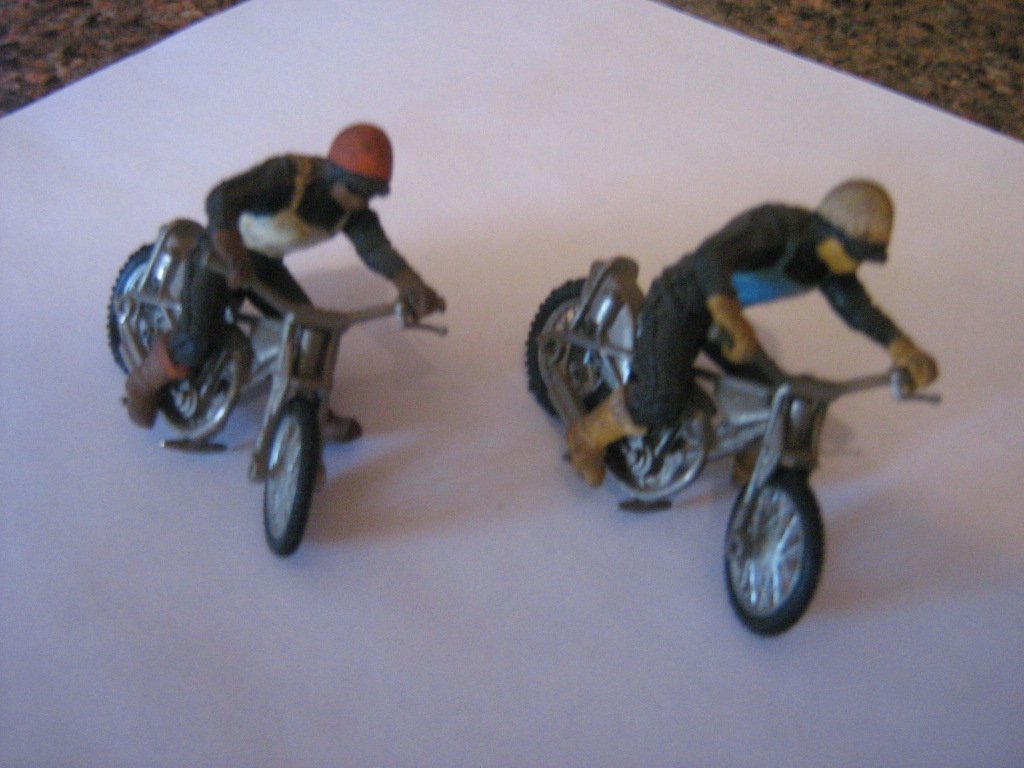
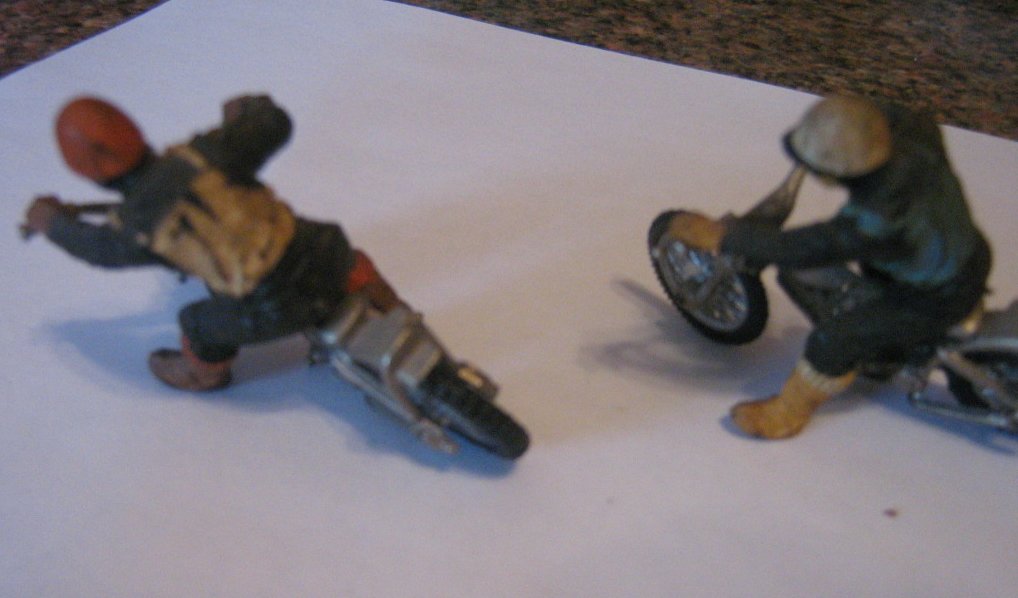 |
| |
|
These 3 pictures are from Bill. He bought these for around
20p each in Ireland during the 1960's. Bill says the engines on the models
are all JAP and the detail is quite good. Thought!! have you any
model speedway rider that is worthy of showing on the website.
John |
|
|
|
|
| Cary Cotteman's "Toys" |
| |
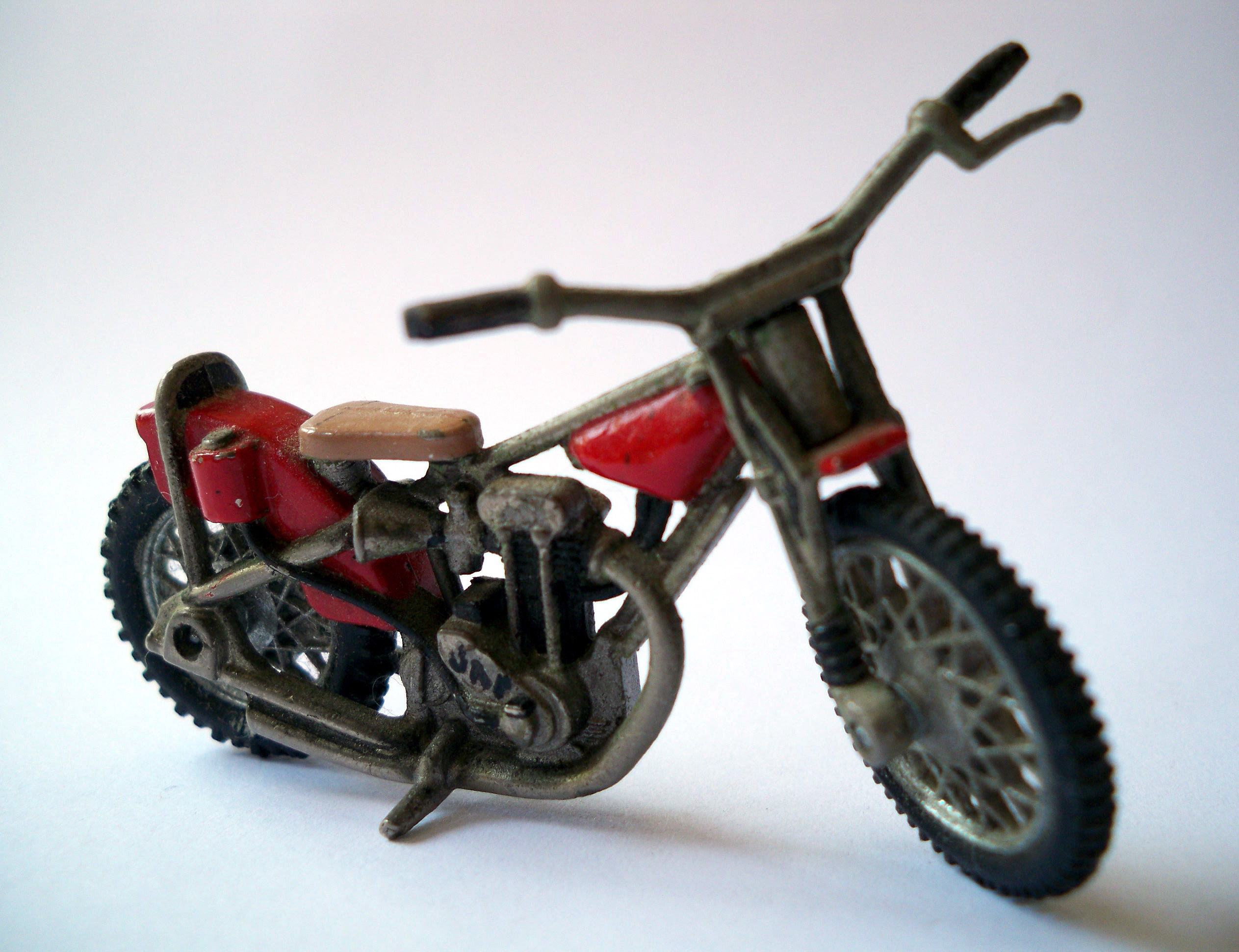
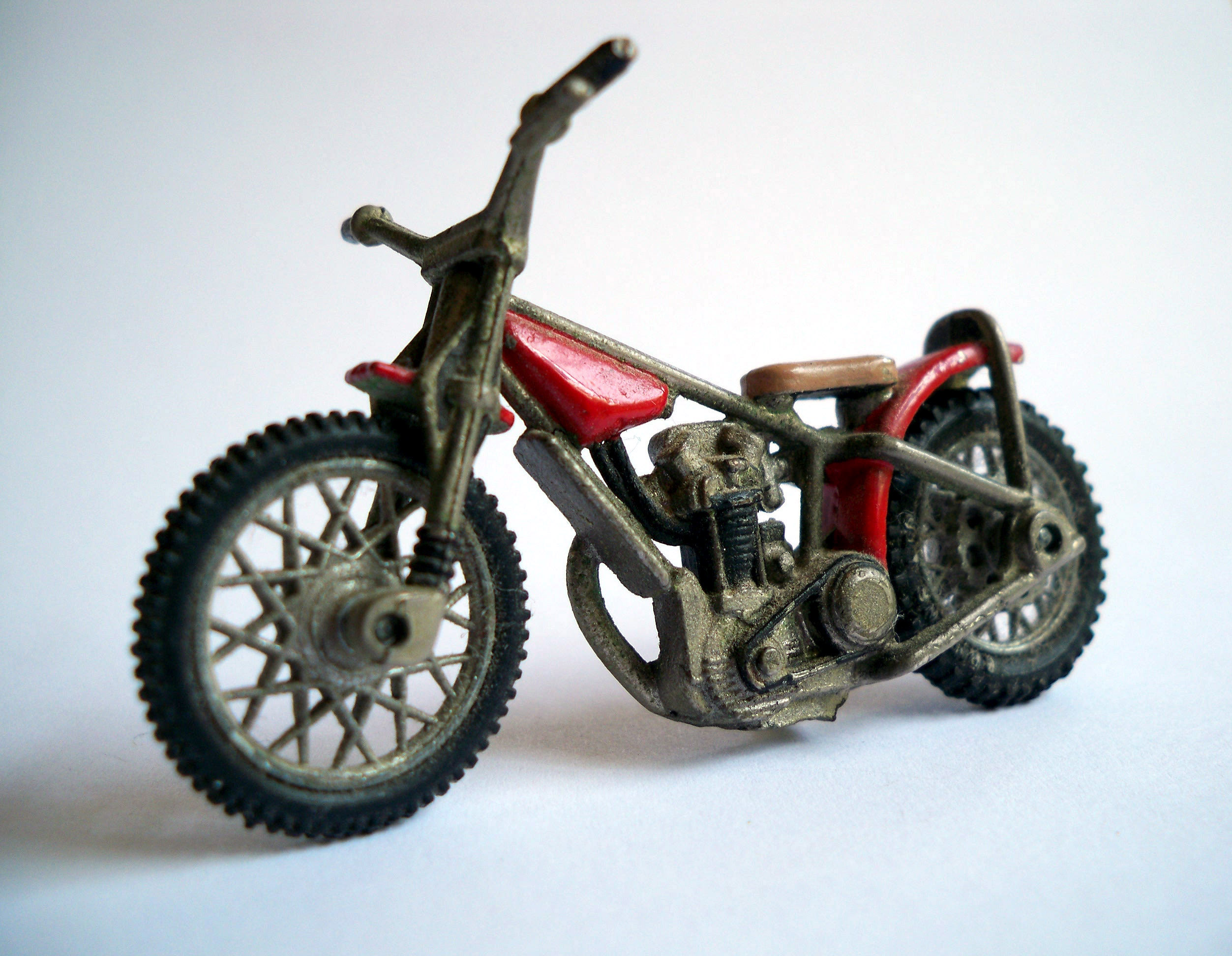 |
|
Pics of "Toy" bikes. From Cary Cotteman (USA)
|
| |
|
As I was looking
at your 'Miscellaneous' page I saw some photos of toy speedway riders
that were sent to you by 'Bill'. I happen to have had that same set,
which I bought in 1970. There were originally four bikes and four riders
with different helmet colours. The set came with a sheet of tiny
stickers that could be peeled off and stuck on the riders' race jackets.
You could choose from all of the British League Division One teams, or a
national body colour of England, Australia, New Zealand, Poland, etc. I
have attached two photos of the one remaining bike I still have (I don't
know what ever happened to the little riders--retired, I suppose). It
has an amazing amount of accuracy for something that is only 2.5 inches
(6 cm) long. You can make out the pushrod and valve covers, oil pump,
girder forks, the shallow horizontal fins on the JAP crank case, and
many other details. The tyres are rubber, and the rear one has 'BRITAINS
LTD." and 'ENGLAND" written on the sides. The bikes came plain silver
metal, but at some point in my youth I painted this one.
Cheers, Cary
|
| |
|
John says: Great stuff Cary,
the JAP bikes are really excellent reproductions of the real thing.
Keep them safe and some antique dealer may one day, pay you big dollars
for them, or maybe they will gather dust in your house until your
grandchildren chuck them out. Who knows? Wish I had them though. |
| |
|
And just when I
thought it safe to get back to the full size stuff, along came Bob Andrews
with "his" toy bikes:- |
| |
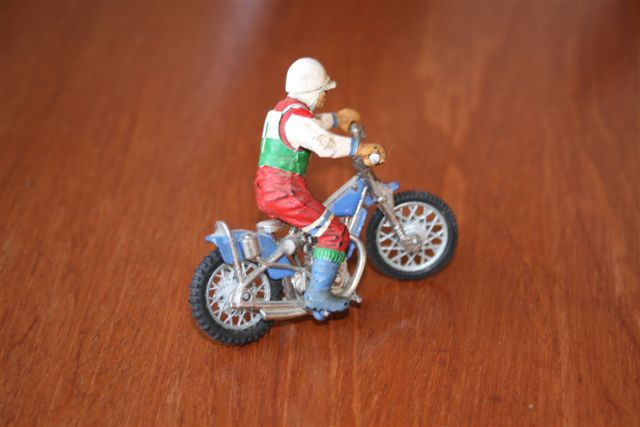 |
|
Courtesy of
Bob Andrews |
| |
Detail is pretty
good, the oil tank and air intake look right but the race track looks
very slick!! So it cannot be Brough Park!! |
| |
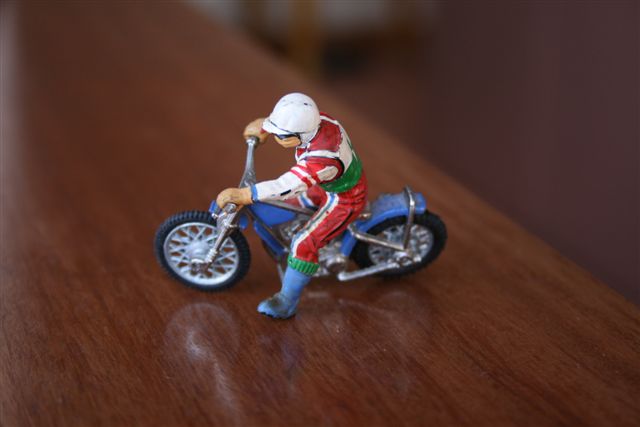 |
Courtesy of Bob
Andrews |
|
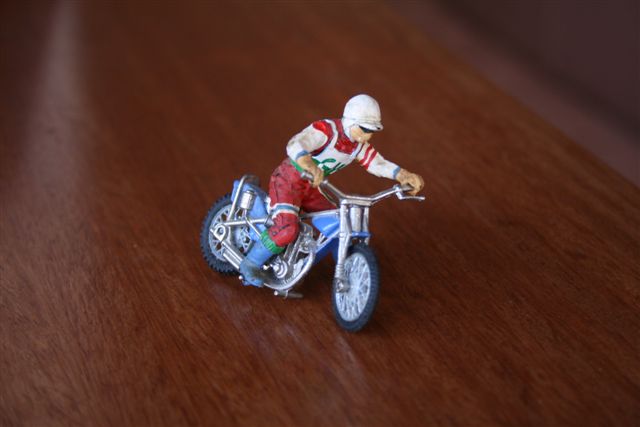 |
Courtesy of Bob
Andrews |
| |
This rider looks
like Berwick's Rob Grant! Was Granty a body double for the little chap! |
| |
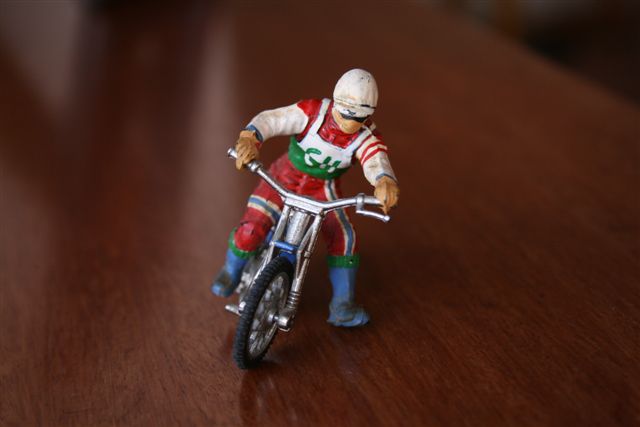 |
Courtesy of Bob
Andrews |
| |
|
This one is
obviously of Bob Andrews leading by a mile. Bob knows how to burn the
mahogany, although his right wrist looks a little limp on the throttle! |
| |
| |
|
| |
| |
Bob Andrews &
Ole Olsen |
| |
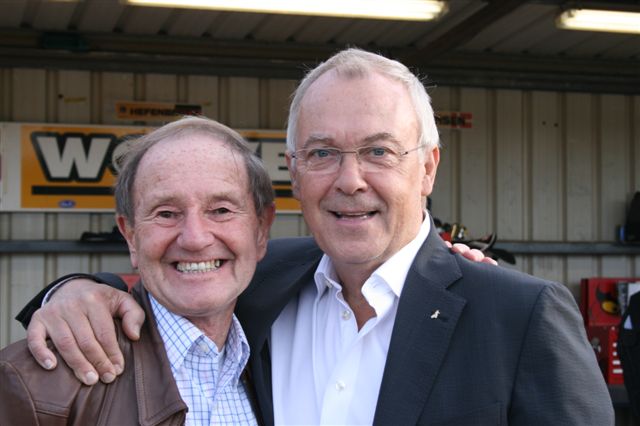 |
Courtesy of Bob
Andrews |
| |
Toy
riders aside, these
two did it for real, Bob couldn't match Ole for world championship success but
he was a gritty racer who was hard to predict. Ole was my hero at
Newcastle after Ivan Mauger left. Ivan? What a hard act to follow eh Mr
Olsen? |
| |
|
| |
| |
| |
|
The Star Championship 1933 |
| |
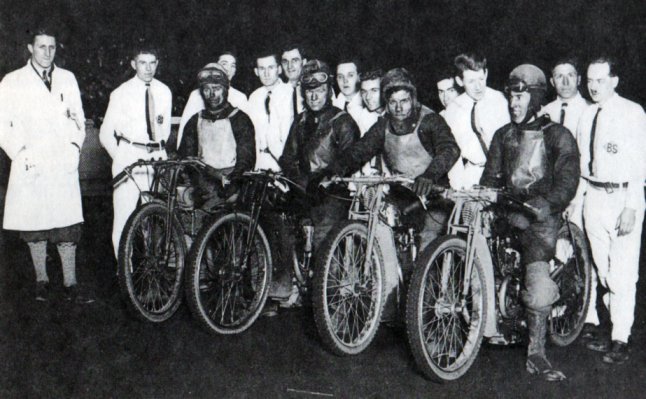 |
| |
|
1933 Star Championship riders lining up for a heat. L-R
Norman Parker, Tom Farndon, Al Wilkinson and Stan Greatorex. This is
considered by speedway historians as the unofficial start of
speedways world championship. |
| |
| |
|
| |
| |
|
Frank Arthur |
| |
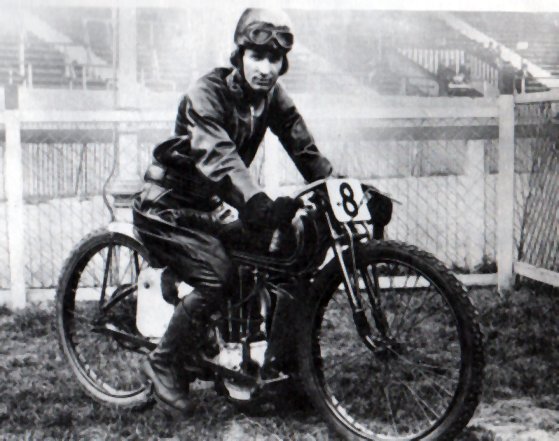 |
| |
|
Frank Arthur 1929: Before the world championships
proper started in 1936,
we had the Star Championships and Australian Frank Arthur was up there at the
top of the Overseas Riders.
Frank was the Star 1929 overseas champion. Do you know what track he belonged to in 1929
John
This picture shows the bigger wheels in use at the time. I
don't know why the wheel diameters were reduced in the 1950s do
you?
John |
| |
| |
|
Roger Frogley |
| |
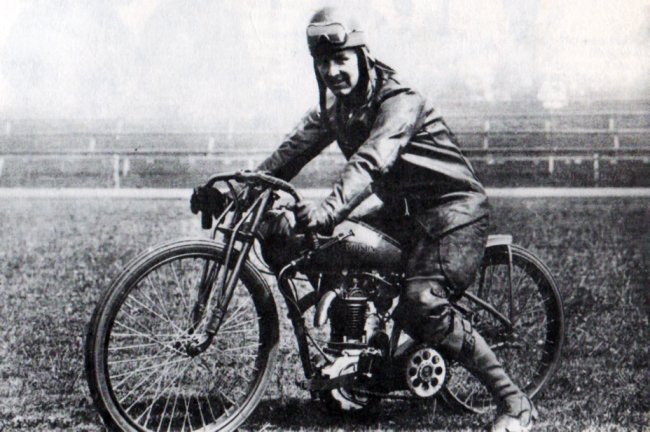 |
| |
|
Frank Arthur was the Star 1929 overseas champion and the rider
shown above
Roger Frogley, won the British rider of the Star Championship.
Roger is shown aboard a Harley Peashooter. Do you know what track he
was attached to in 1929.
John |
| |
| Jerry Willmott says: I believe Roger
Frogley was attached to High Beech in 1929. He moved to Crystal
Palace in 1930. |
| |
|
| |
| |
|
John "Slider" Shuttleworth |
| |
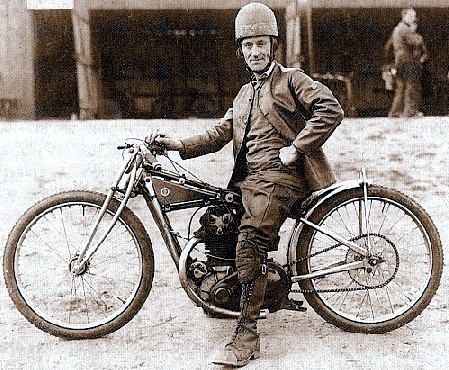 |
| |
|
John "Slider" Shuttleworth mounted on a Rudge
|
| |
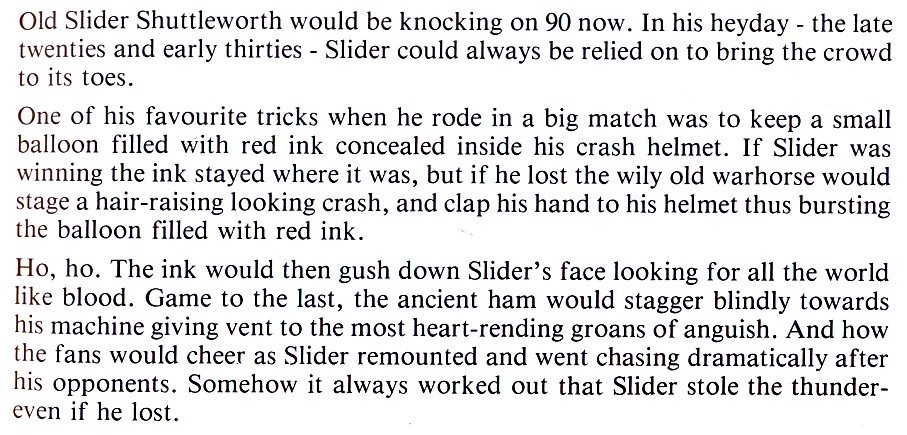 |
| |
|
Text scan is
from a John Chaplin book......from 1990....John Chaplin's Speedway
Special. Is the story true? I hope so!
|
| |
|
Mike Willig says:
John Starkey Shuttleworth was my Grandad, so it's good to see that there's
stuff on the web about him he'd be chuffed, always loved being the centre of attention. He used to stand in Stockport's Merseyway precinct
and play his accordion, happily collecting any contributions in his cowboy
hat (which he often wore) As far as I'm aware, the story about him and the
red ink is true. |
|
| |
|
| |
| |
|
Alan Hodkinson's Collection |
| |
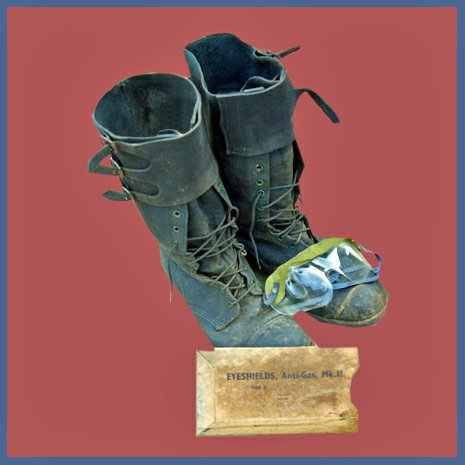 |
|
Courtesy of Alan Hodkinson
|
| |
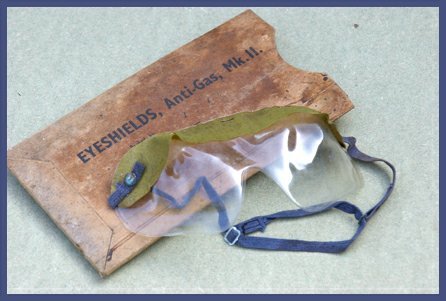 |
|
Courtesy of Alan Hodkinson
|
| |
|
Alan Hodkinson says: Ex Army
Dispatch Riders boots, Just after the war Riders could pick these up in
Army Surplus stores for about 7 Shillings and 6 pence (35p), And the Gas
Goggles were popular too, these would be about 9d for a pack of 10 (about
4p) these items were top quality, good value, those are my boots and are
still going strong |
|
|
| |
|
|
|
|
|
The 2 Stroke Scott
500cc Watercooled
|
| |
| |
| Tommy Hatch |
| |
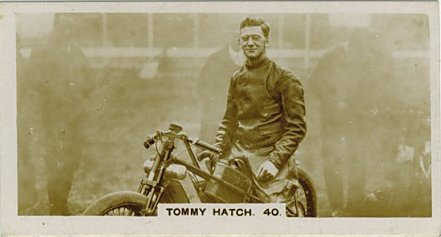 |
| |
|
Not much of the bike is visible but Tommy
is mounted on a 2 stroke 500cc Scott
|
| |
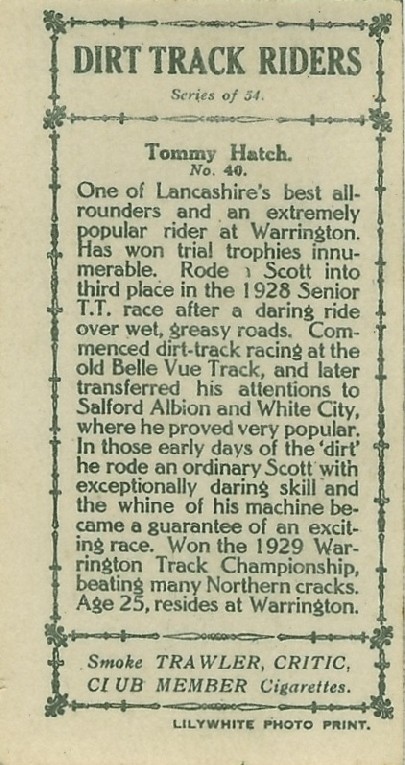 |
| |
| |
Scott Rider
Frank Varey |
| |
| The technologically advanced Scott had
it's champion of it's cause in Frank Varey, the Red Devil.
Sadly the Scott, made in Britain, was not to become a speedway
success along with all of the other British bikes but British
Engine makers JAP took up the baton in the early 1930s Such
a pity that Scott, Norton, Triumph, Velocette, Royal Enfield and BSA etc.,
didn't follow JAP, as speedway would have been so much better with
a variety of manufacturers involved. |
| |
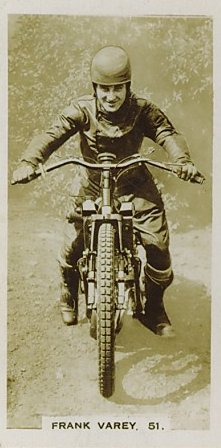
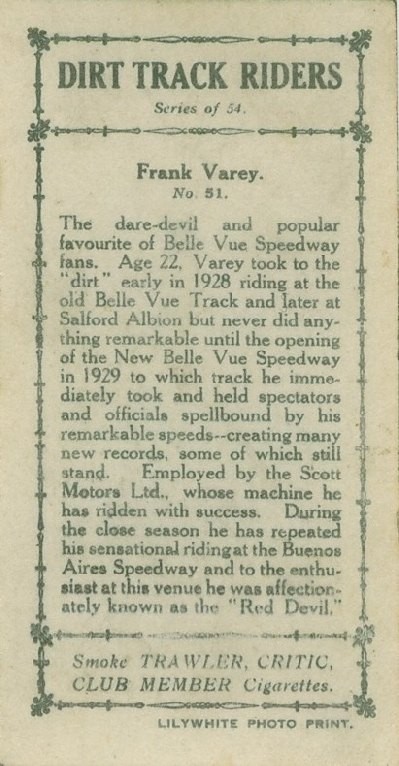 |
| |
|
Frank Varey was the most well known Scott rider and the red parts
of the bike gained Frank the name The Red Devil. His
showmanship came out and he started wearing red too! Frank
moved on to other bikes to be competitive |
| |
| |
The Red Devil
Frank Varey |
| |
| Frank rode in South America where he gained
the nickname
El Diablo Rojo
(The Red Devil)
in Argentina |
| |
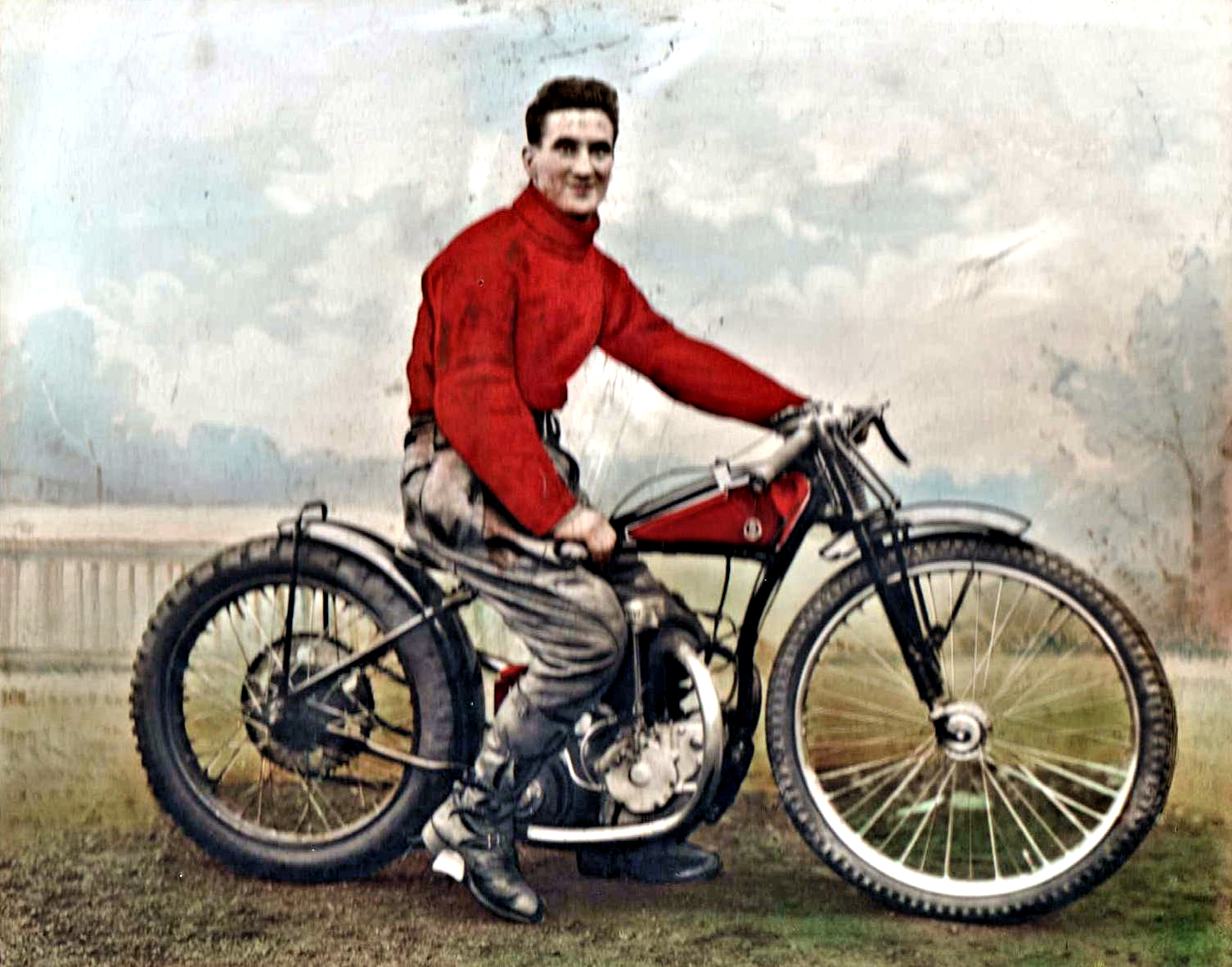 |
|
Courtesy of John
Whitaker
|
| |
|
Here is the
Red
Devil, (Frank Varey El Diablo Rojo.) on board a Rudge, Frank
was no longer a Scott rider as he strove to be competitive.
The Rudge was a potent machine and compared to the Scott and
Douglas it was a leap forward until JAP's speedway engine was
developed around 1931 |
|
|
| |
|
| |
| |
|
Cyclone Billy Lamont On A Harley |
| |
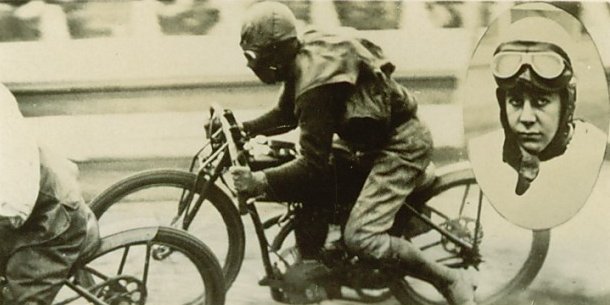 |
|
|
| Early American Speedway Bike makers
Harley Davidson and Indian were recognisable by their dropped
handlebars, modelled here by Billy Lamont. You will notice
that Billy is racing his Harley Peashooter without gloves or a
proper crash hat. he appears to be wearing a leather head cover
not much good if he comes to grief! But that is the way it
was around the beginning in 1929. |
|
|
"Cyclone"
Billy Lamont
On An
AJS |
| |
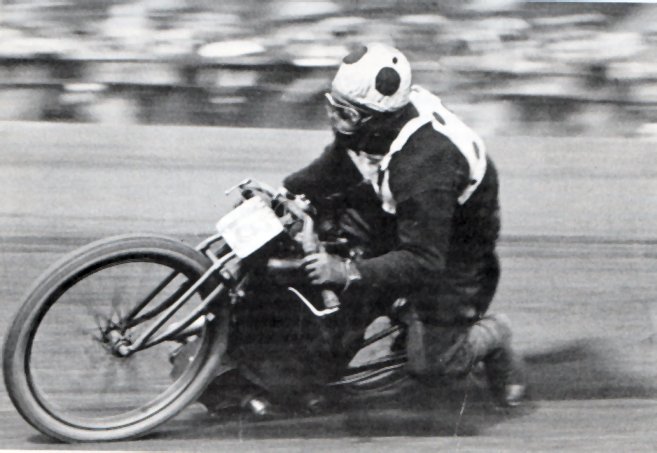 |
| |
|
The "Cyclone" aboard the British made AJS big port
|
| |
| |
|
| |
| |
|
Colin Watson
1932
(I Think?) |
| |
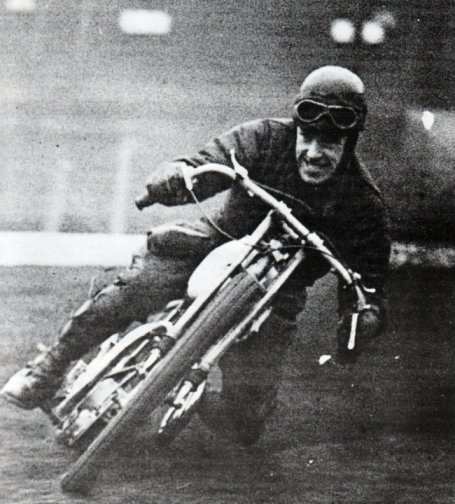 |
| |
|
This is Colin Watson in, I think, 1932. The photo is
great by anyone's standards. I assume the photographer wasn't about
to be run down by Colin! I can picture the camera man squatted down
on the track, clicked his camera and then dived off to his right
onto the centre green! |
| |
| |
|
| |
| |
|
Charlie Pashley
On A Sunbeam At Southport Sands |
| |
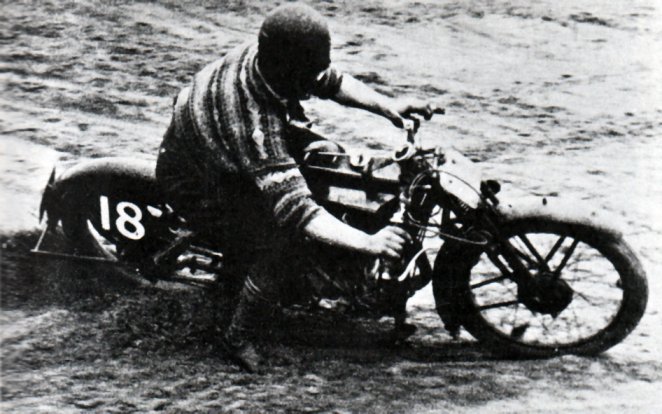 |
| |
|
Not sure what is going on here! Charlie Pashley on a Sunbeam,
apparently going the wrong way!. He won the first ever
UK dirtrack meeting at Droylesden in 1927. His Sunbeam was a stripped down
roadster and as can be seen here it had a front brake. Charlie would
have disabled the brakes for the racing as that was a golden rule in the
early days. |
| David Spencer says: One thing I
did notice was the photo of Charlie Pashley apparently broad
sliding the “wrong way”. I asked his son about that and it turns
out he raced on the sand at Ainsdale and they competed clockwise
and that is where the photo is from. |
| |
| Rod Pashley
says:
Hi, I am delighted to see you have a photo of my Dad (Charlie Pashley),
and thought you might like the attached scan to go with it. He also rode
at Belle Vue (Hyde Rd) first meeting, it seems that literally hundreds of
riders turned up, to have a go, but none seem to have been recorded You
may also like to know that the photo you have was taken on Southport sands |
| |
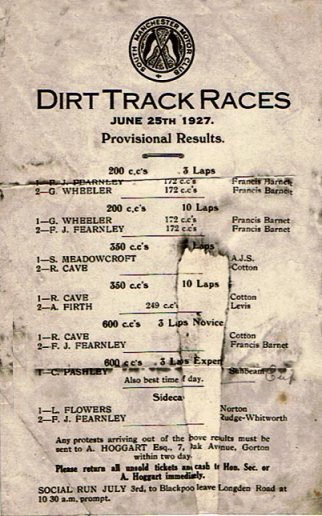 |
|
Courtesy of Rod Pashley
|
| |
This racecard shows C Pashley 600cc So we can assume that
the Sunbeam he is pictured riding above is a 600cc bike.
Rod Pashley says: Charlie went on to captain
Belle Vue's Midget car team in the thirties |
| |
|
|
|
| |
| |
|
Harley Davidson |
| |
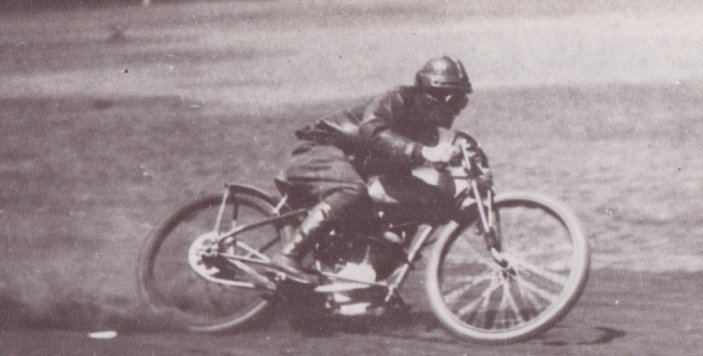 |
| |
|
The Harley Peashooter in action in 1926 at Claremont
Australia, ridden by Charlie Datsun. Australia had been staging dirt
track racing for approximately 3 years and the sport would not be arriving
in the UK until 1928
|
| |
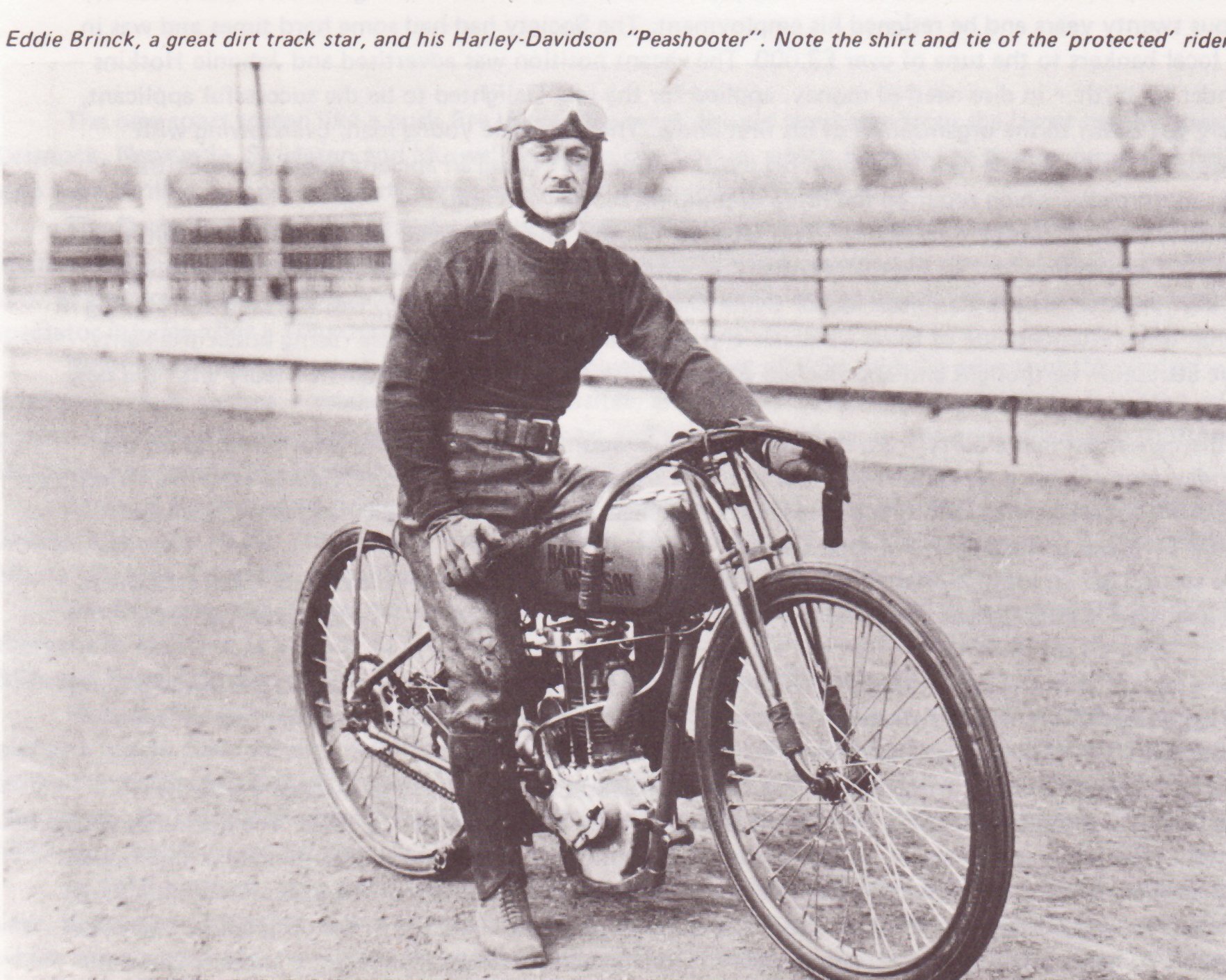 |
| |
|
The Harley Peashooter had distinctive drop handlebars. The machine
was the most successful of the 1920's bikes until the Douglas Dirt Track
machine came along
in approx. 1928
|
| |
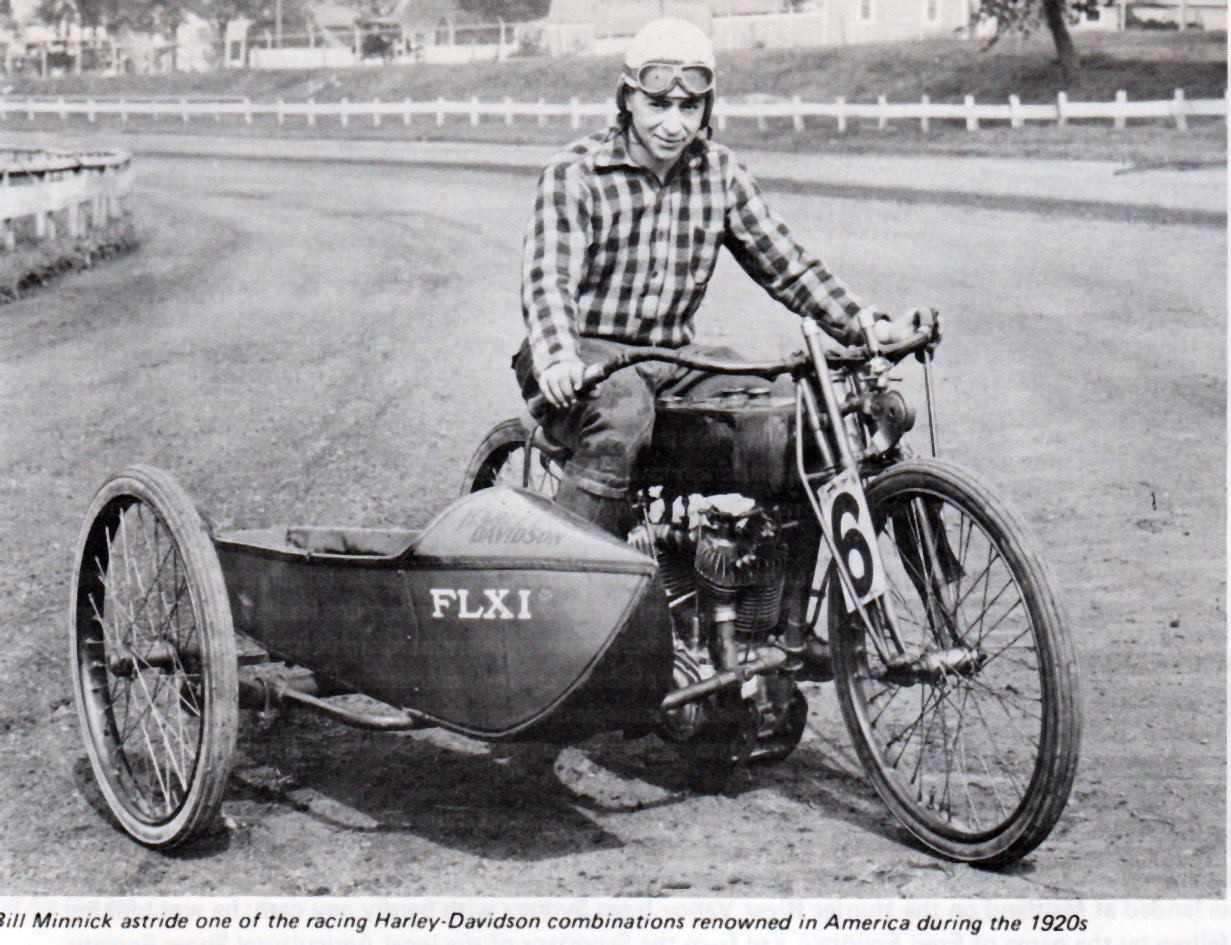 |
| |
| Harley Davidson and most British Bike
makers had a brief interest in speedway in the early days,
and soon turned their back on the sport. The bike companies
could have developed machines that could have appeared on world
wide speedway tracks but they didn't. So well done JAP of
Tottenham England for building speedway engines/bikes and for
producing the engines for the Rotrax JAP. The best ever
speedway bike in my opinion. |
| |
| |
|
| |
| |
|
Paddy Dean |
| |
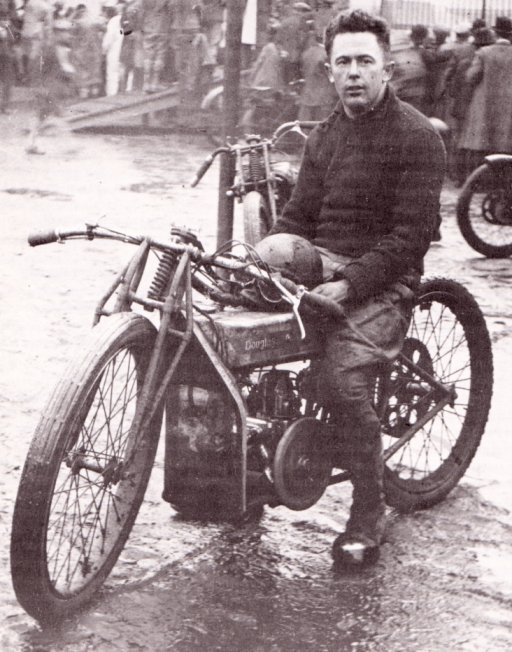 |
| |
|
Paddy Dean 1929 Claremont Speedway Australia
|
| |
|
| |
| |
|
The Hoskins Family |
| |
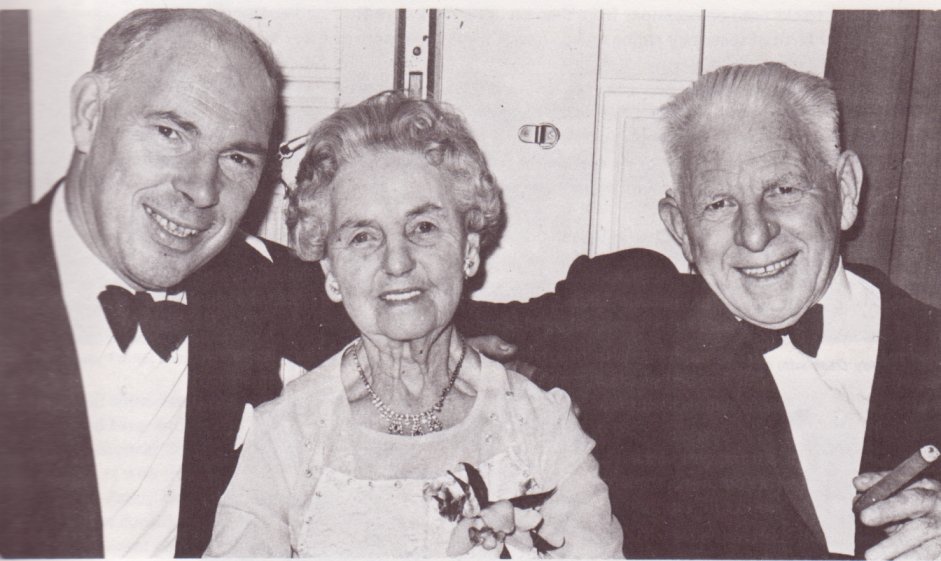 |
| |
|
The Hoskins, probably the most influential speedway
family of all time Ian, Audrey and Johnnie
|
| |
| |
|
| |
| |
|
USA Board Racing
|
| |
| We are used to seeing cyclists racing
around Velodromes. A Velodrome is usually a wooden, banked
oval race track, for cycles, but not suitable for high powered
motorcycles. In years gone by USA's motorcycle fans could
watch stripped down motorcycles racing around Board Tracks which
were similar to the Velodrome but larger and outdoors. |
| |
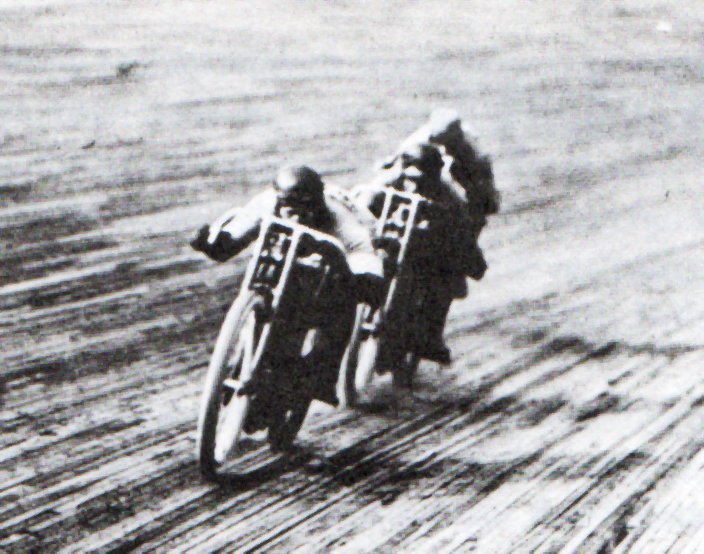 |
| |
|
Board
Racing started in the USA in the early1900's.
The bikes were mainly Indian and Harley Davidson. Like speedway they
had no brakes and a fixed gear so it is a close cousin to speedway.
The bikes have been stripped down in much the same manner that
Dirt Track bikes were a few years later. |
| |
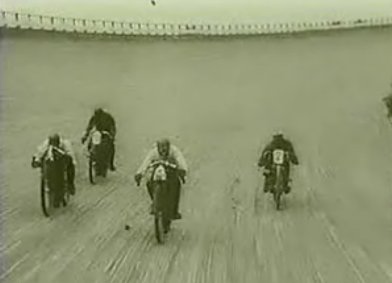
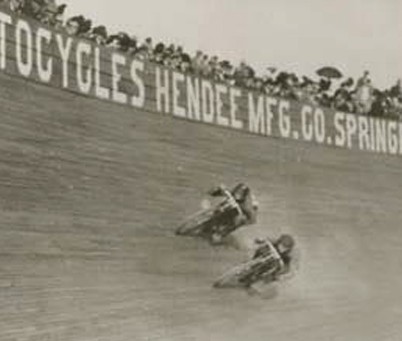 |
| |
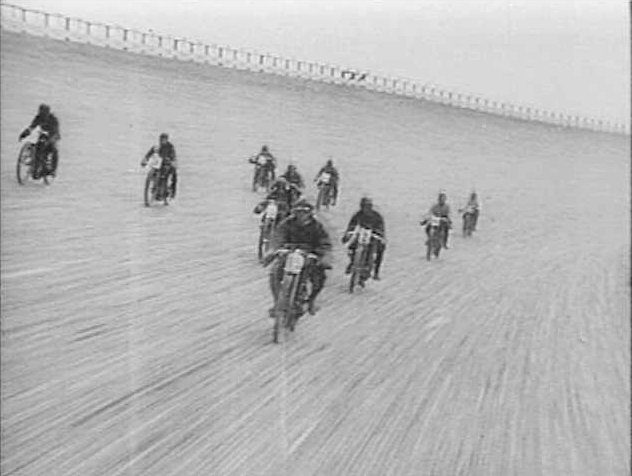 |
| |
| Outdoor board tracks needed the wooden
boards replacing after only 4 or 5 years and the high costs
involved signaled the end. This form of motorcycle racing
only lasted from the 1910s until the 1920s and was an American
only spectacular. |
| |
| |
|
| |
| |
Kansas
USA
1920
At Dodge City |
| |
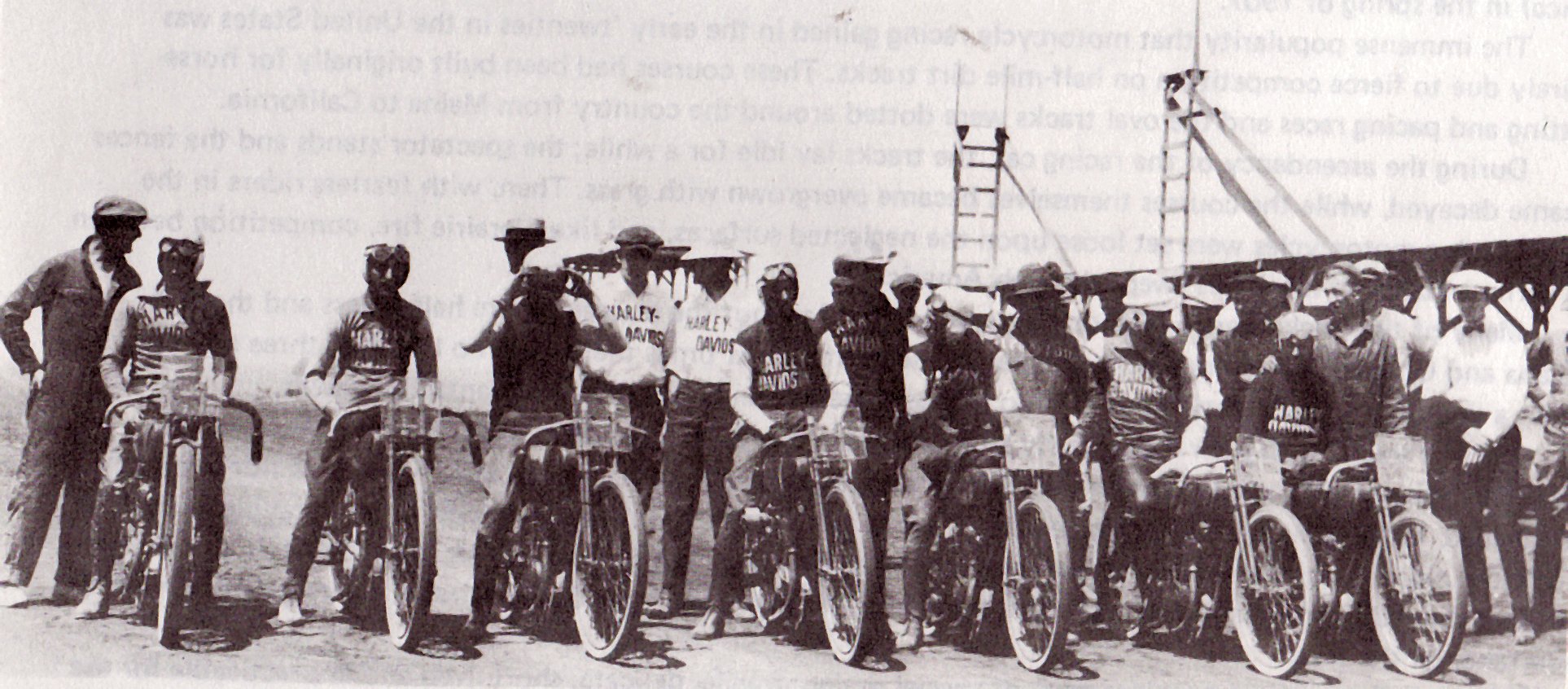 |
| |
USA 1920. at Dodge City
Maldwyn Jones, Fred Ludlow, Ralph Hepburn, Jim Davis, Ray Weishaar,
OttoWalker, Walter Higley
Maldwyn Jones is said by some to have been the first rider to master the art of
broadsiding, if so then he must have had a massive advantage over his
rivals |
| |
| |
|
| |
| |
|
Harold
"Tiger" Stevenson
|
| |
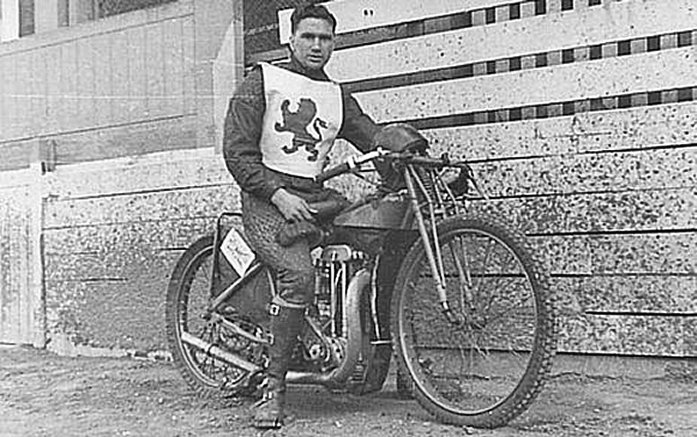 |
| |
|
| |
| |
|
1981 Ventura
Programme
(California
USA)
|
| |
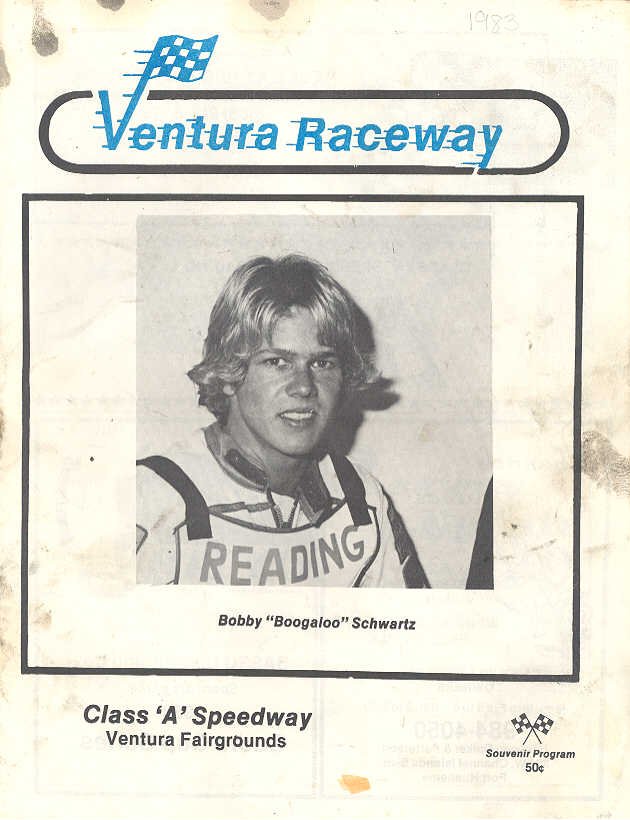 |
| |
|
|
|
| |
|
Two Of England's All Time Best |
| |
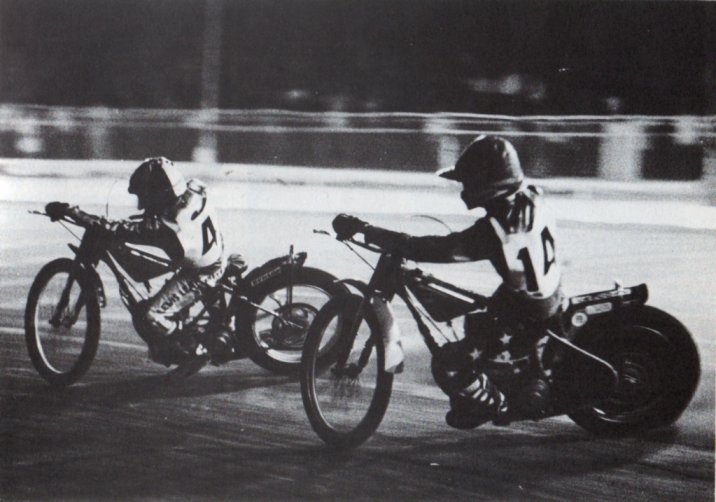 |
| |
|
Dave Jessup leads Michael Lee
at the Coventry British Final. I have included this
photo as I think it is a great action picture |
| |
| |
|
| |
| |
| Barnet Bypass
1930s |
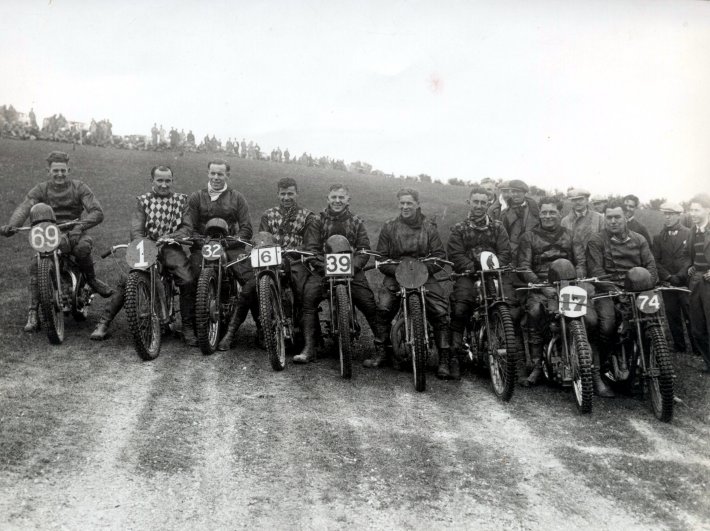 |
This photo is from my
Barnet Bypass webpage.
An early 1930s photo from Ann Bellingham (nee Scott)..
her dad Roland Scott is no 69, far left. The track
appears to be on a slope or was the photographer drunk! Does anyone recognise the other riders
John
Ann says her dad won many trophies
1930-1932 at this Barnet Bypass circut.
|
| |
|
| |
| |
|
Australia
1950
|
| |
| |
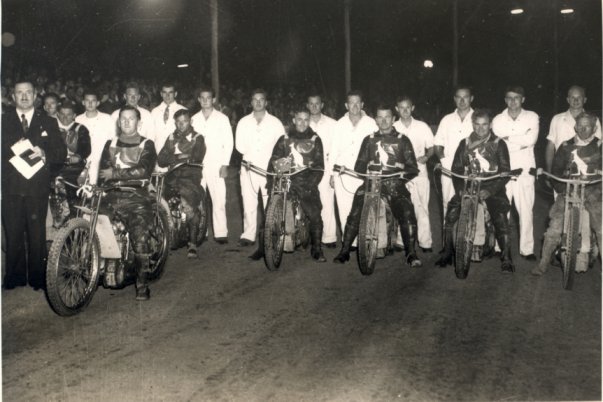
|
| |
1950 Australian team at Kilburn Speedway in Adelaide-
(track long since gone.)
The line up from L to R is Bob Leverenz, Bill Bryden, Jack Young, Aub
Lawson, Merv Harding, Lindsay Mitchell & Frank Young |
|
|
|
|
|
|
|
| |
Anglian Angels
|
| |
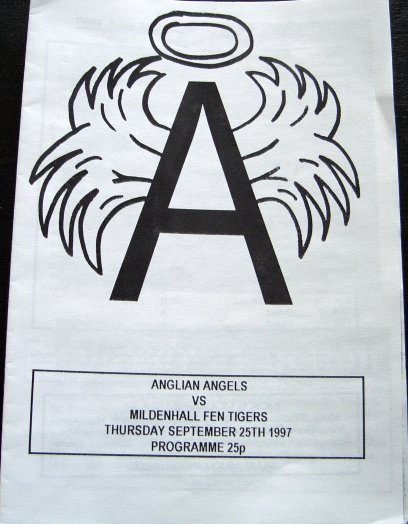
|
|
|
I am reminded by Mike Moseley that the Angels
staged their
home matches at Kings Lynn and Ipswich |
| |
|
|
|
|
|
|
|
|
Northside
Arena Workington |
|
|
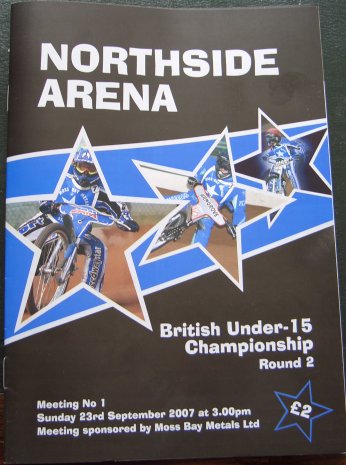 |
| |
Mike Moseley says there has only been one meeting under
the Northside banner at Workington. So what's gone wrong there, anyone know?
This programme has to be quite rare then?
|
| |
| |
|
| |
| |
|
Boris Samorodov's ESO |
| |
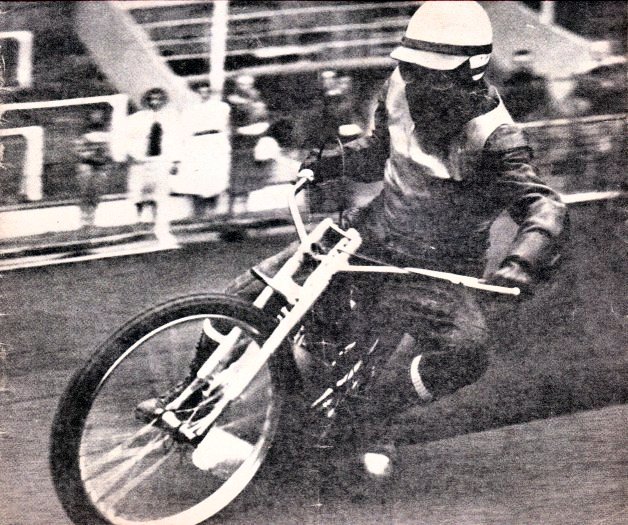 |
| |
|
Top 1960's Russian Boris Samorodov, ESO mounted, leaving
England's best in his wake
|
| |
| |
|
| |
| |
|
Mike Broadbanks |
| |
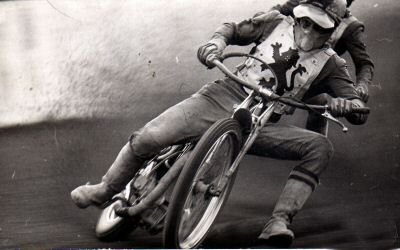 |
| |
|
This is
Mike Broadbanks, the Red Devil! An Englishman who could match the mighty Russians
in the 1960's Mike's unusual riding style came
about by him sitting well forward and gripping the handlebars well away
from the ends. He was great to watch. |
| |
|
|
|
| |
| |
|
Who Are
the Oldest
Surviving Riders
|
| |
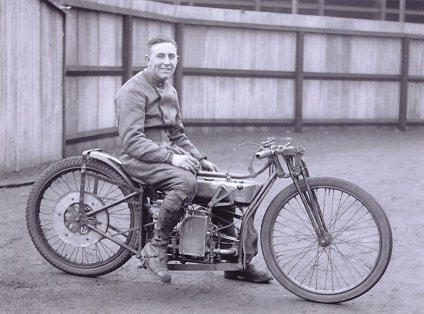 |
| |
|
Presently the oldest living rider is Newcastle's Gordon
Byers he is 96 years young at the time of writing (April 2008).
Gordon still lives in the city, he won
the first ever race at Newcastle's Brough Park, way back on 17th May 1929. He
started his Career at Middlesbrough in 1928 and Newcastle 1929 then he moved south, Leeds
first then Wembley.
|
| |
|
After Gordon there appears to be quite an age gap which it
appears can be measured in terms of was a rider riding Pre war because the
only other pre war rider alive today is Riskit Riley shown below |
| Update: Sadly, Gordon died just before Christmas
2008 |
| |
| |
| Is Riskit Still With Us? |
| |
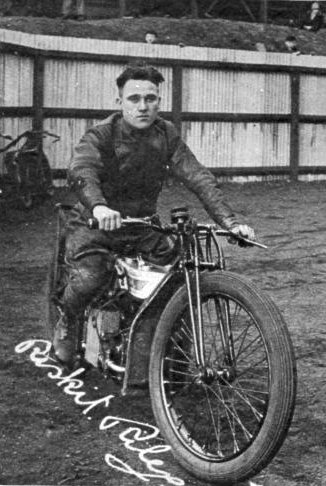 |
| |
|
Douglas mounted Riskit Riley. I don't know how old Riskit is now. If you can
help please email me
John |
| |
| |
| Jack Tidbury |
| |
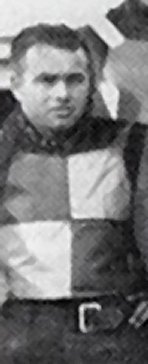 |
| |
|
Norman Jacobs has been in touch he says:
There is another pre war rider who is still alive. He is Jack
Tidbury who rode for Hackney in 1938 |
|
John says: Many thanks Norman, Jack was also a Middlesbrough Bear
in 1939.
here's a picture of Jack (see above). |
| |
|
|
|
| |
| |
|
Lady Riders
|
| |
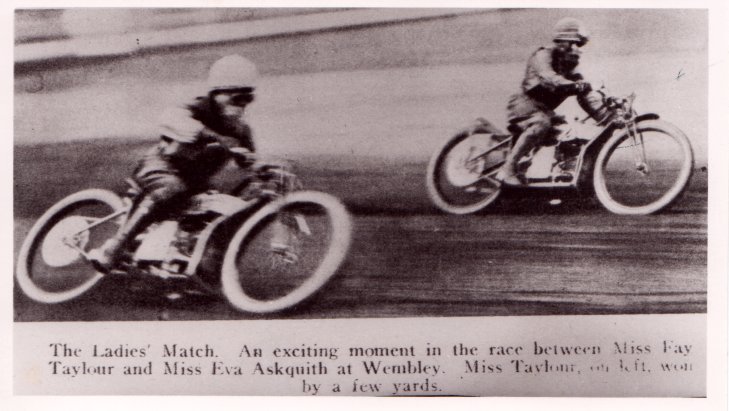 |
| |
|
Well before the days of women's lib, 1929, here we have 2 ladies mounted
on Douglas DT's and below not only a lady rider but a lady wielding a
spanner too.
|
| |
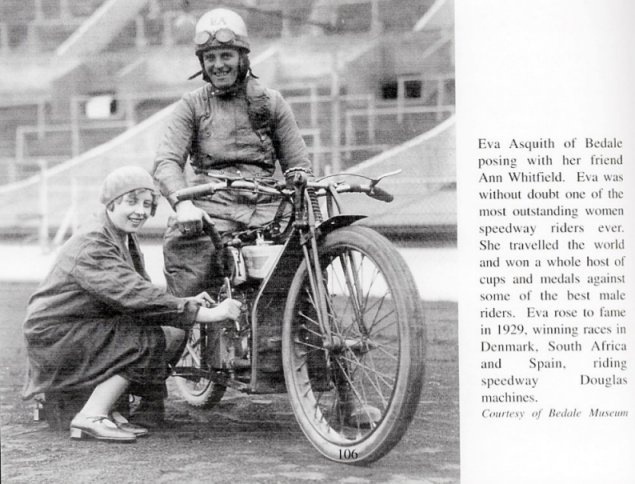 |
| |
|
From Ernie Crusts book "At The Drop
Of The Flag."
The spanner wielding Anne Whitfield is the sister of Harry
Whitfield
|
| |
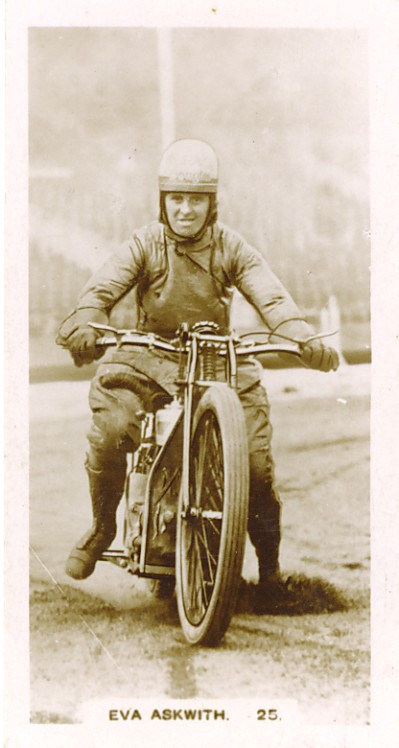
 |
| |
(3).jpg) |
| |
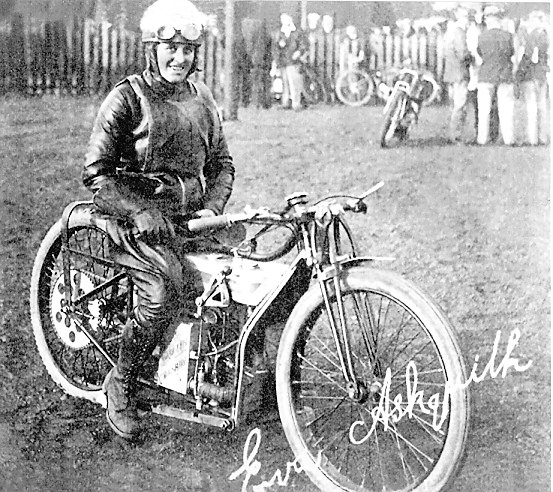 |
| |
|
This is Eva Askquith who came from Bedale in north Yorkshire
|
| |
| Col Greenwell
says:
I have a book that says Eva rode
against Gordon Byers in match races at Brough Park, Newcastle. Eva won the
first, Gordon the second but before the decider Eva was involved in a
triple crash and had to withdraw from the meeting. She did ride at
Gosforth the next night against the likes of Charlie Barrett and Smiling
Jim Kempster. At West Ham she beat Tiger Stevenson 2-1 in match
races. She rode as a reserve for Leeds at Sheffield and got a
second place. |
They should write a book about
her. She rode point to point, played cricket for the local cricket
team, not sure if that was a ladies team, she was a dispatch rider for the
national fire service during the war and was also a fire engine driver
Col |
| |
| |
|
Fay Taylour
At The
Douglas Factory
|
| |
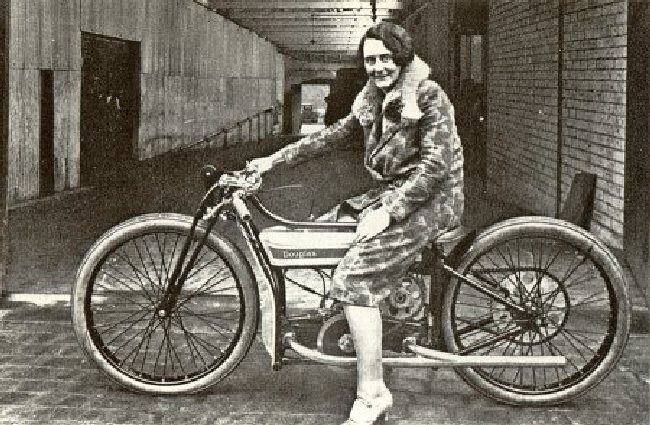 |
| |
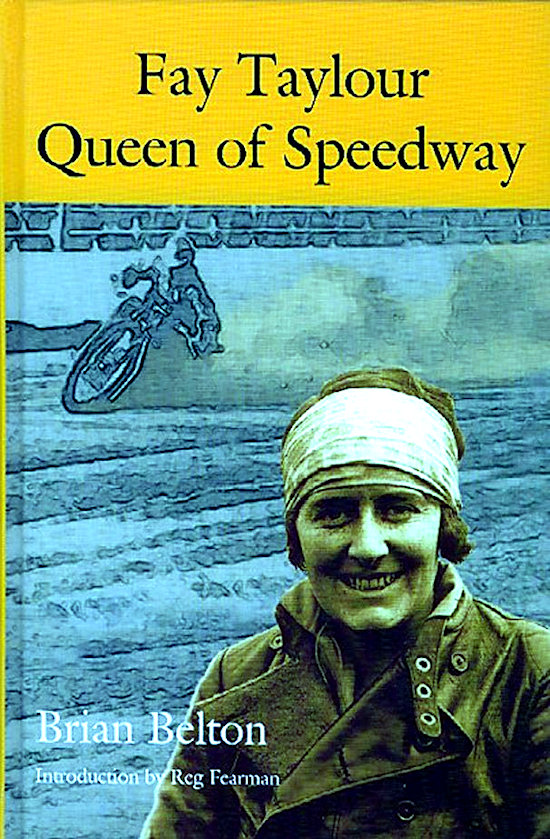 |
| |
| |
| Fay v Eva |
| |
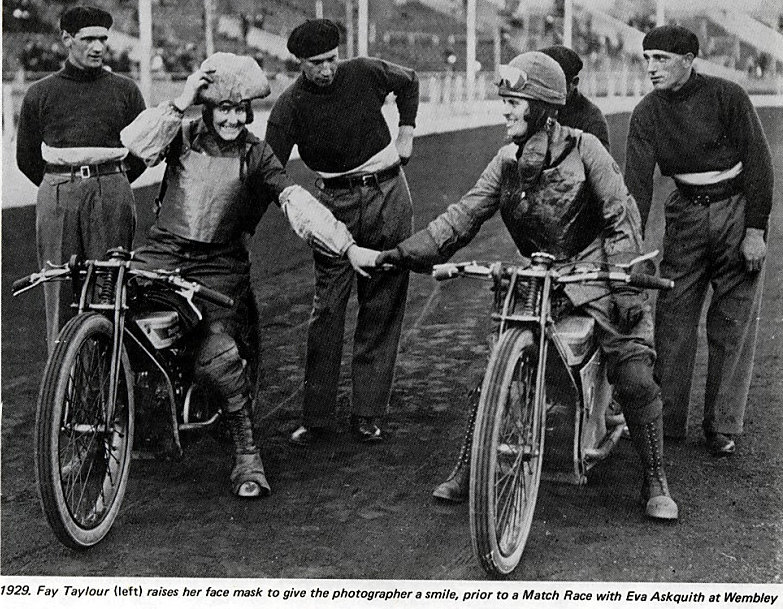 |
| |
| |
|
Other Ladies Of
The Early Dirt Tracks
|
| |
|
Babs Neild
& Dot Cowley
|
| |
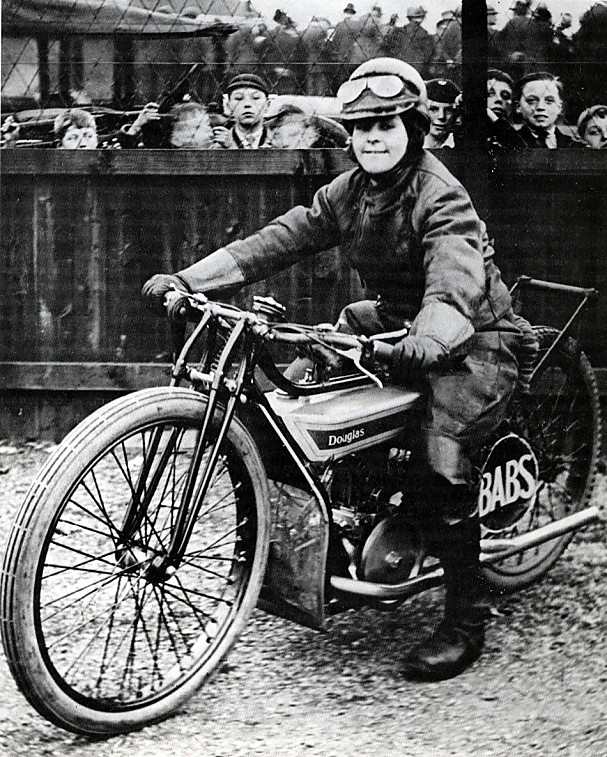
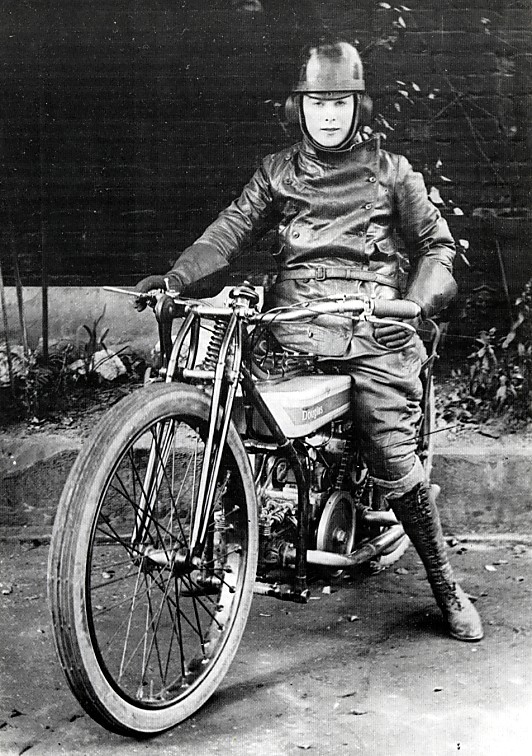 |
| |
| |
|
| |
| |
1929 Ron Johnson
& Jack
Parker |
| |
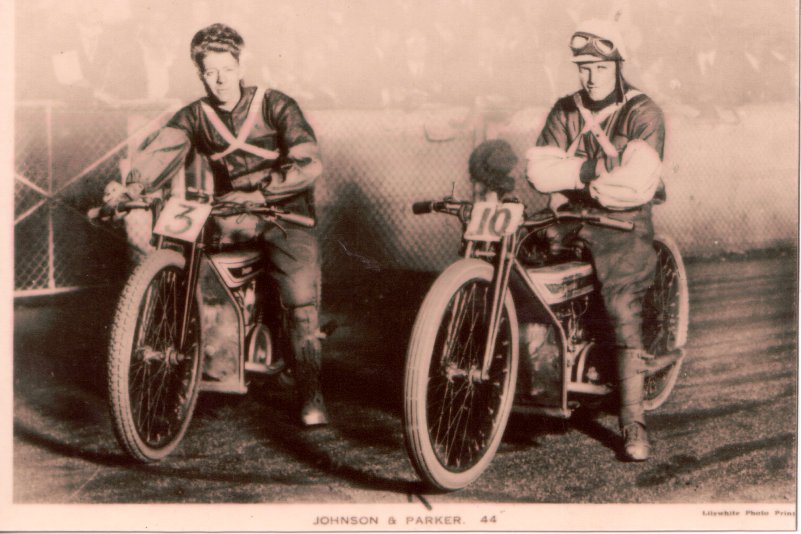 |
| |
|
1929 Ron Johnson
& Jack Parker mounted on Douglas machines. Can anyone say what track?
|
| |
|
| |
| |
|
1929 Squib Burton
On His Douglas
|
| |
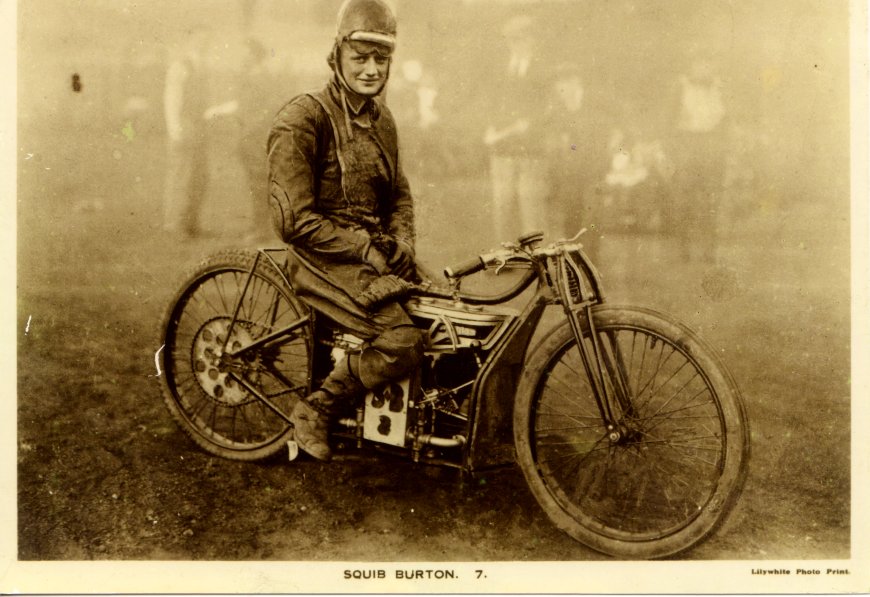 |
| |
|
|
|
| |
| |
| Ice Speedway |
| |
|
Ice Racer
|
|
Gerrit Schukken
|
|
|
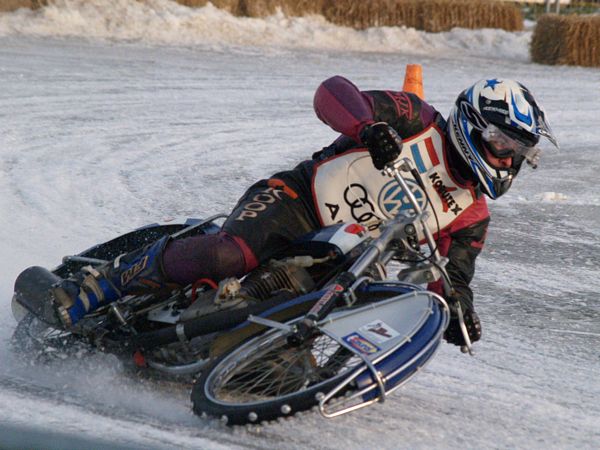 |
| |
| Gerrit's crazy angle is commonplace, no!
he is not falling off! |
| |
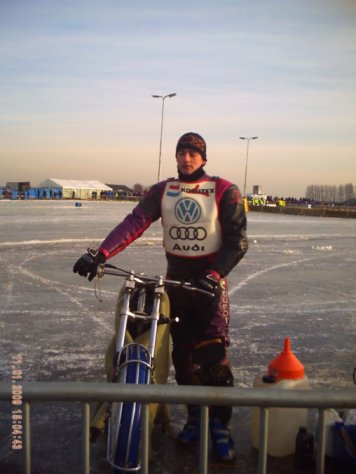 |
| |
|
Gerrit Schukken
|
| |
|
John says: Ice Speedway racing takes place in Russia,
Scandinavia and Holland (Not sure why Holland?). If you can add to
this shortlist and/or say why Holland has the weather conditions suitable for
ice speedway please let me know.
John |
| |
|
Gerrit Schukken
(pictured above) says: Hi
John,
I'm from Holland. in the north. Comparing the speedway bike with an ice
bike:
I think only the wheel hubs and transmission are the same ( maybe accept
the ratio ). the frame is special, wheels are front 23" rear 21" |
| |
| My
ice bike has no rear suspension. engine is 500cc 4stroke 2 valve Jawa, 2
valve is max in ice race methanol powered about 55 ps, no titanium allowed
on bike. and the minimum weight is 115 kg ( changes sometimes a bit )
interesting to know in about 1990 my friend Tjitte Bootsma, Dutch GP rider
than started to improve the java frames. he than came with a own
frame with rear suspension, every one laugh at him. but soon they
learn that it was the new evolution of ice racing. |
| |
|
Java also came with a rear suspension
but it was not perfect. A few years later they copied his frame ( almost
exact ) but still it wasn't super. This "tibo" frame also was copied by
Russian mechanic due to lower quality steel and poor welding also this
frames aren't very good. I think 90% of the drivers now in GP drive on
this frames, and if there would be ( like F1 GP) a constructors title he
would have it for many years now. This is a bit advertising :) the most
used engine is still the Jawa 4 stroke 2 valve methanol powered engine. |
| |
|
But still, I just started ( I hope to improve ) ice racing last year. Set
to learn it on an "oldtimer" Jawa. it is a money issue. I think its a
super interesting sport and hope to continue it.
Don't know if your interest goes to the sport or only to the bikes but
anyway mine is both! |
Well if you want to learn more about it I can help you I think, maybe ask
some specific questions, if I don't forget I will send you some pictures
of my bike, the pics i sent is me on Tjittes old competition bike on which
he started.
Greetings Gerrit Schukken Holland |
| |
|
John says: Hi
Gerrit, I am fascinated by Ice Racing and would love to see your
pictures. The sport looks much faster than dirt track speedway
despite the older engines
John. If I was wealthier
I would make frequent winter trips to watch the sport. |
|
|
| Gerrit says:
Maybe this will attract some sponsors for
me! You want to know why
Holland has ice racing. Well in early days there was bit more strong
winters and we have a lot of lakes, you do the math! and of course we have
a lot of crazy ( read fanatic ) speedway riders. there not a lot of riders
left, now about 3 of 4 active riders, if we get more winters it will be
more. Assen, ( place from TT) has a organisation who organizes a world
championship every year still, and the riders who are active are very
driven to ride it. |
Also check
www.renestellingwerf.nl site of friend of me who, has a good
chance qualifying for GP this year
greets Gerrit |
| |
|
John says: Ok
Gerrit, I would be pleased to hear you have a sponsor after putting this
on the website. Best wishes to your friend on reaching the GP...John |
| |
1960's
Ice Racing |
| |
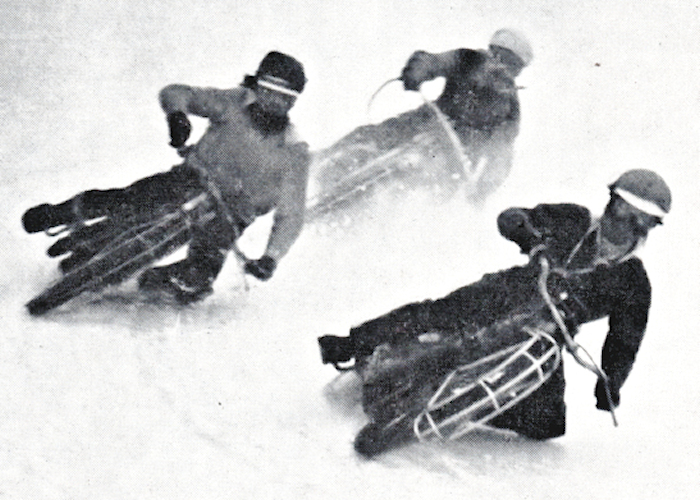 |
| Courtesy of John Spoor |
| |
| |
Assen
Ice Speedway
World Championship |
| |
| Possibly The Last Ever Race Meeting at
Assen! |
| |
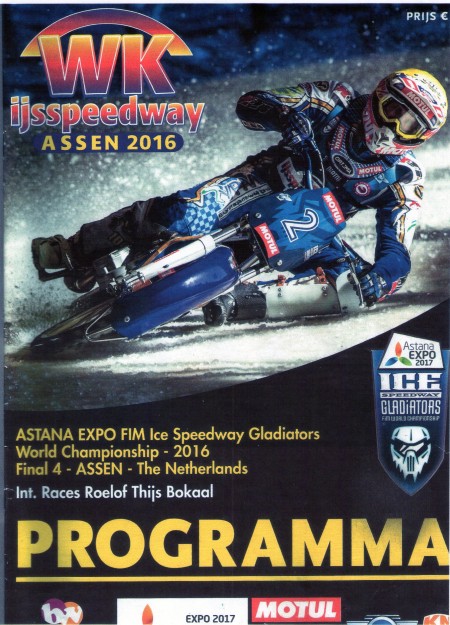 |
| |
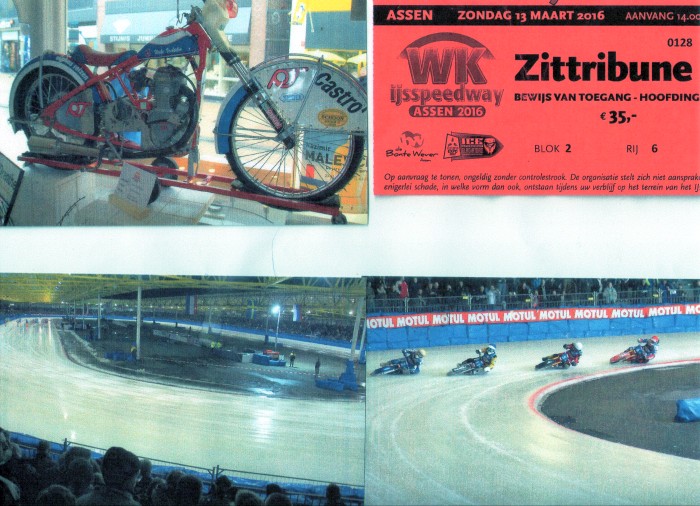 |
| |
| |
|
| |
|
Miscellaneous Page 2
|
| |
|
|
The contents of the
site are © and should not be reproduced
elsewhere for financial gain. The contributors
to this site gave the pictures and information
on that understanding. If anyone has any
issue or objections to any items on the site
please
e-mail and I will amend or remove the item. Where possible credit
has been given to the owner of each item. |
|
|
|
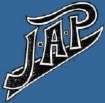

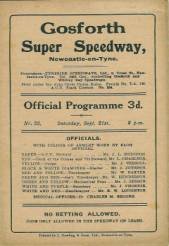
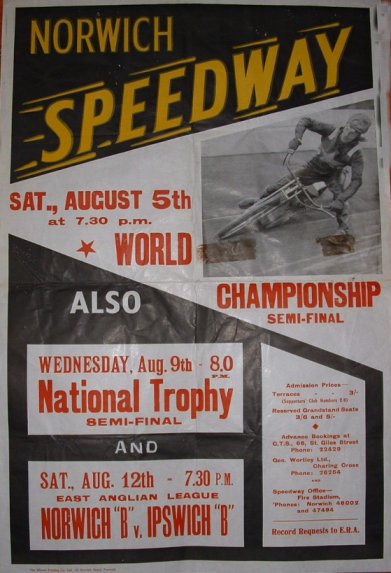

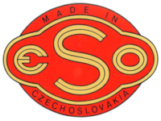

|
